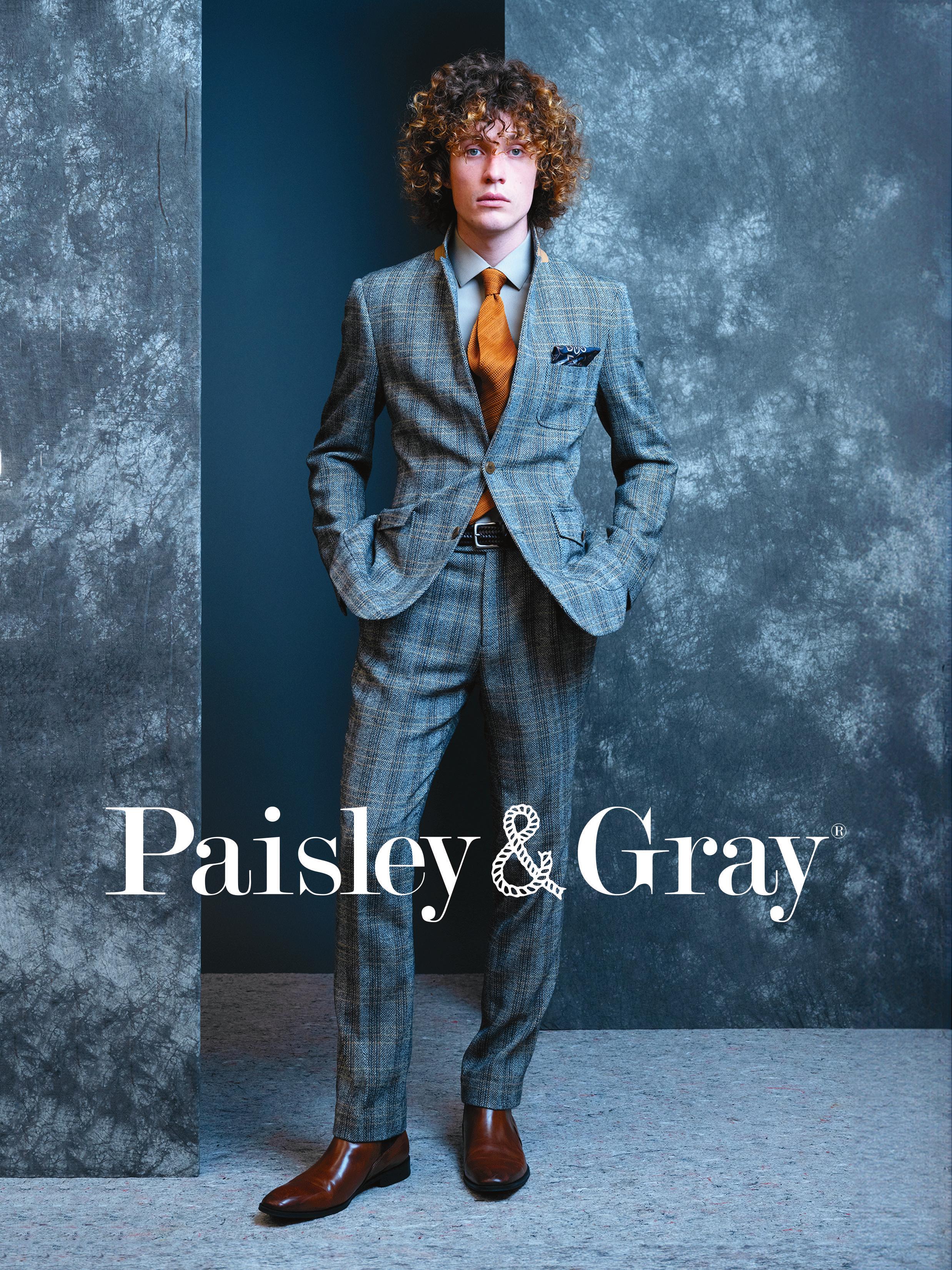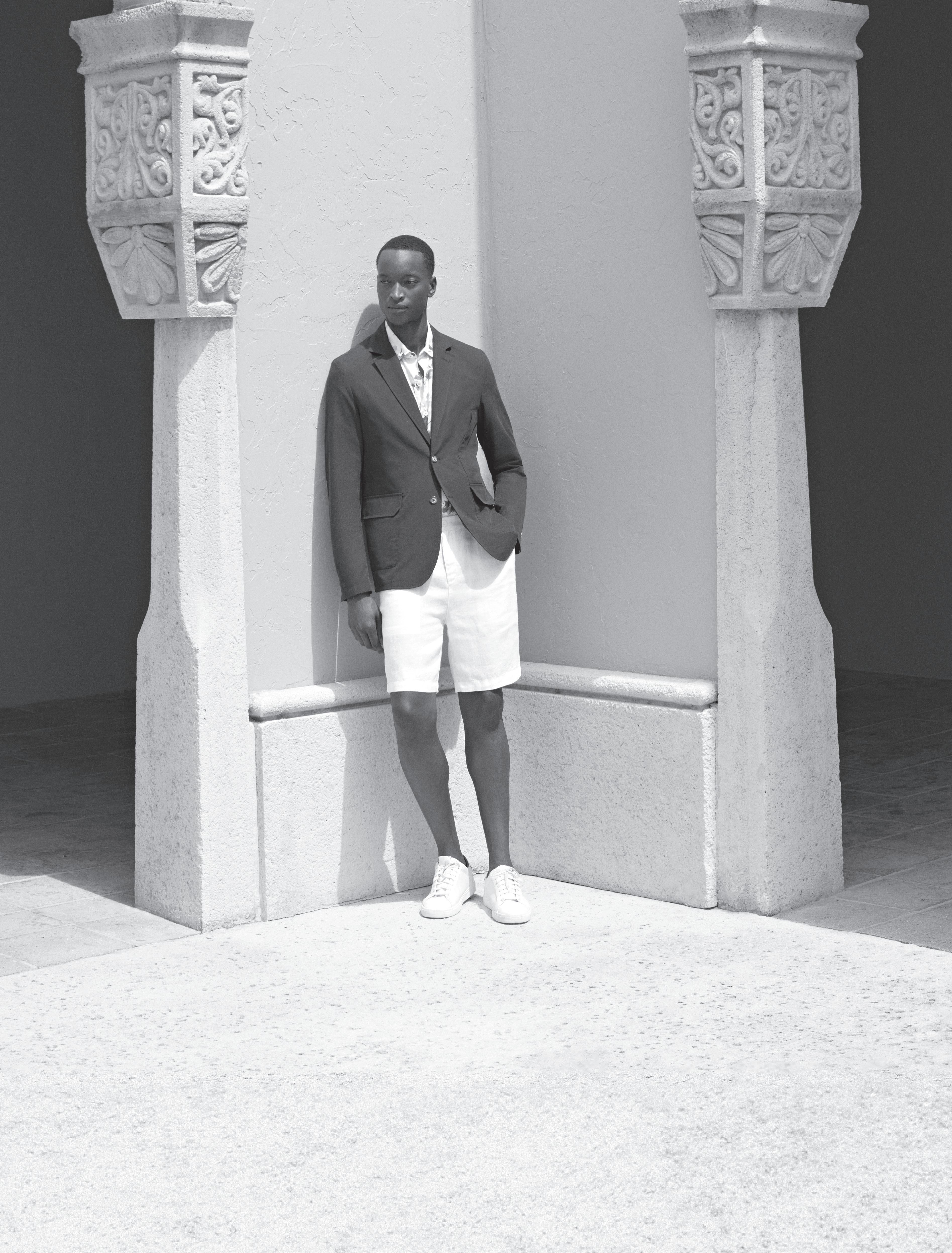
































Kenneth Cole | KENNETH COLE PRODUCTIONS, INC | Humanitarian Award
George Feldenkreis | PERRY ELLIS INTERNATIONAL | Lifetime Achievement Award
David Rubenstein | RUBENSTEINS | Hall of Fame Award
Todd Epperley & Al Leinen | HALLS | Retailer of the Year: Department Store Award
Alan Gibeley | GIBLEES | Merchant of the Year: Specialty Store Award
Ouigi Theodore | THE BROOKLYN CIRCUS | Retail Brand of the Year Award
Erin Hawker | AGENTRY PR/FOUNDER, NEW YORK MEN’S DAY | People’s Choice Award
Dapper Dan | DAPPER DAN | Vanguard Award
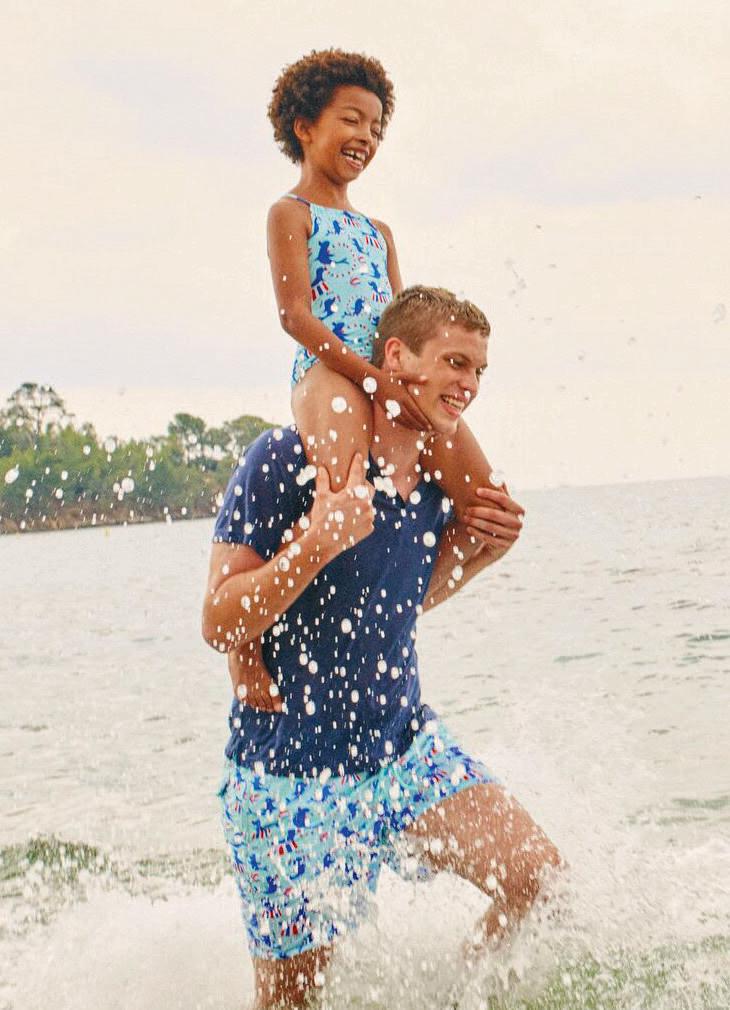
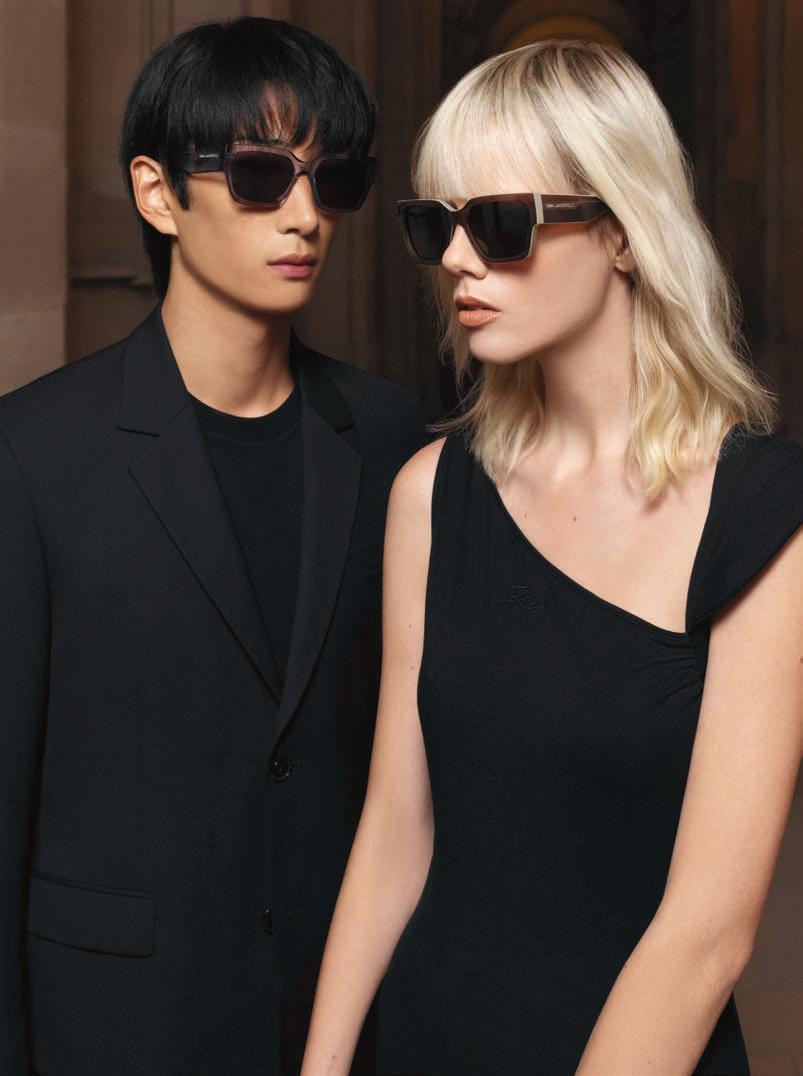






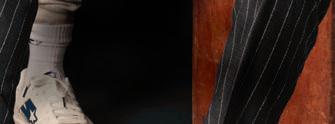







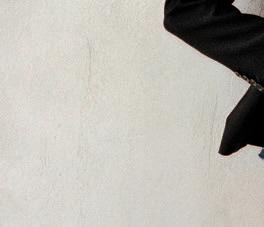








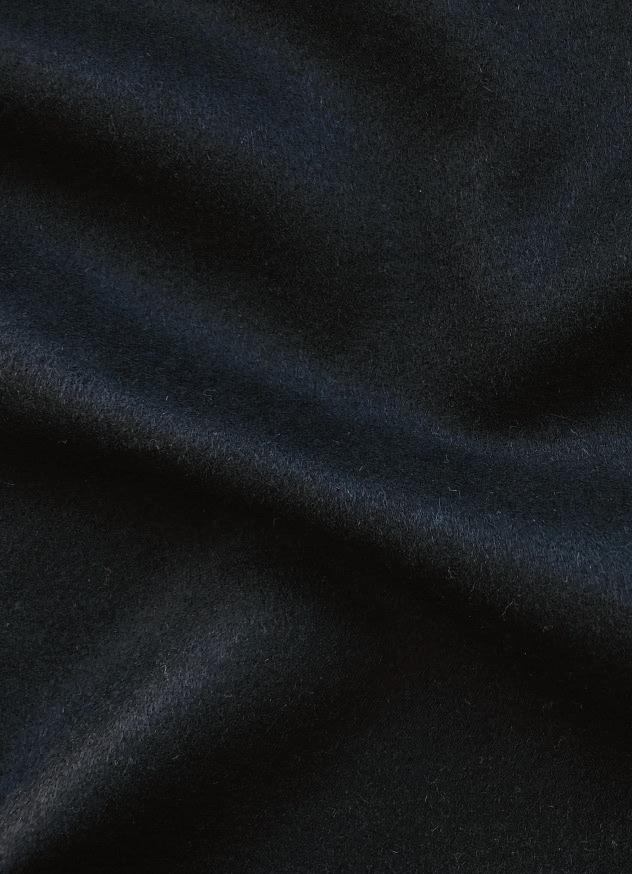
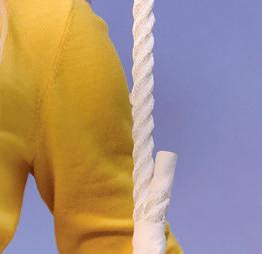
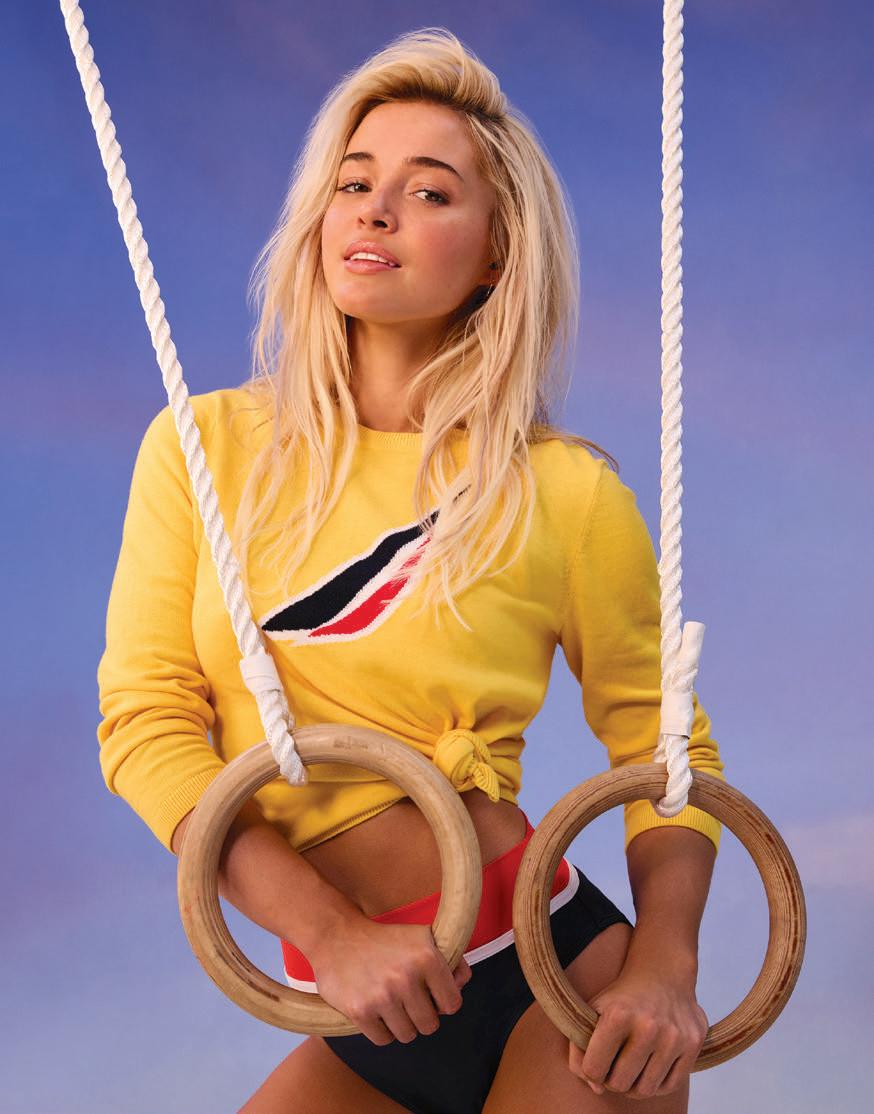

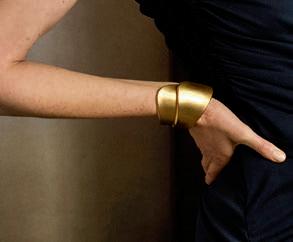
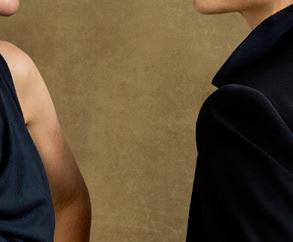

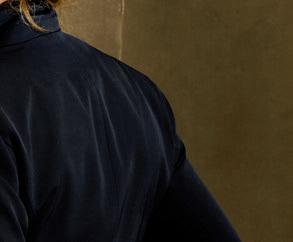



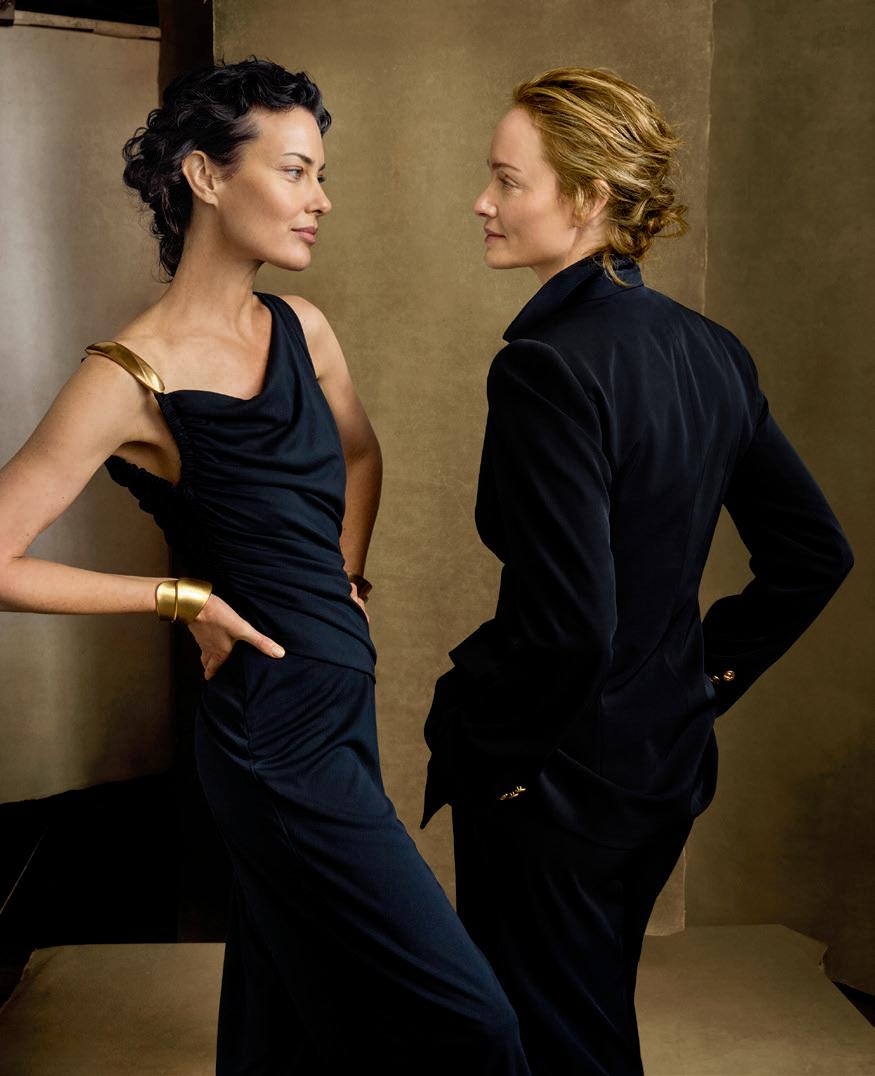






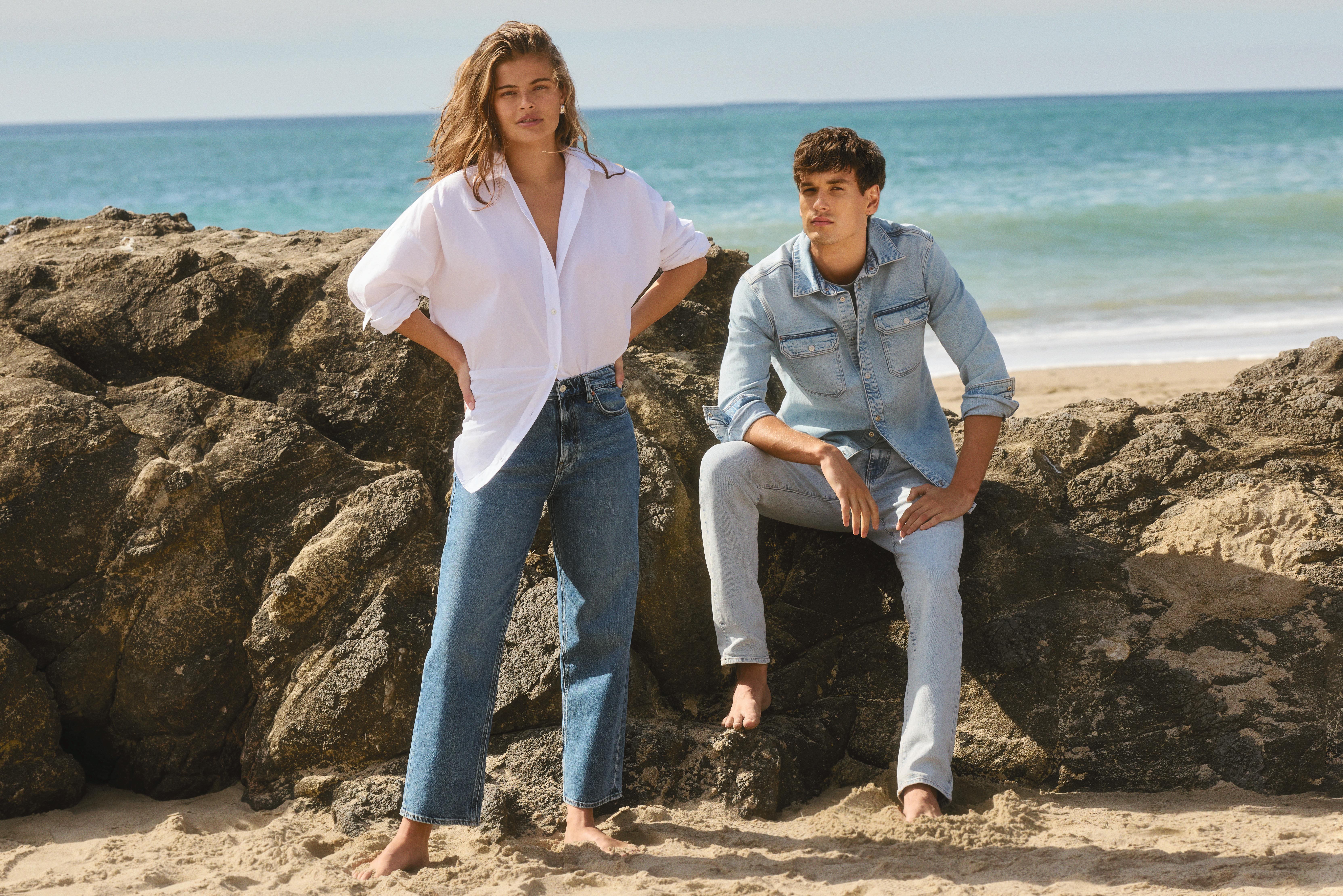

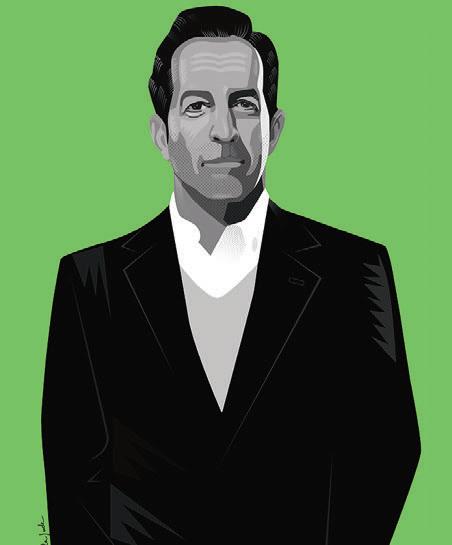
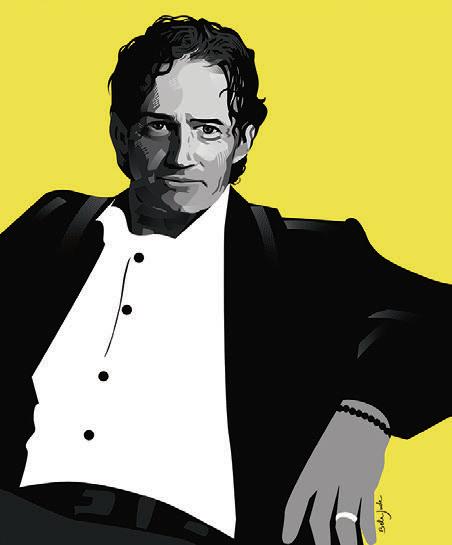


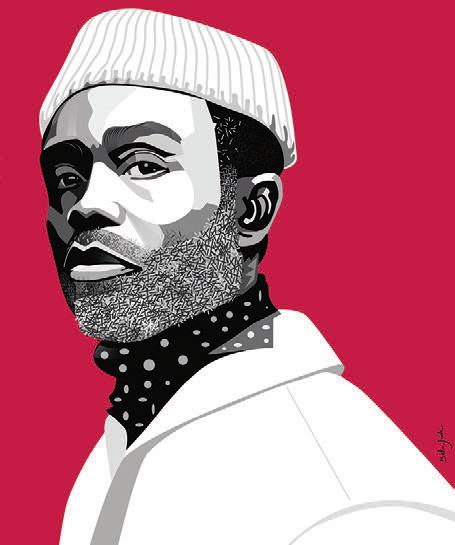
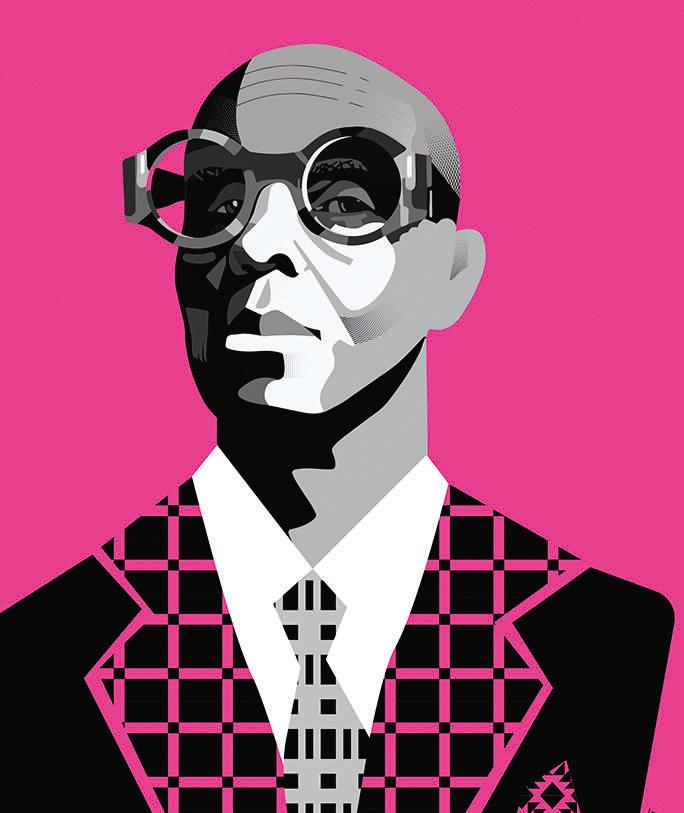
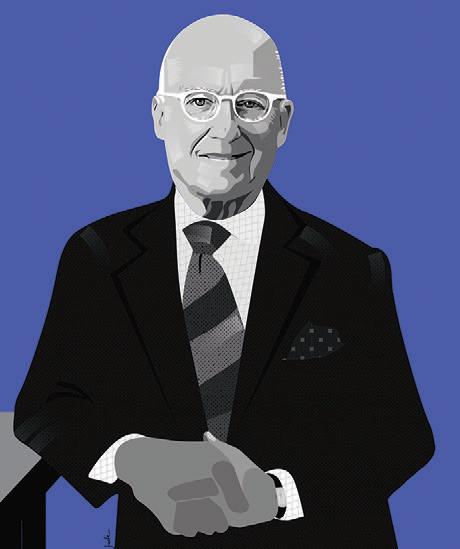
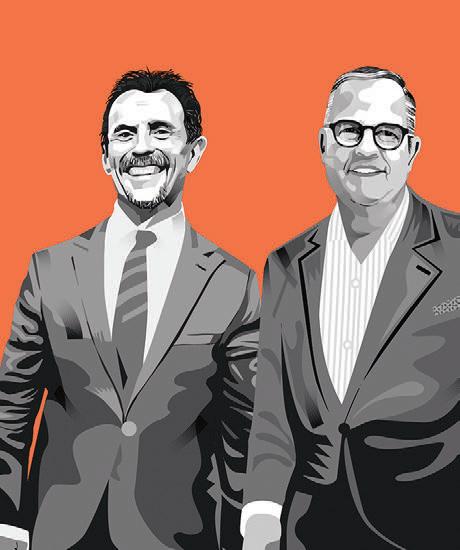
18 Kenneth Cole, Kenneth Cole Productions Humanitarian Award 24 Ouigi Theodore, The Brooklyn Circus Retail Brand of the Year
30 Alan Gibeley, Giblees Merchant of the Year: Specialty Store
36 Dapper Dan Vanguard Award
40 Erin Hawker, Agentry PR/ New York Men’s Day People’s Choice
44 Todd Epperley & Al Leinen, Halls Merchants of the Year: Department Store
50 David Rubenstein, Rubensteins Hall of Fame
56 George Feldenkreis, Perry Ellis International Lifetime Achievement
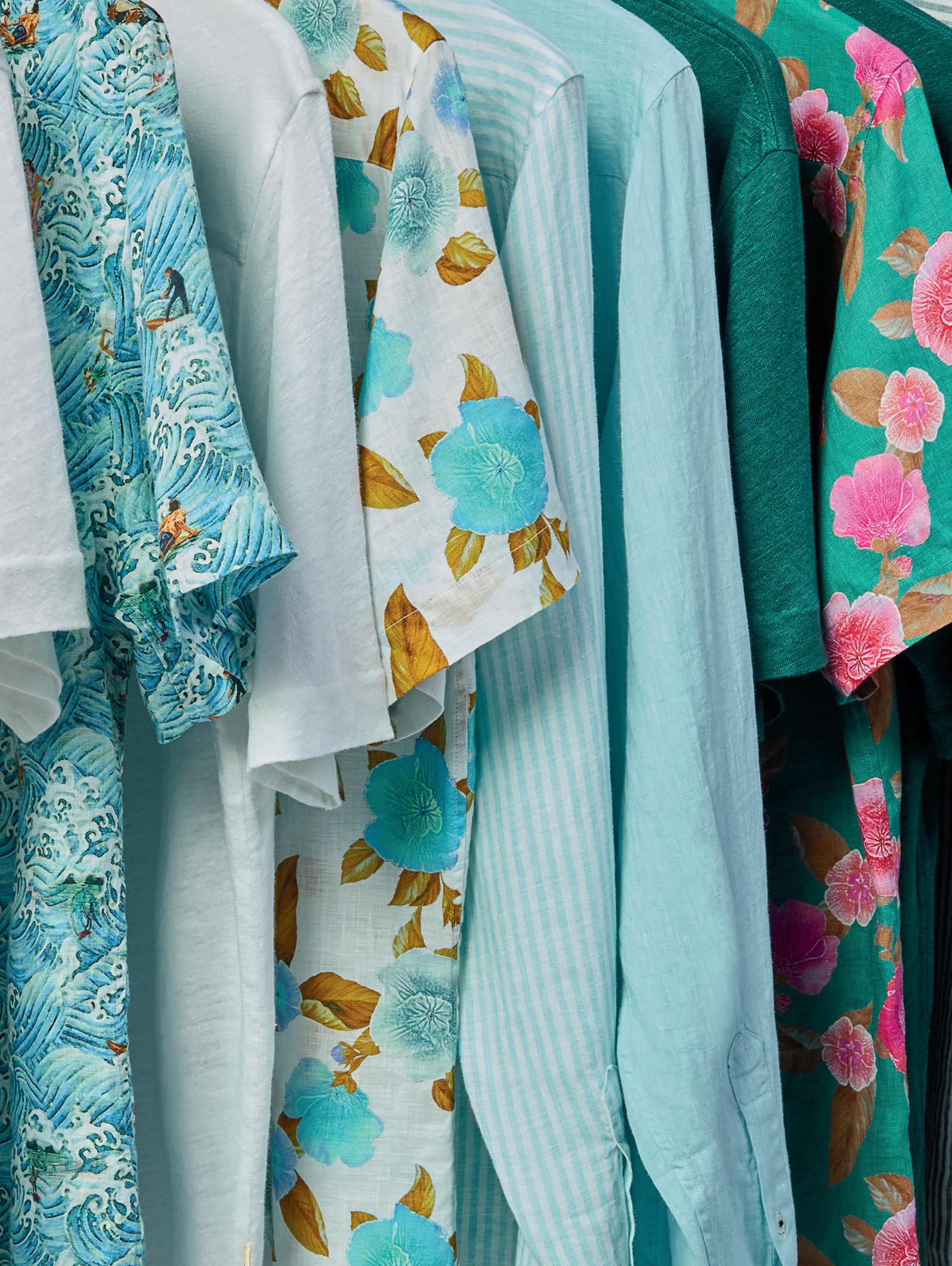
EDITOR-IN-CHIEF KAREN ALBERG GROSSMAN
FASHION & CONTENT EDITOR JOHN RUSSEL JONES
CONTRIBUTING EDITOR MICHAEL MACKO
ART DIRECTOR KARA KABLACK
CREATIVE DIRECTORS NANCY CAMPBELL TREVETT MCCANDLISS
GROUP PUBLISHER LIZETTE CHIN
ASSOCIATE PUBLISHER CHARLES GARONE
PRODUCTION MANAGERS LAURIE GUPTILL, FERN MESHULAM, KATHY WENZLER
MARKETING & PRODUCTION SPECIALIST CATHERINE ROSARIO
OFFICE MANAGER PENNY BOAG
ACCOUNTING KASIE CARLETON, URSZULA JANECZKO, BRUCE LIBERMAN
TINA ANIVERSARIO NORDSTROM SAM GLASER STITCHED
KARL-EDWIN GUERRE NO CHASER/GUERRISMS
KATIE LIU & MICHAEL KREIMAN BLACK DOG 8 SHOWROOM ALAN LEINEN HALLS
STEVE PRUITT BLACKS RETAIL
CHAIRMAN CARROLL V. DOWDEN PRESIDENT & CEO MARK DOWDEN
CHIEF FINANCIAL OFFICER/VICE PRESIDENT STEVEN RESNICK
SENIOR VICE PRESIDENTS LIZETTE CHIN, RITA GUARNA VICE PRESIDENTS NIGEL EDELSHAIN, THOMAS FLANNERY, NOELLE HEFFERNAN, MARIA REGAN
ONE MAYNARD DRIVE, PARK RIDGE, NJ 07656 WWW.MR-MAG.COM • WWW.WAINSCOTMEDIA.COM


IT’S GREAT TO BE KNOWN FOR YOUR SHOES, BUT IT’S BETTER TO BE RECOGNIZED FOR YOUR SOUL. –KENNETH COLE
Congratulations to the recipient of the Humanitarian Award: Kenneth Cole, and to all of the other 2024 MR honorees.

Each year, as we prepare for our MR Awards Dinner (this, our 17th edition, to be held on July 15th at Gotham Hall, NYC), we take time to ponder how the honorees got to where they are. What made them successful? What factors and character traits have accounted for such widespread respect, within the fashion industry and beyond? Although our award winners seem to be unique individuals from very diverse backgrounds (Haiti to Harlem to Havana), one finds many common denominators not attributable to coincidence. Big dreams, hard work, the courage to take risks and make mistakes, the wisdom to learn from those mistakes, a penchant for giving back and making a difference, this is the stuff of greatness.
• Erin Hawker, founder of her own PR agency and architect of New York Men’s Day, always wanted to write for WWD so she moved to NYC and camped out in the lobby of Fairchild’s executive offices until she got an interview, and ultimately a job!
• From grade school on, Alan Gibeley loved working with his dad in the family
clothing business. Two years after losing his dad, Alan has greatly elevated the product mix, adding Italian and European labels. He’s also notably expanded the store and nurtured a team of young sellers who are as passionate about the business as he is, taking them on market trips and teaching them the nuances of the menswear business.
• Al Leinen and Todd Epperley also exemplify a team approach to business: although not owners of this 108-year-old, much admired department store (owned by Hallmark), their fashion/business savvy has greatly impressed suppliers, gaining them access to top luxury brands. They also take promising young sellers into the NYC market, igniting their passion and expanding their knowledge, which shows up on the bottom line.
• Ouigi Theodore was born in Haiti and moved with his family to Brooklyn in the 1980s. He studied religion in college; his first store was called One Race. Inspired by the likes of Martin Luther King Jr. and Malcolm X, Ralph Lauren, Thom Browne, and Rick Owens, Ouigi is the only merchant we know with a 100-year plan for his business, The Brooklyn Circus.
• What can we say about this year’s Lifetime Achievement award winner George Feldenkreis ? Now chairman of Perry Ellis International, a company he founded and built from the ground up, George grew up in Cuba with modest means. He worked and studied hard through high school and law school but ultimately fled Castro’s prohibitive regime and started a business in Florida, importing first auto parts, then apparel. His high standards and somewhat stern demeanor bely a huge heart and a strong belief that we’re here on earth to give back.
• Another great humanitarian with a foundation that supports social and wellness causes, from AIDS research to mental health awareness, Kenneth Cole is considered by many a marketing genius. In addition to
creating fabulous footwear and apparel for men, women, and kids, his catchy advertising features inspirational phrases intended to make us think, make us act, and make a better world.
• Hall of Fame winner David Rubenstein is beyond proud of his family’s store reaching the century mark, a milestone he credits to his dad and uncle buying and expanding the real estate, which now houses a fabulous boutique hotel as well as the iconic store in NOLA’s renowned French Quarter. David considers himself the luckiest guy in the world to be working with family and seeing good friends every single day.
• A celebrity in his own right, Dapper Dan used to swim in the Harlem River and write for a radical newspaper called Forty Acres and a Mule He’s now a creative director for Sherwin Williams; his artwork is displayed in the Smithsonian, the Museum at FIT, the Metropolitan Museum of Art, and other prestigious venues. He views his work as “translating culture” rather than dictating fashion.
Congrats to all of MR’s 2024 award winners. Your initiatives continue to uplift and inspire us.

“BIG DREAMS, HARD WORK, AND THE COURAGE TO TAKE RISKS…”ROSE CALLAHAN
BY
PHOTO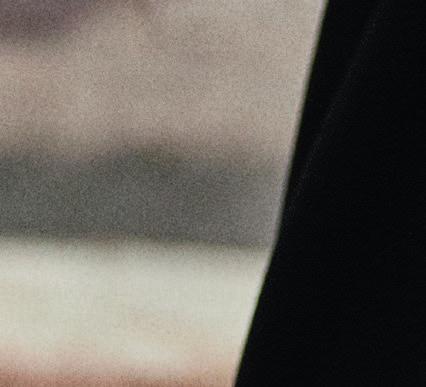
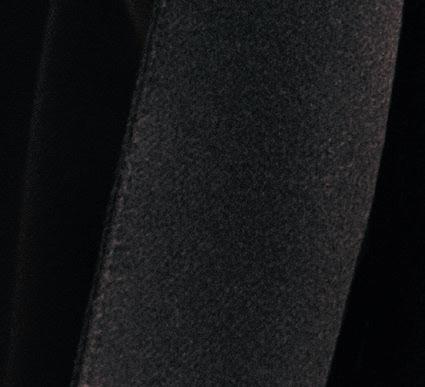

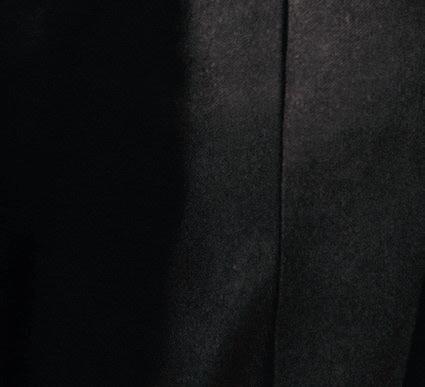
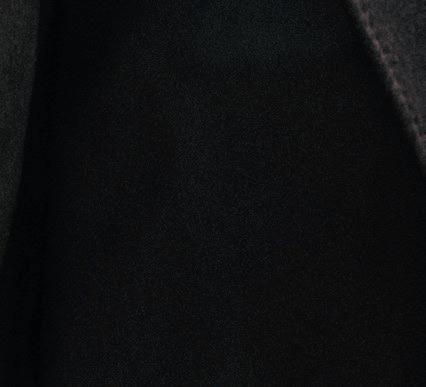

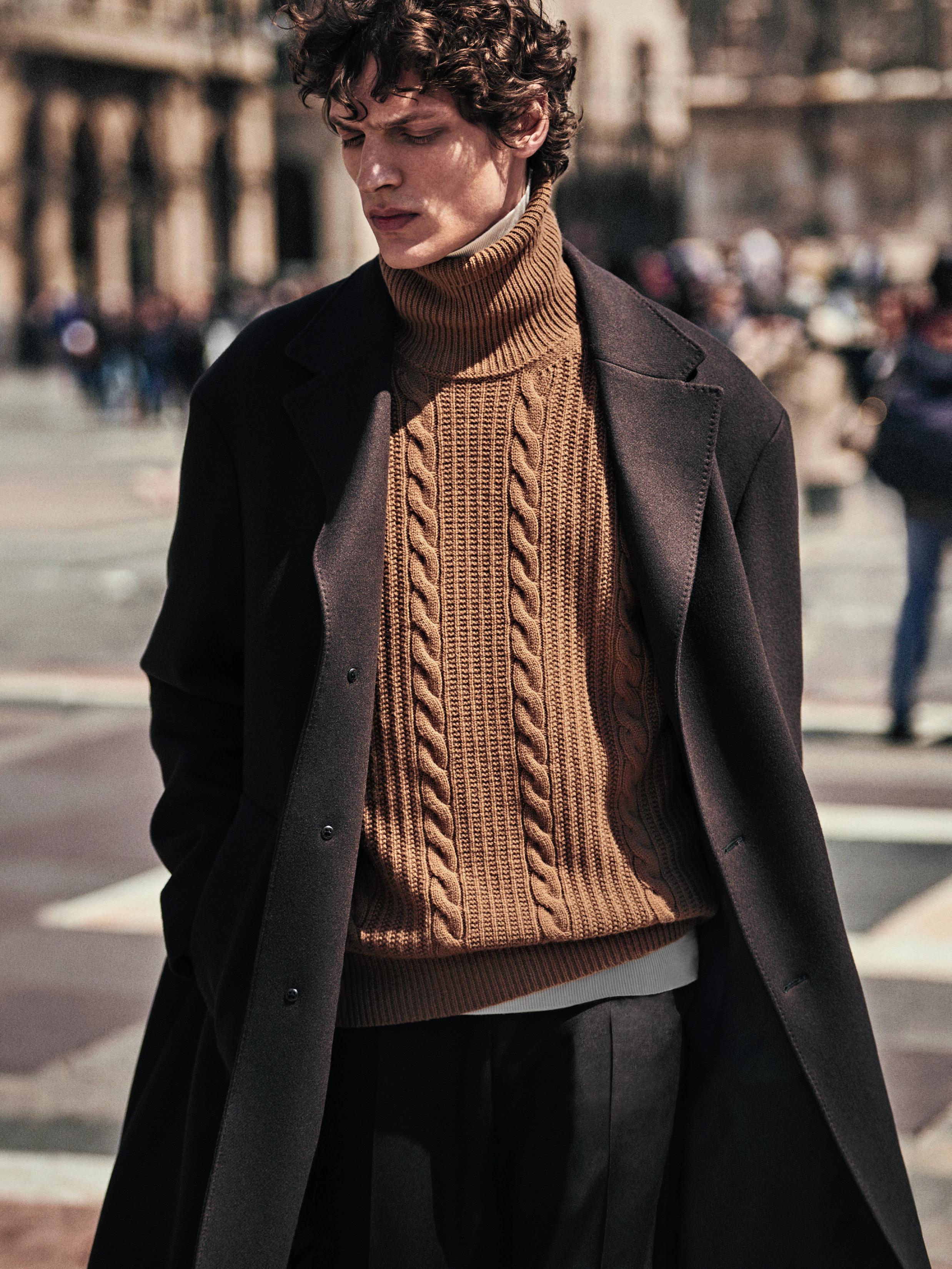



You painstakingly designed, showed, marketed, and produced a great line. The response from wholesale accounts was strong. Several retailers placed large orders and you shipped and delivered on time. Your payment terms were industry standard—which is to say very much in favor of the retailer—120 days have passed and you still have not been paid the full amount of your invoice. What do you do?
The point at which vendors need legal help to precipitate payment is a nuanced question. Your purchase order is a valid legal agreement and at its core provides that you are entitled to payment, (unless there is an RTV provision or some deficiency with your product or delivery of which the retailer has made you aware). But are you really going to sue to collect? In an era when even major department stores are known to be delinquent, this topic is particularly relevant.
You may be using a financial factor. If so, assuming you entered into a proper factoring agreement where the factor owns your approved accounts receivable, the problem is now theirs, i.e.,you’ve already been paid for the goods and it’s the factor who is tasked
with collecting. But what if you’re not using a factor or this account wasn’t approved? Again, bringing a collection action is relatively easy but really burns a bridge. Are you prepared to lose this account potentially forever? Perhaps that’s acceptable if it’s a small retail account, but what if it’s your biggest account? If it has come to the point where you’re considering suing, that retailer may be teetering on the brink of bankruptcy. If that’s the case, even once you’ve secured a judgement against the retailer, that judgement will become just another creditor claim, with no security interest in any of the retailer’s assets, not even the very inventory you never got paid for.
To mitigate the downside of an insolvent retailer declaring bankruptcy and effectively making your delivered but unpaid inventory an asset of secured creditors, brands can consider novel structures like selling the inventory through the retailer on consignment and then, as odd as it may sound, filing for a security interest on your own inventory. This at least can put a brand on equal footing with secured creditors. Additionally, if the brand learns
that the retailer is insolvent, a reclamation demand can be sought. Reclamation is one of the most desirable alternative methods of recovery from an insolvent retailer. Reclamation demands result in the vendor being able to reclaim the goods that have been sold to the retailer while insolvent, before the debtor files for bankruptcy,
So the points at which vendors should seek legal help is before the order is placed, or before the retailer files for bankruptcy. At these points, legal counsel can weigh in on whether a factor should be used or perhaps a consignment agreement with security interest. As in many legal situations, prophylactic measures are better than reactive ones.

Douglas Hand is one of the preeminent fashion lawyers in the country. His industry bona fides include member of the CFDA Fashion Awards Guild, chairman of the board of FIT, professor of fashion law at NYU and Cardozo Schools of Law, and recognized Super Lawyer for the past 10 years. He can be reached at dhand@hballp.com.
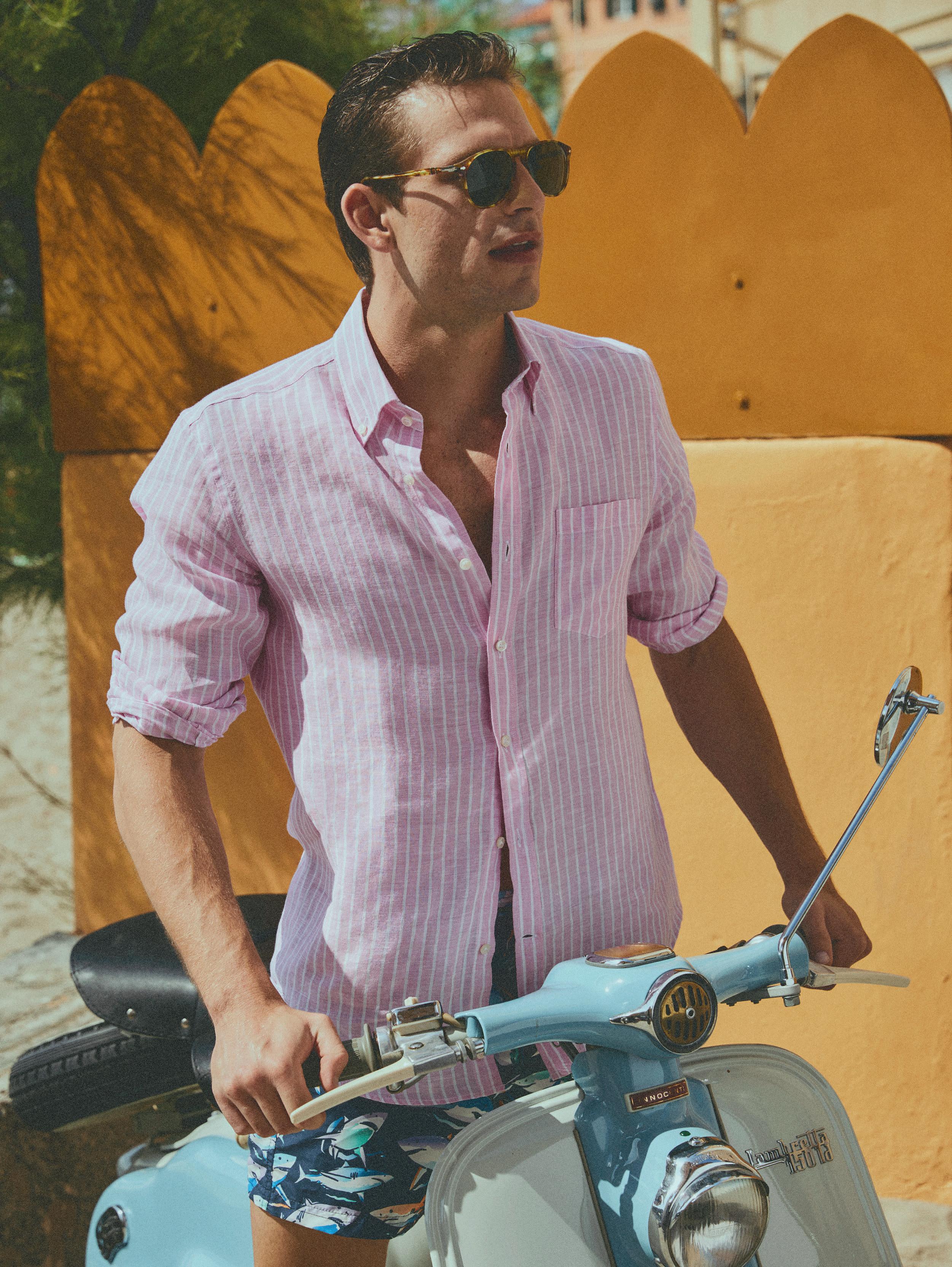
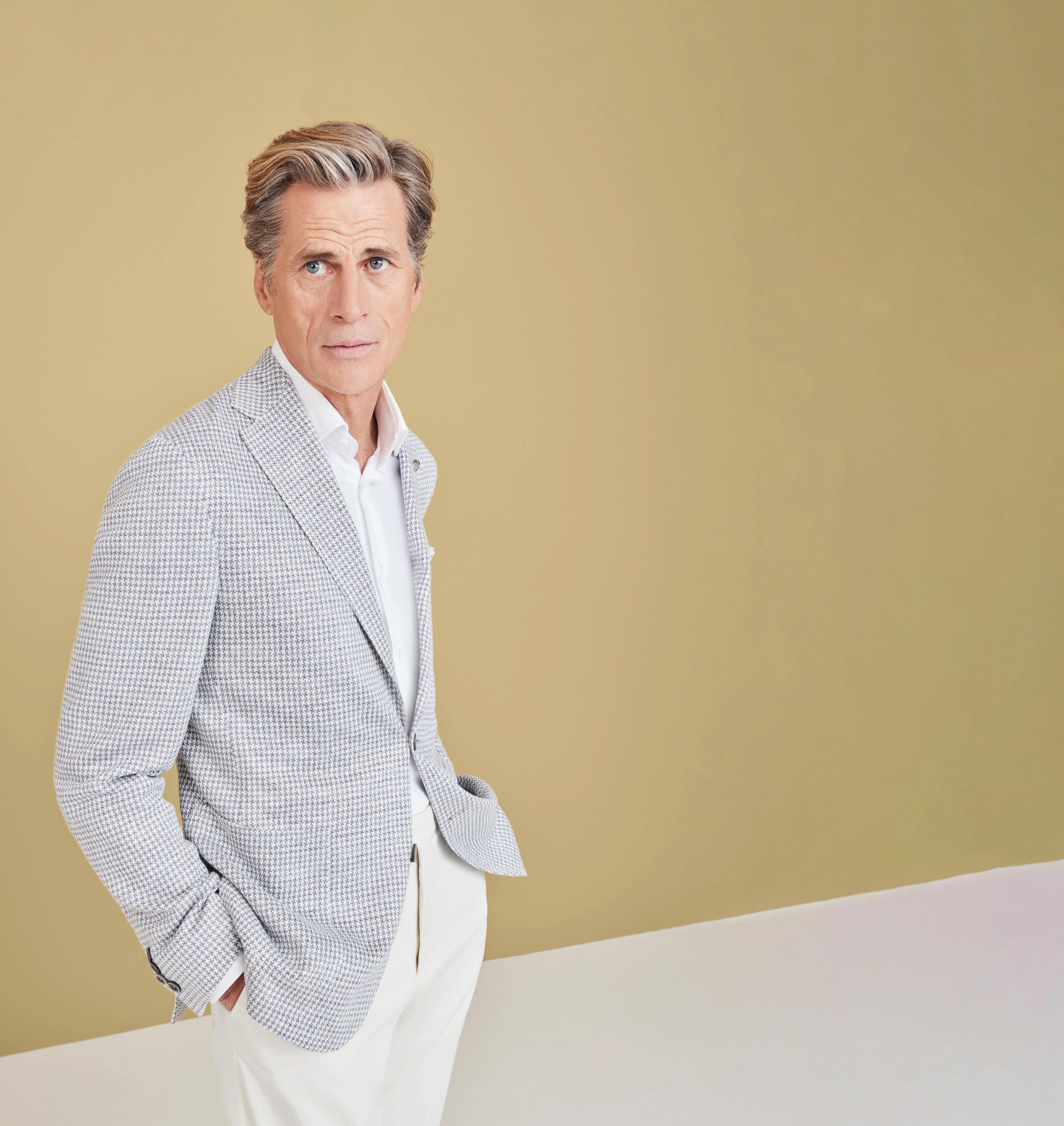
CONGRATULATIONS TO DAVID RUBENSTEIN, TODD EPPERLEY, AL LEINEN, ALAN GIBELEY, AND ALL THE HONOREES.
Success, as officially defined in the Oxford dictionary, means “the accomplishment of an aim or purpose.”
We prefer a different definition, one we discovered in writings by children with disabilities: “If you achieve what you want and are happy, that is success.” And to that, we add our own observation: the most successful people are those who follow their dreams and inspire others to follow their own.
May dreams come true for MR’s innovative and intrepid 2024 honorees. May you keep on creating!
Take a stand or step aside.By Karen Alberg Grossman
ow did you get started in the fashion business?
My father had a women’s shoe factory in Williamsburg, at the time a rough part of NYC. So my orientation from the beginning was women’s shoes. On my way to law school, I spent a summer working there. The factory manager had just left, and the business was the proverbial hand that fed us. So I worked there that summer, mostly to show my dad that I could do it. If he came in at 7:00 a.m., I’d show up at 6:30. If he left at 7:00 p.m., I’d go home at 8:00. I was intent on being taken seriously.
But I was mostly drawn to the pattern and sample rooms, intrigued by the knowledge that everything ahead of us would come out of those rooms. That you can take a shoe, modify the last, tweak the heel, use a slightly different leather, and it’s another shoe entirely. I loved the ability to create something from nothing, then modify it so it’s something else. I somehow believed that even though this was just a shoe business, it was part of something bigger.
Are you saying that fashion is unimportant in the scheme of things?
No, I believe it’s very important. Since most of our daily encounters are superficial, all people really know about you is how you present, and represent, yourself. Your wardrobe choices are the messages you send out to the world. We all wake up with a white canvas: we then tell the world whatever we want them to know about us. It’s something I’ve pondered over the years: it’s very powerful. If someone tells me they’re not a fashion person, my answer to that is, “Well that’s a statement, too! So at least be aware that you’re making it!”
What happened to law school?
I didn’t finish. The law, as I see it, is about a series of books; those who interpret them most creatively go the furthest. In the fashion business, you pretty much write your own book. And these days, you can write a new book every day. In my father’s factory, you
could make only so many pairs of shoes a day. You had a literal and figurative ceiling, and were surrounded by four walls. But there are no boundaries in today’s fashion universe.
So for me, fashion was the right choice. Recently, my oldest daughter joined the company. After practicing law for seven years, she’s now an aspiring creative director. We’ll see what happens. Will your other two daughters join you in the business?
I don’t think so, but then I didn’t think this one would, so who knows?
What’s a typical day for you?
There is no typical day. For 40 years I don’t think I’ve ever done the same thing on any two days. I believe that every day, one should assess one’s objectives, determine the obstacles to reaching those goals, and then figure out how to navigate through the obstacles. In the shoe business, we create an accessory that must complement all other wardrobe components. So that’s the immediate objective.
What are the broader challenges and obstacles you’re dealing with these days?
The big problem now for most of us: we know where we are, but we don’t know where we’re going. And it’s extremely hard to know because technology changes at such an accelerated pace that it’s impossible to keep up. And how do you combine all the new intelligence and functional capabilities into a creative business model? That’s the challenge.
Why do you think so many retailers today are struggling? Customers are still consuming but they’re doing it differently. They have needs but not necessarily the same ones as before. We need to speak to them in the language they’re speaking, which changes every 15 minutes. We need to be as experiential as possible, bringing them into the store and making it worthwhile once they’re there. You can’t just sell stuff anymore; they can buy stuff sitting on the couch or lying in bed.
My current project is to reinvent our consumer experience. We had 100 stores in the U.S. that we closed after we went private; we still have licensed stores across the globe. But retailing today isn’t easy! There are those who are frustrated by this fact and those who are energized by it. I believe the energizers will

prevail. There’s much opportunity for both brands and retailers to reinvent themselves.
For many years, we all followed a traditional model, updating physical stores every few years. And then the internet came along, Amazon specifically, and they change their user experience every other day. So it’s become much harder to stay relevant, to stay in the moment, to compete with the virtual experience… But you’re doing a healthy online business, right? Is it mostly footwear?
It’s also menswear. And it will be women’s and accessories within the next six months. But the challenge is how to show up in a way that defines who we are and creates a worthwhile user experience. In the past, I had a brand and I needed to sell people my brand. Today, people make their own brand. They wake up and curate their brand on their TikTok/ Facebook/Instagram feeds. They not only curate the content; they curate the audience. My hope is that we can have evolved and worthwhile collaborations with shoppers where they share their brand with us, we share ours with them, and we all live happily ever after.
That’s the opportunity. But we must stay in the moment; we can’t get lost in our 40-year history. Our 40 years have simply enabled us to build a foundation. We’ve at best earned the right to be considered. To be chosen, we must earn that right every day. How would you describe yourself to someone who doesn’t know you?
I love what I do, but I’m obsessed with the notion that what I do is not who I am; it’s merely given me the ability to become who I want to be. I’m obsessed with the rate of change in the world,

and with all the anxiety, frustration, injustices, and inequalities that currently exist. How do you harness all of that for good?
What would you change about yourself if you could?
I’d like to slow down a bit, but I realize I’d have a hard time with that. And I believe the old adage is true: if you love what you do, it’s not really work!
What are the pros and cons of celebrity?
I don’t consider myself a celebrity (although my kids tell me I’m naïve). I merely have a well-known name that I share with the brand. I have the good fortune of being relatively anonymous when I walk down the street, but able to get a reservation at almost any restaurant in the city.
What were your biggest mistakes over the years?
In the beginning, I thought my job was to create cool stuff that people would wear. I came to realize that people know what they want; my job is to give it to them in unexpected ways. To be more attentive to what the customer is saying. Over the years, fashion has gone from being a monolog to being a dialog. But where is that white space that does not yet exist. Nobody needs more of what’s already out there.
So where is the white space in men’s clothing right now?
Men are looking at many points of inspiration to fill their perceived needs. They want to dress comfortably, they want versatility, they want clothing that’s more investment than expense, and clothes they can wear this season and the next in different ways. Of course, technology has changed everything: Our best-selling suits are the ones that have temperature control to keep you warm in the winter, cool in the summer, and stretch for shape retention and comfort. Peerless and Men’s Wearhouse are producing some terrific product. When/why did you get involved with philanthropy?
It just kind of evolved over the years. Not only is it far more important than heel heights and hem lengths, but it’s the best way to build a sustainable relationship with your customers that you can’t get any other way. There’s nothing I do that’s more rewarding. Does the troubled state of the world keep you up at night, or simply inspire catchy slogans?
The slogans are not to make light of world events but to provide food for thought, issues to ponder. And yes, the troubled state of the world keeps me up at night, mostly because there’s no standard for truth anymore. Everybody has his own truth, so it’s hard to have a meaningful exchange of thoughts and ideas with everyone coming from a different place. If my source for facts










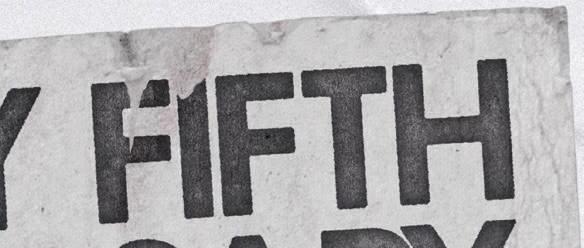





isn’t the same as yours, we can’t have productive discourse. And I think that’s the underlying problem.
It’s a political problem, and a social one. The objective of social media today is to engage, and many have found that the easiest way to engage is to enrage. So the content is often secondary: whatever it is that gets reposts and retweets gets further perpetuated, regardless of its validity or substance. There are no filters to verify it, and no one’s held accountable.
At the end of the day, those students protesting on college campuses aren’t ignorant. They’re often from affluent families and they’re well educated. But to paraphrase Mark Twain: is it worse to be uninformed or misinformed?
What are you most proud of?
That I’ve been able to include my various passions in almost everything I do. That my wife (Maria Cuomo Cole) and daughters have chosen to involve themselves in giving back. That Maria is helping so many people reach their potential, that Emily is now working with me in the fashion business, and that Amanda and Cate helped establish the Mental Health Coalition, which is already having a positive impact on the one in four Americans now struggling with mental health. Beyond work and philanthropy, what are your passions?
I play golf (although not well) and I fish (better than I golf; I’m a low-handicap fisherman). But I’m happiest when I’m with my family, and when I’m making an impact. Your road not taken?
I didn’t choose a traditional path. I didn’t complete my legal studies and I pivoted a lot in business. But looking back, I now think I would have loved a career in medical research, which I’m currently witnessing through my health initiatives. Years ago, I got involved with HIV and became chairman of AMFAR; I’m still a UN Ambassador for AIDS. I’m now very involved with the Mental Health Coalition. Although I never could have imagined myself dealing with the technical details of scientific research, I now find myself engaged in levels of conversation I’d never have thought possible. It’s amazing the extent to which everything is changing—all this
bioengineering, stem cell work, peptides, and exosomes—science will soon be able to cure everything!
What do you hope will be your legacy?
That I was able to make an impact—not just on people’s wardrobes but on their lives. And that I was able to connect with customers in truly meaningful ways. Several years ago, I wrote a book called Awearness: it’s about ordinary people making a difference in extraordinary ways. It was going to be 12 interviews, it ended up being 86. It was supposed to take a month, it ended up taking a year. But this diverse group of people all said the same things: if they could do it again, they’d have started sooner. Each felt that they were the biggest beneficiary of their service, and they all felt a bit guilty about how much they gained by giving back.
Do you feel guilty that you’re benefitting from your activism and philanthropy?
Every day. But I feel fortunate to feel that kind of guilt, and to be in this lucky place where I can combine my passions to do some good.
“I’ve had a close relationship with Kenneth for more than 30 years. He is a brilliant marketer who was way ahead of his time, addressing so many current social needs through his marketing campaigns. His design acumen guided his business to great success. Kenneth’s philanthropy, both financial and with his valuable time, has helped millions of people in need.
Congratulations on receiving this great award.”
—Morris Goldfarb, G-III
“Kenneth is a terrific partner! The exclusive Awearness brand that we do together is exceptional in both fabric innovation and design. It’s been a great performer at retail, including the new Essentials program that includes the Chillflex suits with both temperature control and stretch properties.
“Of course, we’re most proud to partner with Kenneth on donating to veterans causes. Last year alone, we donated $6.5 million to the Kenneth Cole Foundation and to four veteran related non-profits: K-9s for Warriors, Semper Fi, Fisher House, and Hire Heroes. With the help of our customers, we plan to expand donations this year. Clearly, the giveback component of his business is very important to Kenneth: it’s crafted into our agreement; it’s the core of who he is.”
—John Tigue, Tailored Brands“Congratulations, Kenneth, on receiving MR’s Humanitarian Award. Your unwavering dedication to helping society and your impactful work with mental health continue to inspire us all.”
—Dan Orwig, Peerless
uigi Theodore might be the classic American success story: An immigrant (from Haiti), he lands in Brooklyn, New York, and works his way through public school and college. But his side hustle ultimately becomes his calling, as he goes on to have a national and global impact on his industry. The difference? Ouigi Theodore does it all in a way that is the very embodiment of cool, always anticipating what’s next for menswear, retailing, and culture in general.
Retail is truly in Ouigi’s blood. His mother was involved in the import/export business, traveling the world from her native Haiti to buy and sell arts and crafts. She created what Ouigi calls the “Pop Shop” of her day (referring to artist Keith Haring’s boutique, which sold novelty items and art). The family moved from Haiti to Brooklyn, New York, eventually settling in Crown Heights. After attending New York City’s bilingual P.S. 189, Ouigi became a communications major at New York City’s renowned public high school, Brooklyn Tech. Moving on to Long Island’s Stony Brook University, he first majored in religion and linguistics, atypical for most of us in the fashion business.
“It was because of my Haitian roots and spirituality,” he explains. After taking an African studies class, though, he recognized his love for storytelling—clearly apparent in his approach to retail—and became a history major.
“When I came out with my history degree, my grandmother asked, ‘so what are you?’ I said ‘A historian!’ To which she replied, ‘Yes, but what are you?”
As fate would have it, while Ouigi was in college, he minored in “party,” but with a much more focused, entrepreneurial spirit than many of us. He and his friends would create fashion-themed events hosted in remote locations. He then decided to take some graphics classes at the Fashion Institute of Technology to support his pursuits. He eventually parlayed a passion for motorcycles into a moto-themed apparel collection called Ramsay Racing, and opened a store called One Race where he sold the collection,
and also carried denim brands like Seven and Chip & Pepper.
“In 2005, my business partners and I decided to go our separate ways. I wanted to give retail another shot, but this time, I wanted to make it more of a concept shop than a multi-branded boutique.”
Ouigi found a perfect location on the corner of Bergin and Nevins Streets in Brooklyn (a move that would prove to be prescient as the rapidly gentrifying neighborhood would explode a few years later with the opening of the Barclays Center).
“I was going to name the store Bergin and Nevins (that way, it would always be easy to find), with the store’s concept changing every season. The first collection was to reflect my love for both Brooklyn and the circus (‘The’ was added to reflect the first three letters of my last name). As I shared the idea with some friends, they said they liked ‘The Brooklyn Circus’ better for the store’s name. I looked it up on the U.S. Patent and Trademark Office’s website and never looked back! Instead of just sharing that concept for only one season, now we can share it for the next hundred years.”
Like many businesses, The Brooklyn Circus—and Ouigi himself—has gone through many changes. He’s had a store in San Francisco, a shop-in-shop in Chicago, a pop-up in Stockholm, and sold to specialty stores in Japan, Paris, and London. Currently,
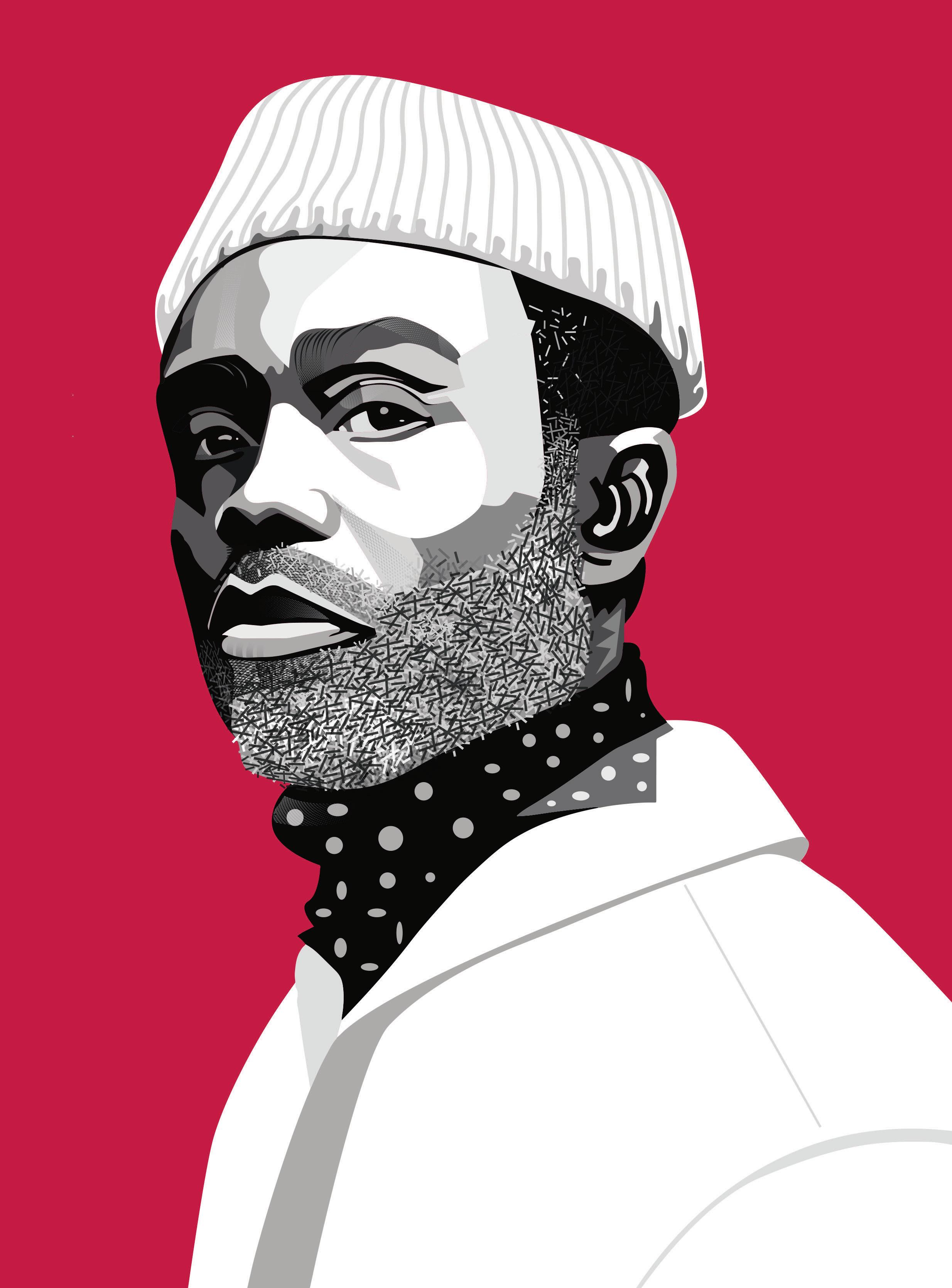
the focus is on the Brooklyn and Manhattan stores (he opened on Canal Street in April 2023), as well as online.
“The Brooklyn Circus is a coming-of-age story: one of growth and evolution. We created it with the idea that it would grow with us. I started the business when I was 30. I’m 49 now. I’m ‘361 Canal Street’ now. I’ve always told the story about Brooklyn and what it meant to be an American, of a Haitian kid who comes to America and becomes a citizen and has a kid. The Brooklyn Circus was a platform for me to express that. But fast forward, I got into art, making art, and collecting art. I had the luxury of creating a space that welcomes my evolution and parallels somebody else’s. We have guys from Brooklyn who come back and say, ‘I love Brooklyn Circus, man! I wore that in college! But it’s different now.’ Yeah. And you’re different now. You went to college and got a master’s degree. You’re different! Some of our best customers are those who allowed us to grow and embrace that. If it feels honest, and it’s where we are and where I am as a creative director, we’re going to push forward.”
The Canal Street iteration now features Ouigi’s own art, including some pieces that are turned into or used to inspire the apparel collection. Plans are to expand into a bookstore or museum concept, as well as a school or teaching concept.
And what about wholesale?
“We’re restructuring that, for sure,” says Ouigi. “But for me, wholesale now is a shop-in-shop experience. If clothing is just hanging on a rack, you’re not getting the full story. That is what makes us that much more special. We’re looking for the right partners and plan to expand that way.”
When asked how he might explain how to build a brand to a class of retailers, Ouigi says, “I’ve never been asked that question, but I think about that every day. To come from being a multi-branded store to being ‘a brand’ and ‘a store’ is quite an evolution. It involves a lot of research, studying, and understanding your customer. It’s striking that balance between giving them what they want and what they don’t know they want. Being on

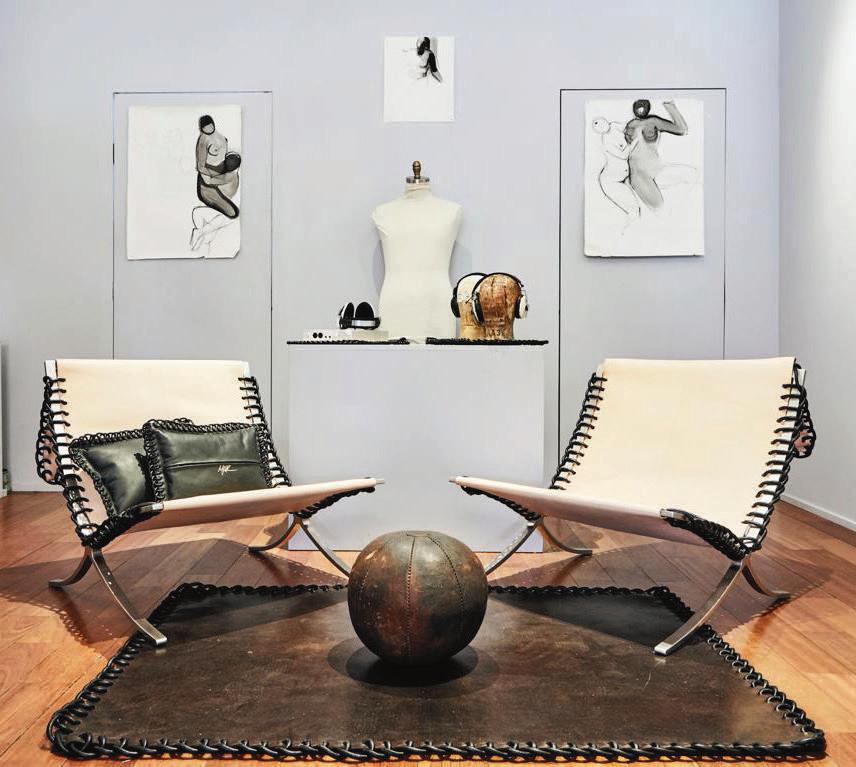
BY
the sales floor has taught me so much, and I still make it a point to spend time there.
“When we first started, we were fighting over brands with other stores. My response was always, ‘We’re gonna do it in a different way.’ When another store wanted a brand that I had, I didn’t care if he was three blocks away. If a customer came to me and said I saw it over there for $20 less, I’d say, ‘Dude, that’s what they do.’ But I got to the point where I asked myself why I was wrestling with these folks.
“Since I was a graphic designer, I created a small collection of T-shirts and put them out on the floor. One day a Japanese customer walked in and bought pretty much the whole inventory. These guys started coming with empty suitcases, paying cash, buying T-shirts, and going back to Japan. Why? Because Brooklyn was a state of mind, a way of looking at things: it wasn’t just about putting Brooklyn on your chest. It’s a Spike Lee movie, the Caribbean Day Parade, the Brooklyn Museum, the Botanical Gardens, and Prospect Park.
It was about finding the essence of the brand. I knew that I had to figure out what was going on in Japan, so I started going there and started seeing, yes, multi-branded stores, but places like United Arrows and Beams where the store was just as important as the product that was in the store. So we want to ultimately phase out all the other brands and make the store itself the most important brand. We started to build the product around that.
So make sure that you really understand your point of difference. It’s a team uniform. It’s the right smell. It’s the right sound. All these things make you want to experience the store itself and say I want a souvenir of that store. Brand A, B, or C is not a souvenir of the store. I could have gotten that anywhere. But the store itself becomes the experience. We kept designing our collections according to how we bought and then we started inviting brands to sit next to the store brand and vice versa. More people came for that and then we didn’t have to fight for brands. We didn’t have to worry about folks discounting things.

Looking ahead, Ouigi thinks our industry needs to expand.
“When the industry shifted to the idea of collaboration—and sometimes you think there’s too much of it—but moving beyond just making a product with both of our labels on it to looking at stores like Comme des Garçons, Dover Street Market or 10 Corso Como, where the concept of collaboration is their essence. My dream is to have a series of satellite stores with collaboration at the very heart. So when the industry introduced that concept, we were doing something right.”
What are we doing wrong? “Financing. I’ve self-funded this business. I’ve had great mentors like Sam Ben Avraham and Sharifa Murdoch,
who are not investors, but who saw my vision and allowed me to curate a section at Liberty Fairs. But folks like that are few and far between. The old guard stays on one side, and the new generation stays on the other. I think there’s a big divide between the design schools and what actually happens after graduation where they’re just left to figure it out. I’m a big advocate of youth culture and of the old guard, the people who paved the way. Ultimately I want to be able to find and fund talent.
In talking about who The Brooklyn Circus customer is now, Ouigi talks about some of the people who come through the door. “A guy walked in yesterday, and he is from Milwaukee. He’s here to see a show. And he’s an older, middle-aged, tall white guy who comes in and says, ‘ I love your stuff.’ I look at him and can see, yeah, it makes sense. He has great taste. He appreciates the theater and the arts. But if there’s an event here in the store, you might not see him, but you might see some cool kids. Ethan Hawke and his wife stopped in the other day, and they remembered us from the store in Brooklyn. I realized early with The Brooklyn Circus and even with the previous store that when you give good service, sell quality product, and create a quality environment, you’re going to attract people of all races, ages, and genders who appreciate luxury. They’re all coming from different places, but converge on what they love, and they appreciate being recognized.
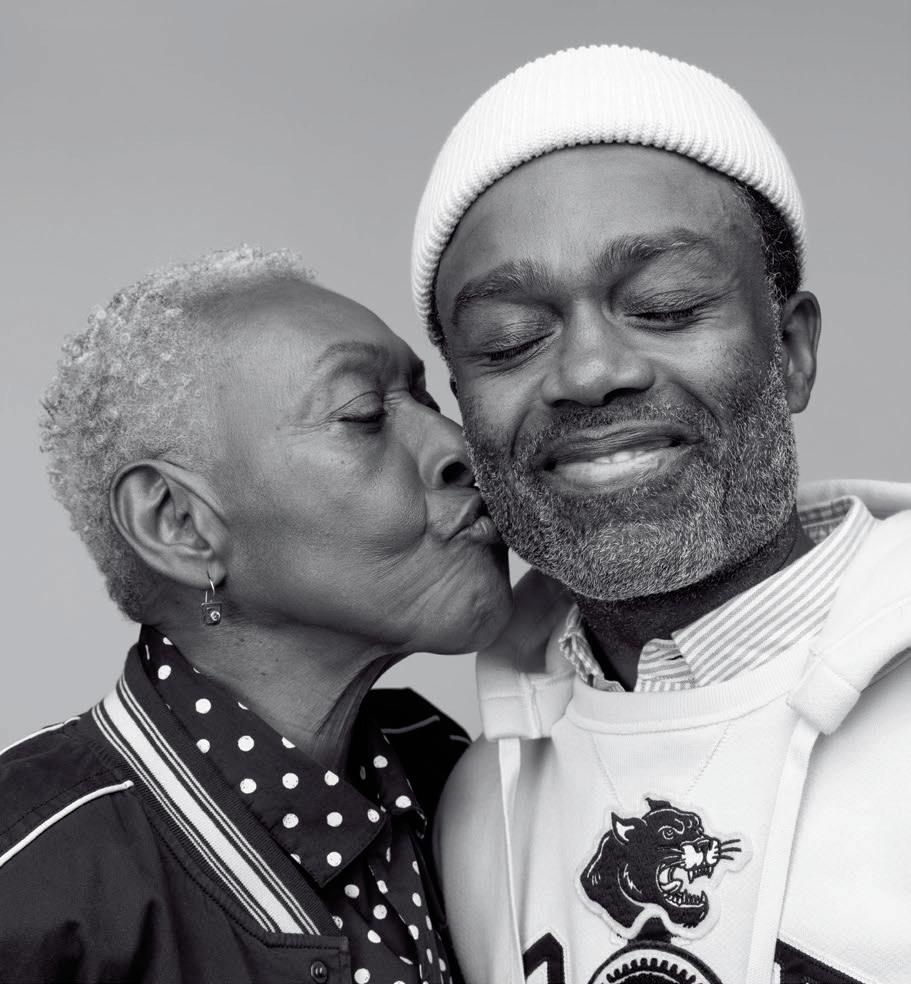
BY
Before I could describe Ouigi’s contributions to this industry, I could feel them. From the emotion that came over me when I walked into his store for the first time to working alongside him at Liberty Fairs, I’ll never forget how obvious it was that he had something special to bring to the table, even before the table was brought into the room. —Sharifa Murdock, Kith
“Ouigi always told me that to run a successful business, you need to ‘balance art and commerce.’ Ouigi’s goal was to always bring all talent under one tent ‘The Brooklyn Circus.’
“Conceptualizing the Lee x BKc collaboration was very exciting as we worked to blend western and workwear with urban sophistication while keeping the integrity of each. Every detail, from the Japanese selvedge denim to the Melton wool fabric and exclusive patterns and palettes, twists these two stories together. The final result is a unique collection that makes you say, ‘Wow, this is so new and fresh.’” —Sedgwick Cole Jr., Lee
“In the face of conformity, Ouigi Theodore’s unique approach to design and creativity has been a source of inspiration and motivation for more than 17 years His innovative approach to retail has truly set him apart, and I am thrilled to see him being recognized as Retail Brand of the Year. Congratulations to Ouigi and The Brooklyn Circus on this well-deserved achievement.” Carrie Campbell, A Supreme Agent, Birkenstock

The Raffifaailywoolldliie to congratolate all of the 2024 MR Awarld Honorees.

Elevating the mix, the vibe, the experience.By Karen Alberg Grossman
f you don’t know Alan Gibeley, it’s not surprising: he likes being under the radar and he’s not big on socializing. “I rarely accept dinner invitations; I’m just not comfortable with it,” he explains. “I don’t like owing favors unless I’m sure I can deliver. I don’t mean to be antisocial, but that’s just me.”
From the time he was in eighth grade, Alan knew he’d follow his father, Robert (who died two years ago), into the men’s clothing business. “As a kid, I’d wake up early Saturday mornings to go to the store with him. In later years, he’d take me with him on buying trips. My dad was a stand-up guy with old school values. Pay your bills on time, negotiate with your vendors for terms, check every line on every invoice from shipping to taxes. I was (and am) less meticulous, less detail-oriented, less focused on the numbers…
“That said, some of my dad’s obsession with details rubbed off on me, so of course I have an in-store accounting person (Nancy is the best!) as well as my terrific outside accountant, Pat Bruno, with whom I communicate daily. I believe in a team approach: if it were just me making decisions, we’d have four or five stores by now and go quickly out of business.”
A retailing major at Syracuse University, Alan graduated in 1992 with a minor in marketing and post-college experience at Filene’s Basement and Sports Authority. He’s known to be as smart as he is unpretentious. Much of his character comes from being one of 13 siblings. “Chaos and confusion reigned. We would sleep two or three to a room, even after turning the sunporch and attic into bedrooms. We had to wear earplugs just to get our homework done! In a big family, everyone chips in. There are always a lot of eyeballs on you so if you take too much pasta at the dinner table, you hear about it from all corners. You learn to compromise, to make order from chaos.”
Apparently, the family (now including Robert’s 30 grandchildren!) remains close and supportive of each other. One of Alan’s
brothers owns a tuxedo rental store down the block from Giblees; other siblings are successful entrepreneurs in the retail and restaurant businesses. But not immune to tragedy, Alan shares that his twin sister, Amy, was killed in a car crash 18 years ago. “She was a wonderful person, energetic and caring. She had a successful online kids’ business. If you ask any of my 12 siblings what was the worst happening of their life, losing Amy would be the first thing mentioned.”
Alan is known to be compassionate, always trying to uplift spirits and keep everyone happy. “That said, it’s hard for me to enforce discipline so I’m trying to be tougher when I need to be. Sellers making mistakes has cost us plenty over the years, plus it’s better for them to know what they might be doing differently. Fortunately, I’m learning to be tougher, slowly but surely…”
Interestingly, Alan’s current staff of 25 employees includes some well-trained sales pros who joined the team from now-struggling luxury department stores. “They seem to be on Cloud 9 working here,” Alan confides. “We treat everyone the same and we want everyone to have a life. So if your son is sick or you really need to watch your daughter’s baseball game or you’re hungover from too much partying, just be honest! We’ve all been there. We all
THIS BUSINESS IS LOTS OF FUN WHEN TIMES ARE GOOD. IT’S WHEN IN-STORE TRAFFIC SLOWS THAT IT TAKES THE REAL PROFESSIONALS.
cover for each other.”
While Giblees might have started out under-theradar, (as Alan puts it, Danvers is not Newton), this instinctive merchant has gradually elevated the mix, the staff, the vibe, and the energy via numerous moves, expansions, and renovations over the years. Giblees’ spacious open selling floor is still in the process of renovation, with six full-time tailors getting a newly expanded tailor shop. Key designer brands (Eton, Canali, Brioni, Isaia, Etro, Jacob Cohen) each has its own in-store shop, creating a first-class luxury vibe.
Fortunately, recent business has been strong. “People are wanting to have fun these days so they’re dressing up for events,” Alan affirms. “Sport coats have been particularly strong, from Isaia ($3,500–$4,500), Canali, and Brioni in brighter colors and bolder patterns. Average tickets are higher than ever, and maintained margins are at 60 percent for most of our brands. If they drop below 50 percent, then we start worrying.
“Of course, we’re realistic,” he continues. “We draw from a large geographic area with diverse household incomes, so in addition to luxury brands, we carry a good assortment of menswear at moderate price points: suits at $895 from Jack Victor and Byron, tuxedos from $795, jeans from 34 Heritage at about $200. But our growth has been in luxury: suits averaging $2,100–$2,200, in-stock opening at $1,875. We do a really nice job with luxury shirts from Eton. We still sell a lot of Canada Goose outerwear, but with less frigid temperatures this past winter, it was the first season we cut back a bit.”
Do his customers ask for specific brands by name? “The vast majority do not. They come in asking for our advice on what they should be wearing. They come for our service and for our reputation. My guess is that 1 in 10 customers asks for a specific brand. Of course, our luxury customers show an affinity for made-in-Italy but that’s because we’ve been featuring it for so many years.”
Alan estimates that Giblees carries more than 75 menswear vendors in addition to a small women’s business (mostly fash-
WE NEED TO MEAN SOMETHING TO THEM.

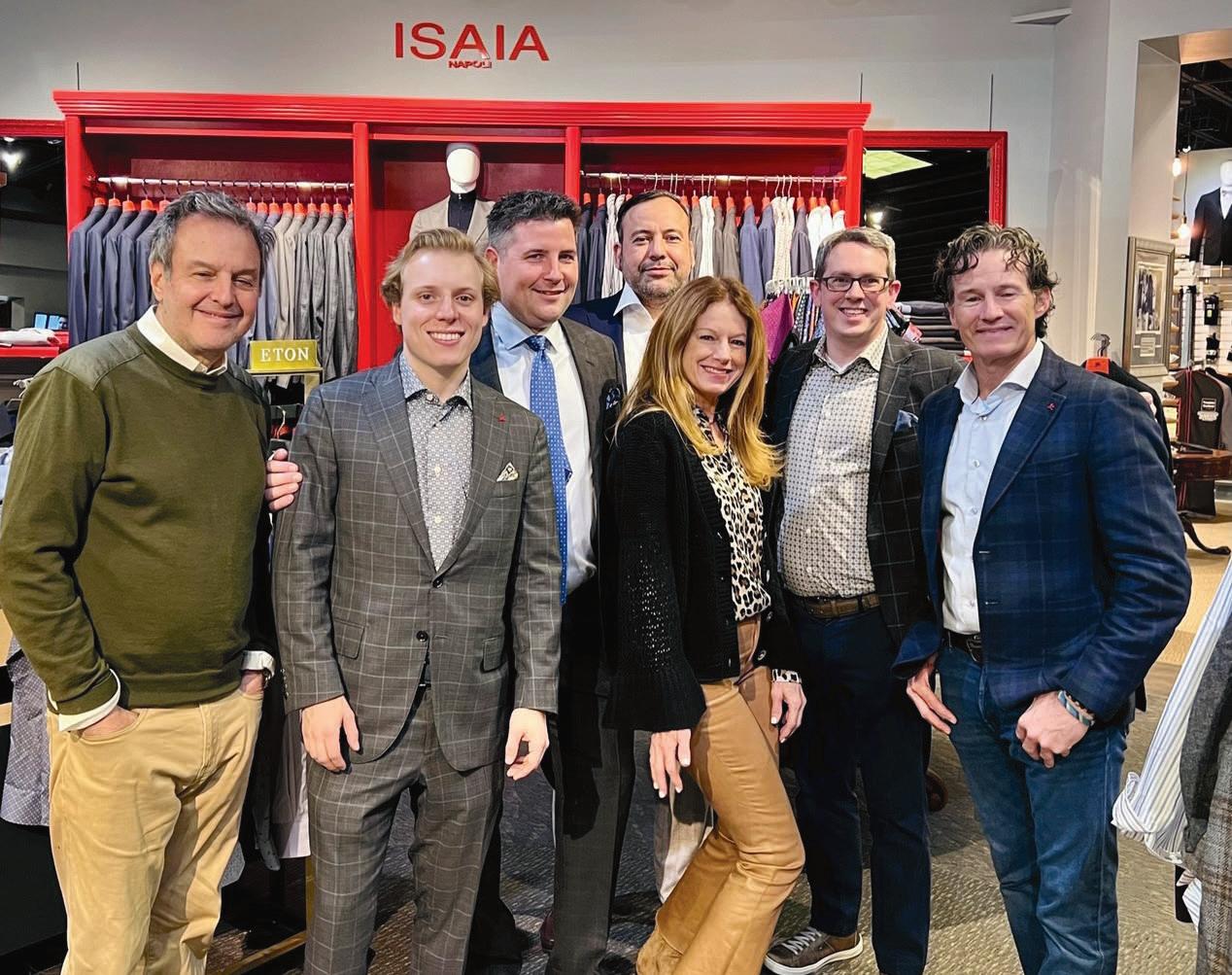
ion outerwear not requiring a fitting room). Online sales, first launched 20 years ago, now make up about 10 percent of store volume, which is where he’d like to keep it. “We used to do more but I feel we’re now at the right level. We have much more to gain by growing our in-store business, especially since the big brands are cracking down on which independent stores they sell. We all feel the frustration: menswear merchants spend years nurturing little-known brands only to watch these brands drop them and go direct to consumer. My buying philosophy is simple: Whatever brands we bring in, we must mean something to those companies. We’re good to our vendors and they’re good to us.”
Among other success secrets is Giblees’ focus on regular price, which accounts for a good 90 percent of sales. “We hardly discount, except for a few special events, but we do offer a 5 percent rewards program, and we have a small sale room in the back of the store. It seems to me that too many merchants are marking down goods too early. If the numbers fall off for a week or two, they pull the trigger without considering the whole picture, like unexpected 90-degree weather in the middle of October. A slowdown is not always due to the product.”
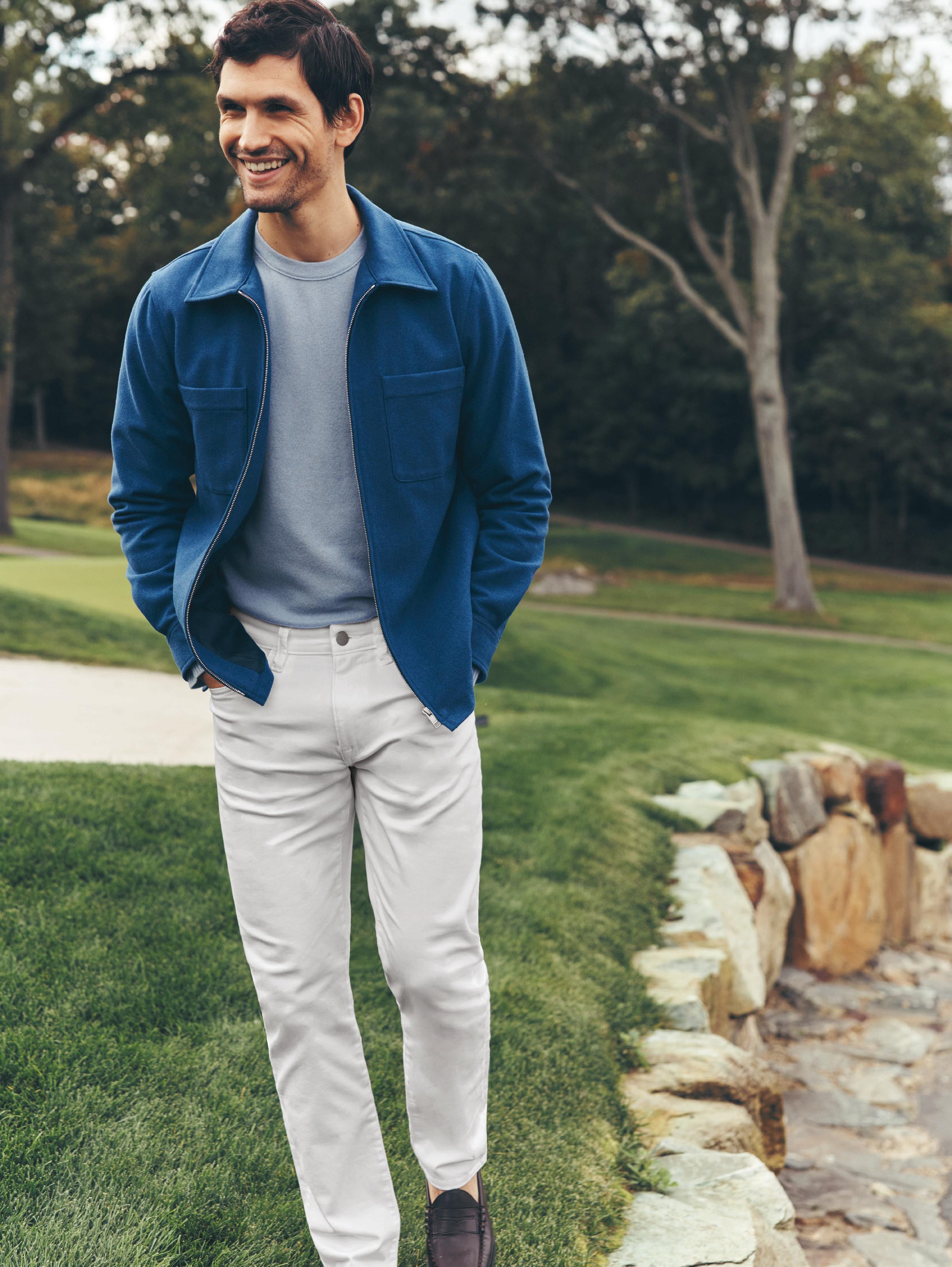
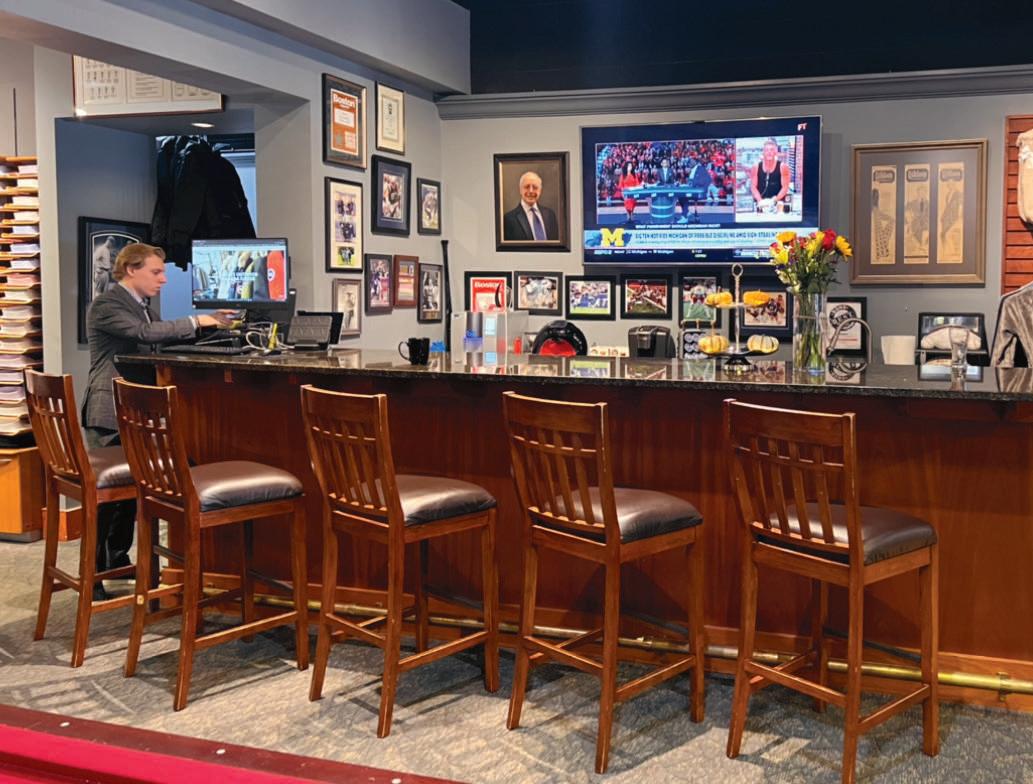
Giblees’ customers range from guys in their 30s to Boomers. “We don’t get many in their 20s, but we have plenty of young men in their 30s who stretch to buy Canali, and others who are happy with our selection at $895. TailoRed from Peerless does very well for us at a nice margin. We’re selling a lot of Martin Dingman slip-on shoes at $250 but we’re also selling Santoni at $700–$800. Our range of price points is what sets us apart from the ultra-luxury stores.”
A youthful perspective is offered by Carlos, who started working at Giblees eight years ago at age 18. “It started as a summer job and now it’s my life,” he confides. “Alan is awesome, and I love it here! I’m seeing a lot of young guys coming around to sport coats. They want to dress up. They want to spend money on nice clothes. They want to special order clothing in custom fabrics that they personally select. They’re also buying Isaia overshirts and Canali suits. Personally, I like the new pant styles with oneinch pleats: it’s kind of old school but with a modern twist. But I don’t think the huge, oversized styles on the runways will catch on: fitness is too important to these guys; they want to show off the results of their hard work.”
Inquiring minds want to know: the family name is Gibeley but the store is Giblees. Why? As Alan explains it, “My grandfather changed it years ago; unfortunately, I never asked why. It might have been that Gibeley is technically pronounced with a soft G. Or it might have been to escape antisemitism. My grandfather was Jewish; born in Spain, he fled to Turkey and then Cuba… He arrived in the States in 1945 and opened his store, Joe the Hatter, in downtown Salem. That was our beginning.”
Alan and his wife, Christina, have two daughters: Hannah is 19 and studying at FIT; Emilia is a junior in high school. Will either follow their dad to work at the Danvers store? Alan isn’t sure. “Hannah already dreams about creating a fabulous women’s department for Giblees but she’ll have to prove herself first. (Plus, she loves NYC so we might have a problem getting her here…) Since the last three years have been easy, I remind her that retailing is lots of fun when times are good! It’s when in-store traffic slows and business gets tough that it takes the real professionals.”
“I’ve known Alan for 15+ years. He’s always had incredible taste, and always manages to showcase each brand’s unique identity. Through the years, I’ve watched his store evolve into a truly special luxury experience.”
—Catherine Uy, Brioni
“I’ve known Alan since I sold him Zanella and Hugo Boss in the 1990s. I’ve watched him over the past 30 years quietly turn his humble store into a fabulous ,much-admired upscale menswear emporium in Boston’s North Shore. Alan is a true gentleman: fair, honorable, caring. He has great people skills and takes good care of his employees; people want to shop in his store for its friendly, happy vibe.”
—Tom Cohan, Robert Barakett
“Alan is a problem solver with an entrepreneurial spirit. He sees an opportunity for eveningwear; he builds a dominant formalwear shop. A brand’s fixtures don’t fit into his store aesthetic, he builds his own fixtures, even better than the original. I’ve always respected his can-do mentality. For Alan, the obstacle is the way forward.”
—Erik Wilkinson, Eton
“I’m proud to have known the Gibeley family since 1975. Alan is an excellent merchant who has taken Giblees to a new level. He treats his customers, his dedicated team, and his vendors with great respect. This is a well-deserved award for Alan and his staff.”
—Richard Binder, 34 Heritage
“I’m so happy to see Alan recognized with the leaders of our industry, as he is a true merchant. He has a unique product mix, cleverly adapting to the lifestyle and taste of his North Shore customers. He features high-profile Italian brands like Brioni, Isaia, and Canali, in the winter months Canada Goose and Bogner for the sporty crowd, maintains a healthy formalwear business, and even offers a handful of special outerwear and sweater pieces for women. He’s never afraid to use his gut and take a chance.
“Alan is very funny and a joy to work with. He values his family, customers, employees, and vendors. Working with Alan is like working with a friend-he’s unassuming and has no ego. He’s sincere and genuine. Like his dad, he makes everyone feel like extended family.”
—Peter Belci, Canali
“Alan is such a great guy and deserves this recognition. He’s stayed relevant, always evolving his business to keep pace with the market. He has a talent for identifying and developing a team that exudes energy and excitement for the products they sell and the customers they service. All this, and he is wicked smart!” —Jim Shay, Isaia


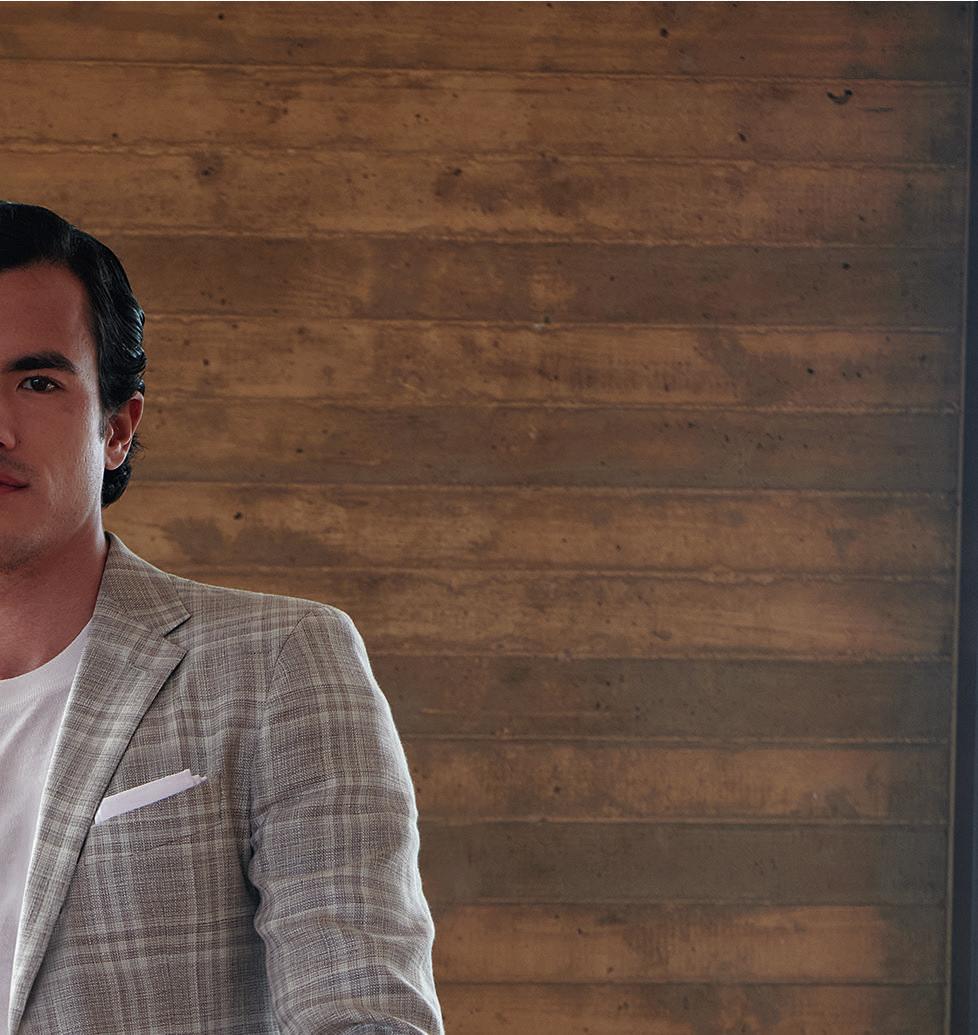



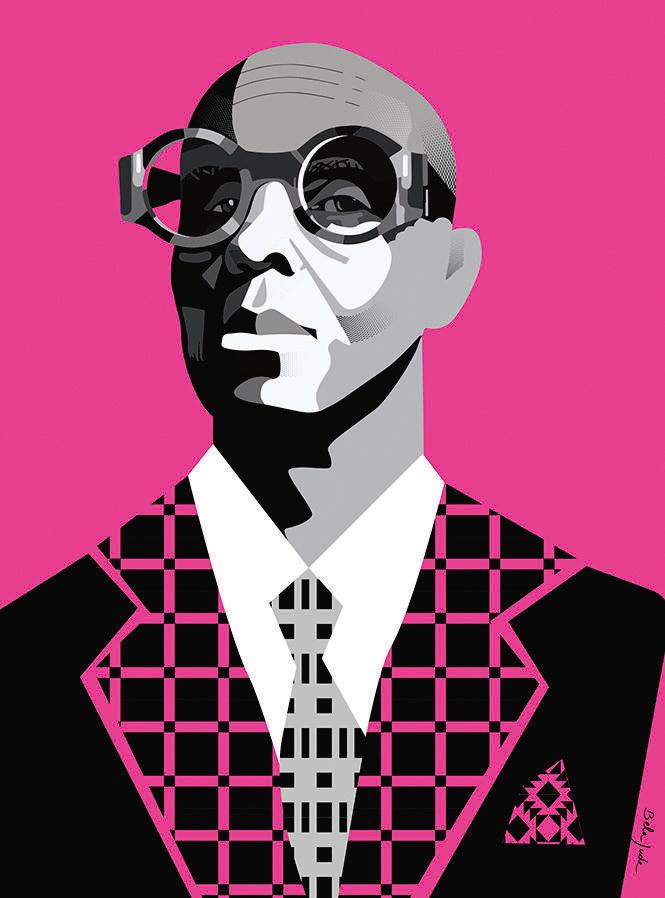
apper Dan occupies a singular position in our industry. Like an outsider artist, he forged his own path, teaching himself the ins and outs of garment construction and marketing, yet, like so many other menswear success stories, he looked to an established icon—Ralph Lauren—as a role model. Dapper Dan built his reputation first among his hometown of Harlem’s gangsters and rappers, creating collections that took the concept of logomania and a “more is more” aesthetic to create his signature style. He’s now a highly sought-after design consultant, lending his name and talents to collaborations with megabrands like Puma, Gap, even Sherwin-Williams, and, in perhaps one of fashion’s most ironic turnarounds, Gucci itself. Interviewing Dapper Dan felt less akin to questioning a fashion designer or corporate executive and more like sitting at the feet of a spiritual guru. Just when you think he’s wandering, you realize that he’s connecting larger truths, providing a more nuanced, holistic answer to the questions.
How did you get into the menswear business?
The catalyst for all of this was my desire to be involved in something positive. Something I enjoyed. Something that would allow me to remain in Harlem but also to escape from the Harlem I grew up in.
I had Irish friends—my best friend was Jacky Michaels—as well as Italian, Jewish, and Greek friends, and we were all here in Harlem and poor at the same time. I’m the first generation of the Great Migration to come from the South. When traveling to other cities—especially Chicago—I’d ask, ‘Where are the Puerto Ricans? Where are the Jewish guys? I saw how pocketed it was and realized the significance of Harlem and its diversity. I expected it to be like that everywhere. I said, ‘This is what makes home.’
I grew up in a criminal element, and you
could see that the Irish and the Italians controlled a large portion of the underground economy. Look at the famous Cotton Club [the legendary nightclub located on 142nd Street and Lenox Avenue in Harlem from the 1920s to 1940], owned by [gangster] Owney Madden. I’m from East Harlem, which is very powerful culturally, but fashion was nonexistent for me. Goodwill was our Macy’s. I grew up with holes in my shoes. I always wanted to look good but couldn’t afford to. But if you wanted to go to 105th Street, you wouldn’t go there if you weren’t dressed. And when you did go there dressed, nobody knew that where you lived might have rats and roaches. I recognized that no drug is more intoxicating and more transformative than clothes.
At the age of 23, I was incarcerated for 90 days, and when I came out, I wanted to be reborn. I started reading a lot of spiritual stuff. I read a book of Malcolm X’s speeches, and one that really was important was where he said, “If you want to understand the flower, study the seed.”
So, I decided to go into fashion and asked who in fashion has made a deep enough footprint for me to step in. And who is close enough to me in terms of ethnic representation? And I came up with Ralph Lauren, who had an amazing mind for telling a story and bringing that story to life. He was a major influence on me. His beginnings resonated with me. He was young. He’s Jewish, and this was in the ‘60s when he started, so it wasn’t that com-
MALCOLM X SAID, “IF YOU WANT TO UNDERSTAND THE FLOWER, STUDY THE SEED.”
fortable. He acknowledged that he was confronted with obstacles. He Anglicized his name. I knew that I couldn’t Anglicize my skin, but what I could do was build enough intelligence in the area that I wanted to pursue so that I would be respected.
You’ve written a book, Dapper Dan: Made in Harlem: A Memoir. What would we learn from reading it?
The most important thing you’ll learn from it is the power of reinvention. That’s what the book is basically about—transgressing from the lower levels and reaching for the highest levels. You’ll also learn a lot about history and my family. Again, I’m the first generation to grow up in Harlem from the Great Migration. I could see that there was a similarity between me and the people whose families migrated from Europe.
In 1968, I was suffering from an identity crisis. I wrote for a radical newspaper called 40 Acres and a Mule. I had a revolutionary spirit and challenged everything. I saw everything through the lens of 400 years of slavery. A distinguished professor, Dr. Henry Clarke, visited one day, and somebody asked him why Black people are so oppressed. He responded that it was because of the transgressions we made against ourselves before Europeans came into our lives. Now, breaking that down is a whole different chapter, but what that statement did was remove that stigma from my mind of the 400 years of slavery. I was offered the opportunity to go on a seven-nation tour of Africa, so I had to go see for myself. Since then, I have made it my business to learn all I can about anything that interests me. My approach to everything now is to ask how it started. Where did it start?
Tell us about your creative process.
A young kid saw me on the train the other day. And I’m very popular now, so people recognize me. The kid said, “Dapper Dan, I never thought I’d see you on the train.” And I told him, I’m on the train so that I can see you.
How do I stay relevant after 35 years? One of my mantras is I do not dictate fashion. I translate culture. I immerse myself in Harlem. I was born here, I live here. I only leave to get a picture of what Harlem looks like from somewhere else. I’m always in the street, always out in the public, so I can see where the culture is.
I learned this trick from swimming in the Harlem River when I was young. The Harlem River [which separates Manhattan from the Bronx and flows from the Hudson River to the East River] has a current that flows in different ways at different times. We liked to dive in from a dock but walk onto the bank to get out, so we needed to understand which way the current was flowing. So, we would throw a popsicle in before we dived in so we could see where we’d be going. That is how I approach life. For me, culture is the river. You look at the current of the culture, and you see where it’s going.
I ask all the rappers that I’ve dressed, as I did with the gangsters before them, “What are you trying to say? Where do you want to be?” I want to transform them so they become part of the process. This is why I never get obsolete: I’m always part of the culture. They
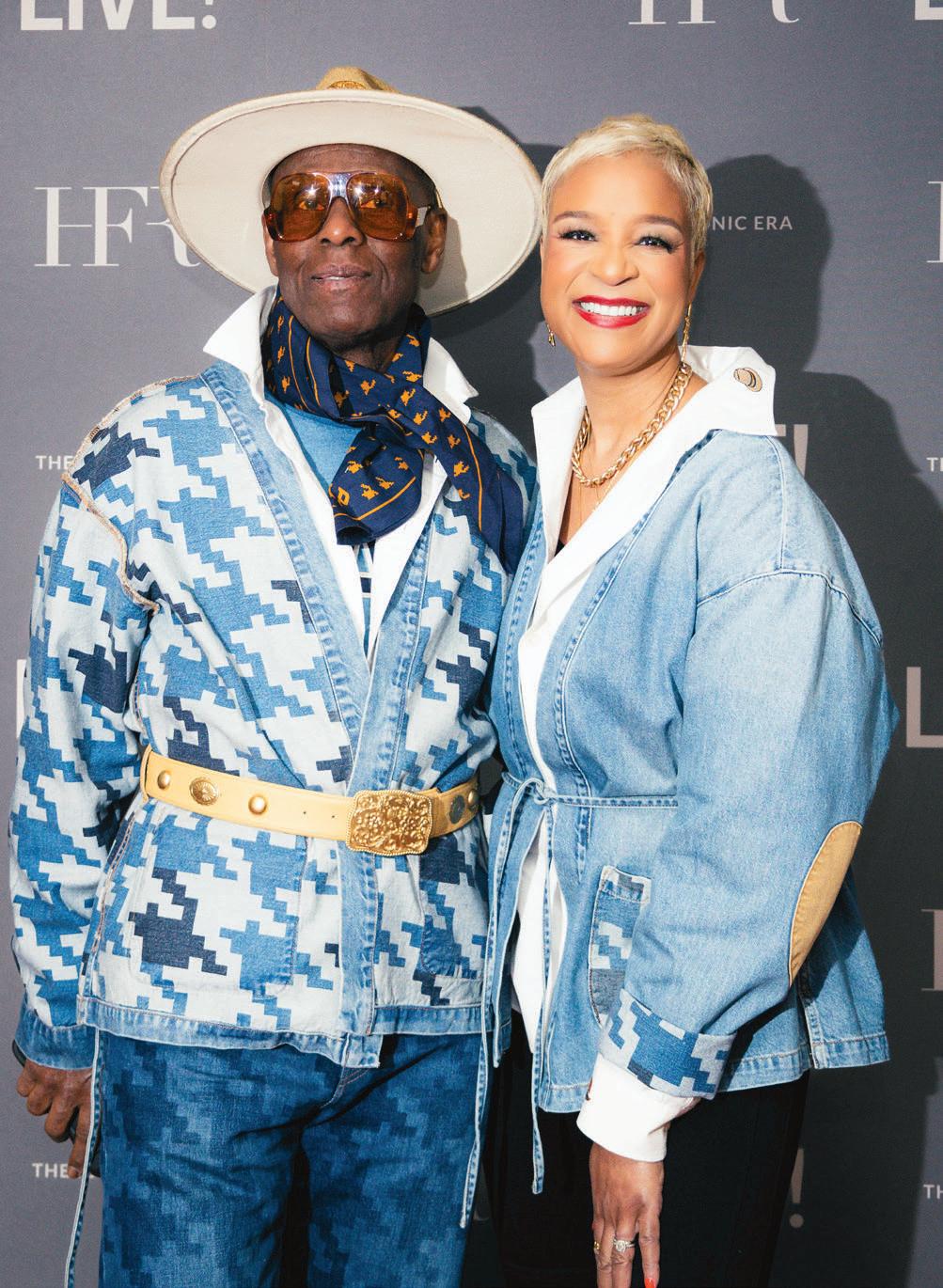
want to represent the culture, so I help them get it all together.
When I was in Italy and did my first collaboration with Gucci, we had a medallion, a two-faced coin. We needed a slogan to put on the coin: I wanted “E pluribus unum.” “Out of Many, One.” When I went to Africa and did all my research, the problem was that I went back. But I wanted to take everybody with me. The further you go back, the more we come together and the more alike we are. And that’s what I push through the brands, silently and quietly. People
want to be angry. We need that subliminal voice that speaks to love, that speaks to that which is enormous. Let me push where I think America and the world should be. I feel that divine providence might allow me to do that.
You’re becoming more than a fashion icon; you’re almost a spiritual leader.
You hear me say, “I do not dictate fashion; I translate culture.”
My biggest idols are the Beatles because they translated our culture in such a magnificent way. They said, “We are Jesus now,” which got them into a lot of trouble. So, I said fashion is like the robes for saints. It’s a spiritual robe, and all you have to do is bring it out and use it in a way that makes it a garment of change.
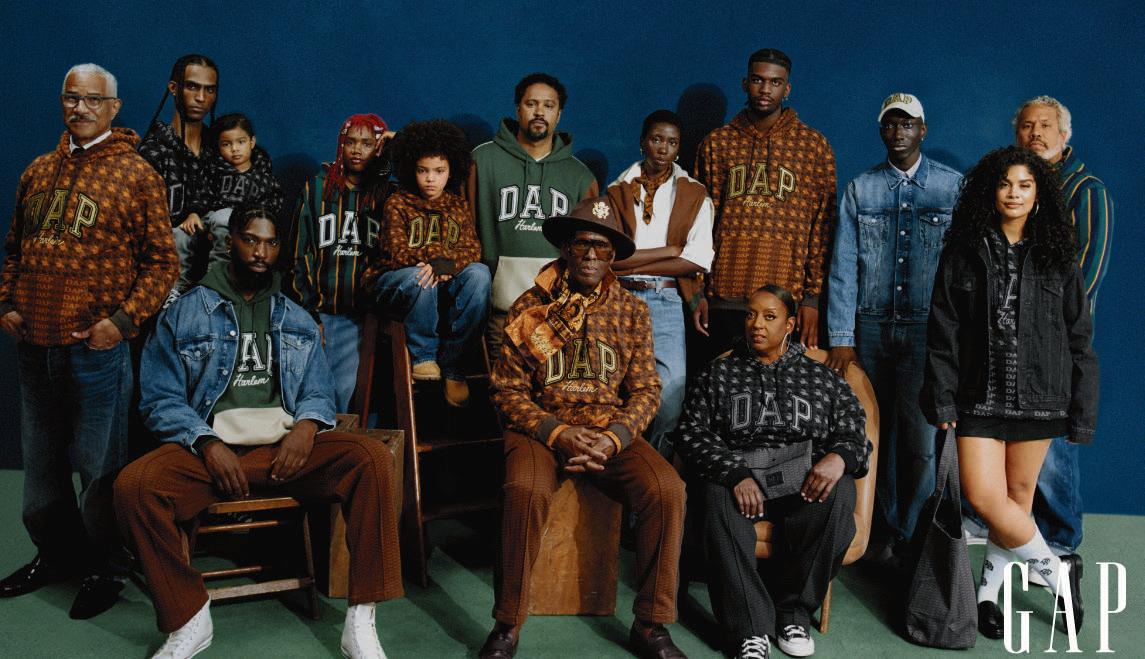
“Dapper Dan is a true icon – someone who champions originality in both style and substance, creating positive change by translating culture, fashion, and music by being his truest and most unapologetic self. It’s been a honor to know him and celebrate his legendary work.” —Mark Breitbard, Gap Brand
“Many words come to mind when I reflect upon Dapper Dan’s influence in fashion. ‘Icon’ is undoubtedly one of them, but ‘Inventor’ continues to be the adjective that fuels me and many others. He opened his Harlem Boutique over 40 years ago with the intention to innovate, inspire, and uplift his community. That mission remains true today.”
—Edwina Kulego, MMGNET Group
“Dapper Dan’s impact on the fashion industry transcends mere trends; he has woven culture and creativity into the very fabric of style. His innovative spirit defies age, proving that there’s always more to share, while his mentorship nurtures the next generation of designers.”
—Brandice Daniel, Harlem’s Fashion Row
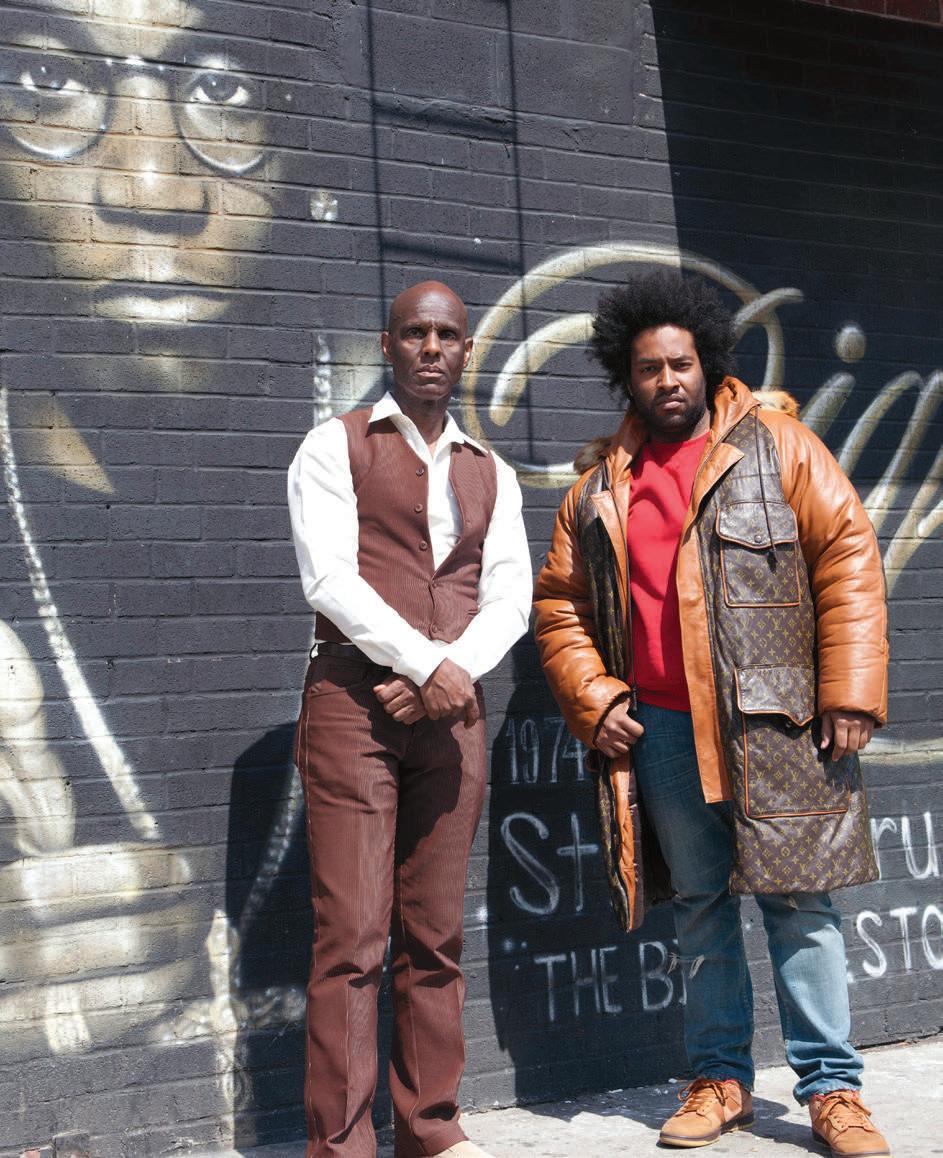

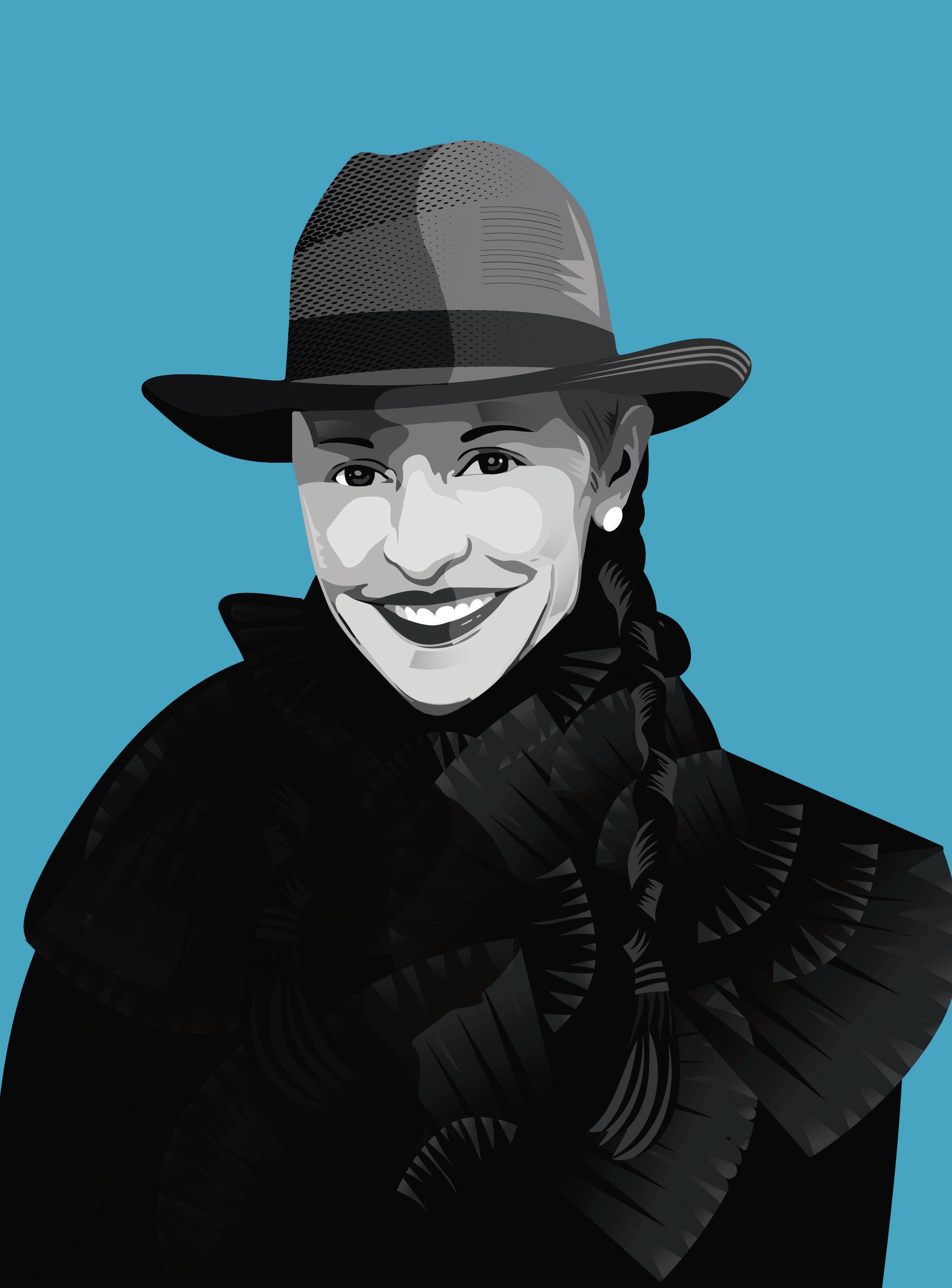
s a young girl growing up in the Milwaukee suburbs, Erin Hawker already knew that fashion was her calling.
“By the age of 5, I knew I was going to move to New York City, having no idea what New York City was about. My mom would walk me to school, and I’d tell her she has to walk at least five steps behind me unless she runs home to change out of the bright orange jacket she was wearing. I believed even then that the fashion gene was part of my DNA.”
After majoring in journalism at the University of Wisconsin Madison, Erin took a gap year in Chicago on her way to NYC. “When I finally thought I was ready, I packed a U-Haul and headed east, dreaming about working at WWD So every morning, I’d walk from my apartment in the West Village to the Fairchild office at 7 West 34th Street. I’d sit in their front office day after day until finally the receptionist told me I couldn’t sit there anymore. To get rid of me, she arranged for me to meet with HR for an interview. I ended up getting offered a job as editorial assistant for DNR, but I’d also been interviewing at a few ad agencies and got a competing offer that paid $5000 more. So that started my route into the agency business.”
Erin recalls how different PR was back in the day. “We had encyclopedias of editorial contacts and we had a fax machine. This was a fashion/lifestyle agency, and my entire job was to look up editorial contacts and fax them press releases. So I’d sent out 100+ press releases and get maybe one or two responses. We were not allowed to make long distance calls from the office, so I’d go out to the payphones and call the big publishing companies like Hearst or Conde Nast to get VIP editors not listed in the main book. I didn’t have a mentor or boss at the time, so I made it up as I went along…
This was in 1994.
“But how PR has changed! We’ve now got
digital content and online shopping. It’s less creative than it used to be, and more about battling the competition and figuring out how to raise commission rates or make better deals for affiliates. It’s a lot more competitive now—there are so many brands out there and the industry is very fragmented, which is both good and bad. Designers have more options (traditional wholesale, direct to consumer, a hybrid of both) but with so many more brands, you need to make A LOT of noise to get noticed. It’s especially tough for emerging designers with limited resources. Since I needed help when I moved here, I understand their struggle and what it takes to get noticed. If I can help young designers in any small way, I’m grateful for the opportunity…”
Erin threw herself into several challenging jobs before starting her own agency (aptly named Agentry PR) in 2010. These included Donna Karan, Vertu (the Nokia luxury cell phones), VP at LaForce & Stevens, and head of publicity for Diesel North America. As a VP at LaForce, she worked on major accounts like Target, Sperry, Reebok, Judith Leiber, and Perry Ellis. She found an inspiring mentor in James LaForce, who taught her a lot about writing.
“When I opened my own agency, Frank Muytjens was creative director at J. Crew, and he was doing the coolest things. He had opened Liquor Store, and all these younger men were idolizing him: they wanted to do what Frank was doing. It was a fresh, clean take on menswear that emboldened a lot of young men’s
THE BIG LUXURY BRANDS DO RUNWAY SHOWS MOSTLY TO SELL LICENSED PRODUCT.
designers to start their own brands. So Agentry was getting calls, not because we were so great, but simply because menswear was where the white space was. We started getting young designers who wanted to show during New York Fashion Week but couldn’t get sponsors because most potential sponsors preferred to line up with women’s fashion, which has a larger footprint. So I decided, in order to make some noise, let’s team up six men’s designers and make a splash as a group. We had very little sponsorship at the time, but one of our designers was able to get free event space, another had contacts with a beverage brand, etc. We showed our six designers within a two-hour period and everyone came. We had Bergdorf’s, Saks, Neiman’s, Bloomingdale’s, GQ, MR, Esquire—everyone came! New York Men’s Day was a reality! It also helped to have a couple of designers (David Hart, Bespoken) who had already gained some momentum. Once we had ‘proof of concept’, I started going after sponsors more aggressively. It was difficult then (and even tougher now) but during every showcase, just watching what these young designers were creating was so satisfying! They worked so hard to keep the sartorial spirit alive, which made me want to work even harder.
“Of course, our ultimate goal is to time our event with the major fashion weeks: New York, London, Paris, Milan, Tokyo. Luxury brands do these shows mostly for the press. The goal is not necessarily to sell the clothing (often exaggerated and unlikely to appeal to American shoppers) but to sell the fragrance, the accessories, the licensed products. If they can throw a few celebrity names into the mix, there’s an additional PR opportunity with the entertainment press. It’s a well-oiled machine.
“But for young brands starting out, I believe they can garner as much attention with Men’s Day as spending $200,000 on Fashion Week. (The bare bones of a runway show today: 150-$200,000.) It’s crazy for guys to spend that kind of money just to get a foot in the door. For New York Men’s Day, we underwrite 85% of the cost. We basically cover the space, security, hair, make-up, beverages, publicity… Designers are responsible for their models and set design. I’ve seen designers spend under $10k but I’ve seen some spend $35k because they want more recognizable models. Some designers do street casting, using skateboarders or musicians. Some opt for no props and just use white space. It’s pretty incredible.”
According to Erin, sponsors change each season with just a few regulars. “I’m so grateful to The Hildun Group: Gary Wassner has been such a huge supporter. And Oribe (hair products) has been with us since Day 1. This will be our 22nd season and Victorinox will be the presenting sponsor. Naturally, most brands use NYMD not only to sponsor these young designers but also to promote their own brands. One season we had Perry Ellis, two seasons we had Nobis.” How does she deal with the stress of supporting these emerging brands while getting
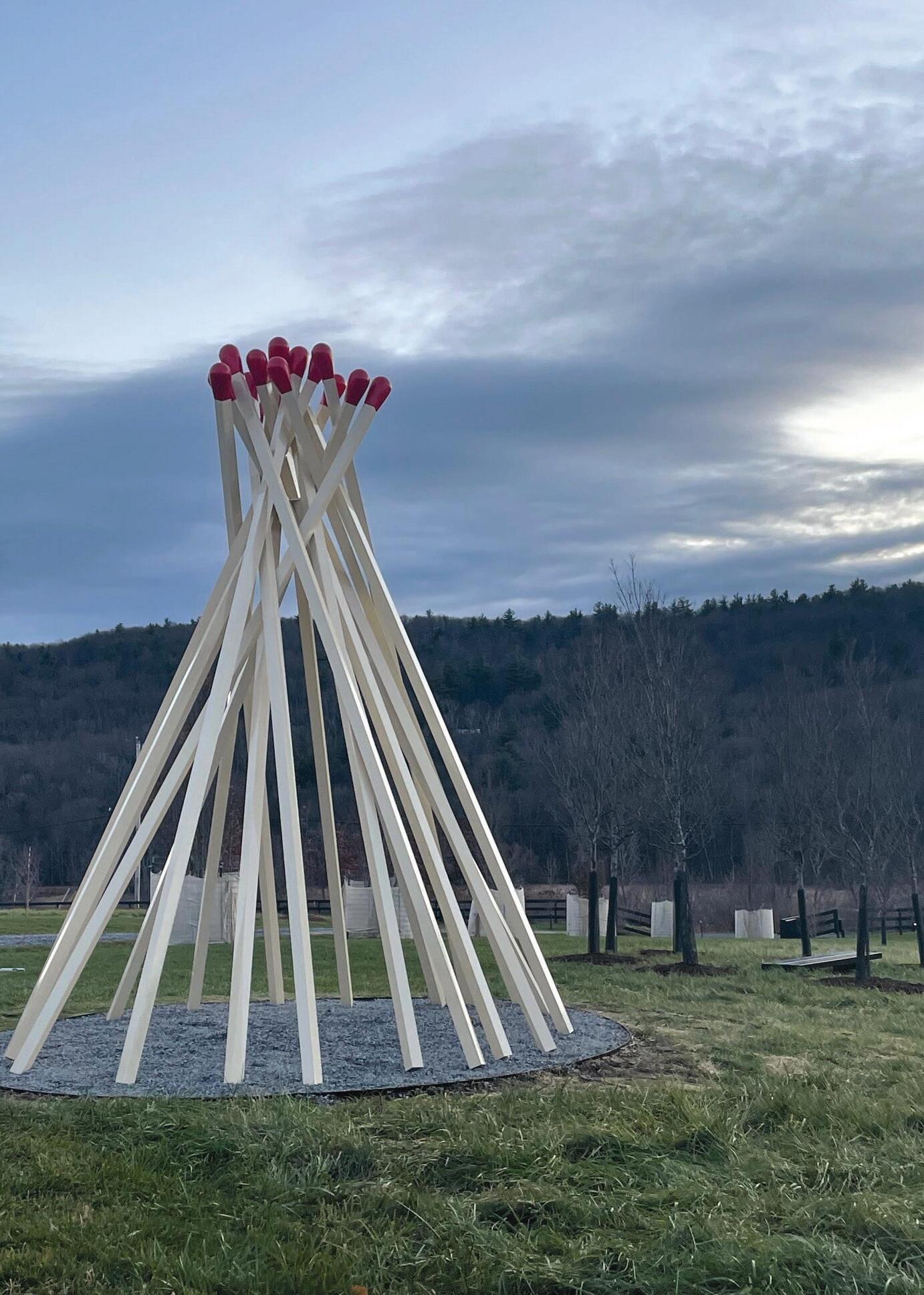
enough sponsorship to cover costs? “It’s challenging,” she confides, “but I’ve learned over the years that it’s all going to work out. So I tell myself to relax, keep the faith, take one day at a time, and just focus on making it happen. So far, so good…”
Citing her mom as her biggest fan, Erin shares a bit about her family. “My parents were overly educated liberal progressives in a largely blue-collar neighborhood. They always pushed me to work hard and excel, which clearly helped shape me as a person. My dad was a computer programmer in the 1960s and worked for IBM.
TO GET NOTICED THESE DAYS, YOU HAVE TO MAKE A LOT OF NOISE.
Our house was filled with those huge old computers that looked like refrigerators. We had a typewriter that, with magnetic tape, could type by itself. My friends were incredulous and would come over just to watch it.”
Erin’s husband Jon, originally from San Francisco, has also greatly impacted her life. “He was a book editor at Doubleday, and then a liaison between authors and producers to turn books into Hollywood films. We met at a movie premiere; it was the showing of As Good as it Gets. The friend I was with knew the friend he was with, and we all went out to dinner. We sat at the same table, ate plates of food, and drank something called Bloody Bulls: tomato juice, bullion, and vodka. That’s all I remember…”
“From her undeniable charm to her iconic pigtailsand-hat look, Erin Hawker is a mainstay in the worlds of PR and menswear. She knows everyone and can sell an idea like no one’s business. Having worked with her for years as an editor and now as a brandside client, I can say every interaction is a joy, every meeting a laugh riot. I can’t wait to work with her for many years to come!”
—Dan Michel, UNTUCKit
“Erin is an inspiration whose entrepreneurial drive has revolutionized New York’s fashion scene. Her New York Men’s Day has been instrumental in fostering emerging talent and expanding the industry’s reach. Always ahead of the curve, she not only anticipates current trends but also anticipates what’s on the horizon. Having worked with her as both an editor and a client, I have so much respect for what Erin has built and all the hard work she puts into every day. She’s a true powerhouse in the fashion world and one hell of a woman.”
—Sandra Nygaard, Fair Harbor
“In an industry that changes every season, Erin and the Agentry team stand out as premier guides. Erin’s expertise and unwavering support have fostered a long and prosperous partnership.”
—Jeffrey Douglass, Weyco Group Inc.
“It’s been an incredible journey working alongside Erin for the past 11 years, and this recognition is truly welldeserved. I’ve witnessed first-hand her dedication, hard work, creativity and remarkable impact, and I’m looking forward to more years of success and collaboration!”
—Alissa Friedman, Mavi
These days, Jon’s the one who encourages Erin to spend as many weekends as possible at their weekend home in upstate New York, two hours north of the city. “The house is essentially a 2800 sq ft black box with a guest house. Renovating was supposed to be a simple turnkey deal but major delays due to Covid and other unforeseen issues were problematic. It ended up costing twice as much as we planned, but we absolutely love it there so it’s okay. I need to decompress from my NYC life so stars, sunsets, sunrises, and long leisurely walks are heavenly. In the city, we live in a sewing factory loft in the garment district, so this is the total opposite. Once there, I’m into gardening, landscaping, and spending time outdoors. I recently completed my first outdoor sculpture: a matchstick teepee, with a second one in the works!”
Asked to describe herself, Erin doesn’t hesitate. “I’d say I am a generally happy person, hard-working, no shortcuts, curious, and always eager to learn. But after a 30-year career that often includes spending 10 hours a day in the office, I’m hoping to move forward with a healthier work/life balance.”
But with future plans to make New York Men’s Day even bigger, maybe 30 brands over three days with perhaps an international component, that work/life balance thing might have to go on hold… (In other words, Erin, we’ll believe it when we see it!)
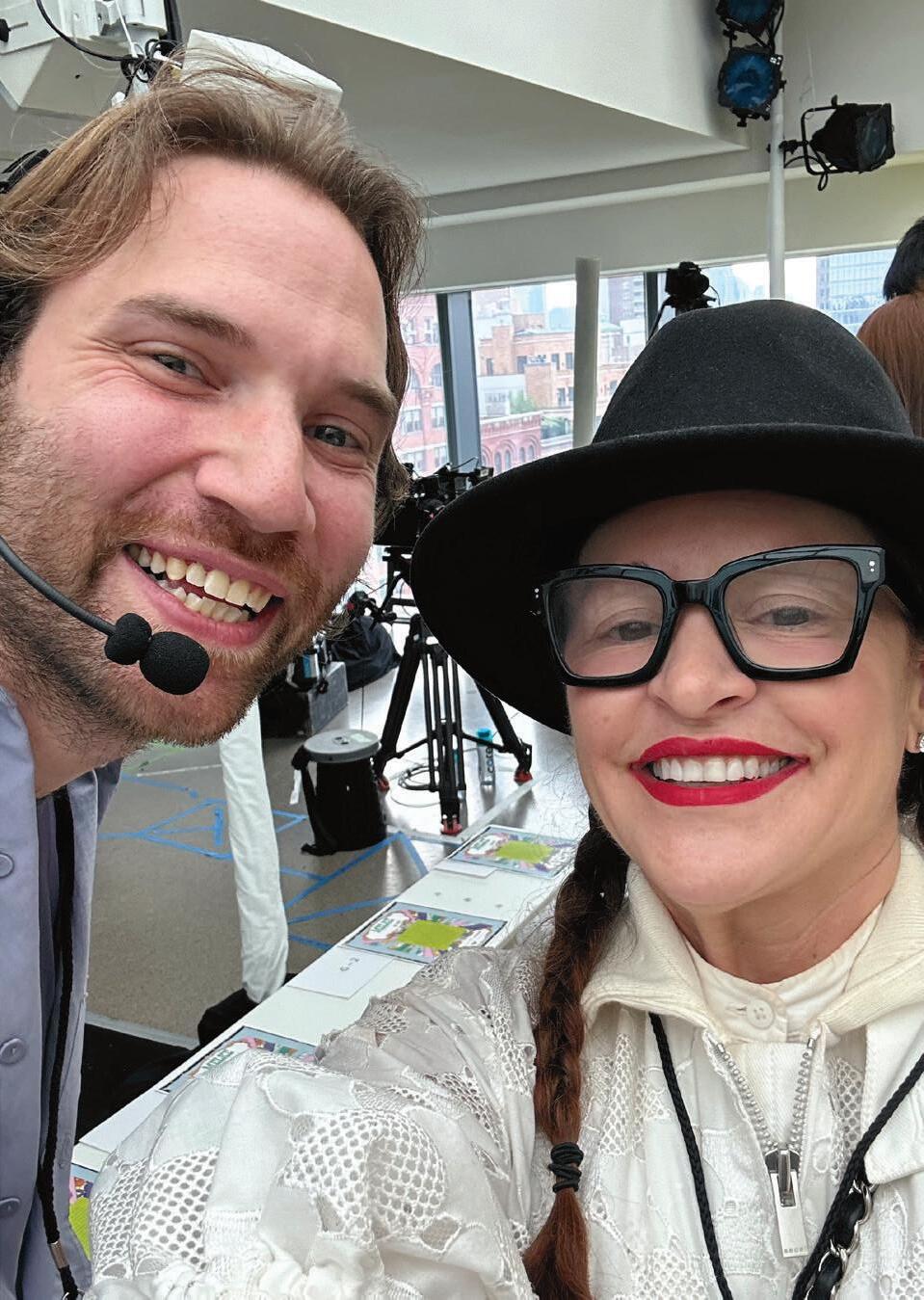

beautifully merchandised, family-owned department store with top luxury brands and two of the nicest merchants in the industry: what a concept! Here, we talk to the two guys who make it happen in Kansas City.
Let’s start with some background: how did each of you end up in retailing?
Al: Being in this business now for 40+ years, it’s tough to remember the beginning. I grew up in a small town in Iowa, went to school in Omaha. My first job involved sitting at a desk all day. Totally bored, I took a part-time sales job at a department store and, believe it or not, fell in love with it. I loved being around customers, finding the perfect product for them, getting good feedback. I felt I’d found my calling and took a job with Halls, starting in sales and working my way up to manager. I’ve been buying now for 20+ years.
Todd: When I was very young, I’d help my mom with her garage sales. I couldn’t sleep the night before because I was so excited to wake up and arrange and ticket everything. I’d get the money ready in a muffin pan and we’d be set for business. My mom and I both knew I was destined for a retail career. Right out of school, I worked for Mercantile Stores as an assistant buyer. I ultimately took a job as a buyer for Halls. That was 26 years ago: Al and I have worked together ever since.
One thing about Halls: people stay a long time! We’re owned by Hallmark Cards, a great family business. They’re wonderful people, they do so much for the city, and they know how to take care of their employees.
Any mentors along your paths?
Al: For me, it was Robert Leitstein. He came from Gump’s in San Francisco and ran our store for many years. He always believed in better/designer product and taught me so much about quality. His advice: “Don’t be afraid to go after something you believe in. Even if you don’t think you can sell it, at least give it a shot.” Because of him, we stood for luxury. And still do.
Todd: Ditto from me. Robert Leitstein was all about quality. I remember getting a call from him once: did Lacoste change the sourcing on their Peruvian cotton? If he saw a thread on a shirt, he’d question the brand’s quality control. He was also very focused on how the selling floor was staged. We didn’t carry denim back then, but when 7 For All Mankind and Diesel came along, he suggested we try it. It’s now a $2+ million business.
So many department stores are struggling these days; why aren’t you? (Some assume it’s because as a private company, you don’t have to report your figures…)
Todd: That’s not true! We certainly report to the family, and Hallmark very carefully watches our numbers. But this year, sales increases have not come easily, and margins have been down a bit since we’re competing with nonstop promotions at the big department stores.
Is the problem the election year, global unrest, or just too many ways to shop?
Al: When the world is unsettled, luxury customers tend to hold back a bit. And we carry a lot of luxury goods. That said, our sellers are closely connected to our customers so we’re getting them into the store. They’re just not spending like they used to at the very top layer; hopefully they’ll jump back come fall.
Todd: The business in luxury streetwear and expensive sneakers has surely slowed, but some luxury brands, like Zegna and Purple Denim, are among our top sellers. We’re also seeing increases in the tier right under luxury: brands like L.B.M., Theory, Vince, Samuelsohn, Jack Victor, Brax, and PT Torino. We used to carry good/better/best, but we’re now concentrating on better/best, except for a few fashion brands like Tallia and Paisley & Gray.
We don’t put those brands next to Zegna, but devoting space to the right affordable brands works for us. Al and I have been around long enough to have witnessed today’s Tallia and Paisley guys becoming tomorrow’s Zegna guys.
Can you give us some basic facts on Halls menswear business?
Todd: It occupies 12,000 square feet of selling space, tailored clothing is 23 percent to total men’s, made-to-measure is 32 percent of tailored, shoes are 17 of men’s (mostly because Al’s done a great job with the category).
Al: At 32 percent of our clothing business, there’s still room for growth in made-to-measure. Once you get a new MTM customer, you have him pretty much for life. Some come back every season, some come back once a year, but with a good experience, they always come back.
How many men’s brands in total?
Todd: I’d rather not answer that because it’s probably too many and we’ll hear about it.
Then your key brands?
Zegna, Peter Millar, Canali, Purple Denim, Hugo Boss, Theory, Ralph Lauren, LBM, Eleventy, Jack Victor, Brax… In shoes we carry designers like Ferragamo, Christian Louboutin, Alexander McQueen, Dolce & Gabbana, Magnanni, Johnston & Murphy…
Can you sum up what’s hot and what’s not in men’s?
Al: We’re selling a lot of five pocket pants and soft jackets. There are so many different versions of soft coats from designer to moderate, which really helps attract a younger customer. My take on pleated pants: if done in a modern way, they should sell. I do believe we’ll ultimately cycle back to pleated, fuller-cut pants. It might not be while I’m still here, but in time, styles always come back. Even young guys now seem uncomfortable in very tight, above-the-ankle pants; they’re liking a more relaxed, more professional look.
Todd: What’s not working for us: Those oversized boxy cuts from some of our streetwear and contemporary brands. That’s been a struggle, especially among guys who work out and want to show off the results. The market for oversized menswear is very small; too many brands are showing too much of it.
What’s do you feel is missing from the market these days?
Al: I’d like to see more new jacket models from both tailored and sportswear companies. Zegna has done a fantastic job coming up with new types of jackets and overshirts that fit into a more casual lifestyle.
Todd: I don’t think the market is missing anything, but I do believe that carrying a few affordably priced brands has contributed to our success. Many of our most affluent customers wear Vuori and Patagonia on weekends; we don’t shy away from select, affordable brands. Vuori sells like crazy!
What key challenges is Halls currently confronting?
Todd: A widespread issue is luxury brands so focused on their own stores that they no longer need the independents, even those they’ve been selling for 20–30 years, especially those that don’t sell on consignment. Some of them would rather not be in a city like ours, even with our 2.2 million people. It’s a major concern. I was in a luxury department store last weekend and virtually all their brands are on consignment, so the person selling Gucci won’t bother to help you with anything else.
Are your sellers on commission?
Todd: We wouldn’t do it any other way! We want to reward the
people who are prepared, who plan out their days, who take the time to make friends with their customers. Professional sellers should be rewarded; the good ones are making $150–$200,000. The top seller at Nordstrom recently came over to our store because he saw the value in what we’re doing and wanted to be part of it. We want our strong sellers to make money. We want the best people.
We also reward them with market trips once they reach certain thresholds. Not only do they enjoy the experience, but gaining product knowledge makes them better sellers.
Al: The best ones are those who take the time to learn about their customers, their families, their interests. In this way, a personal friendship is established that goes both ways. Vendor seminars and MTM events also help our sellers gain the tools to communicate back to their customers. And after every vendor seminar or trunk show, we inevitably see nice sales increases in that brand.
Todd: I’m a little concerned about vendors cutting back on in-store events. Yes, we all need to reduce costs these days, but regional salesmen who once covered five states are now covering 12, making their jobs much harder. I just hope brands don’t lose sight of the value of in-store events.
Al: Even just stopping in and saying hello to our guys on the selling floor is a strong motivator. It shows them that Halls is important to that brand.
With business erratic lately, what’s your promotional strategy? What do you do with markdowns and end-season goods?
Todd: We don’t liquidate to other sellers, but we do mark down until everything sells. We follow our vendor partners in choosing the right times. It seems like most big department stores are running at least 20 percent off every week, or else they give gift cards with purchase. Our main competition is not in Kansas City but at Neimans and Saks in Dallas, Chicago, and Denver. We’re not as promotional as they are, but keeping up with their promotions is impacting our margins.
How much of your business do you do online?
Todd: We have a website, but we don’t sell online. This is surely
our biggest untapped opportunity, but until we determine how much volume we could do and how much it will cost us to do it, we’re on hold. We’re owned by Hallmark, and obviously they do e-commerce, so setting it up is not the problem. We just need to figure out how to make it profitable.
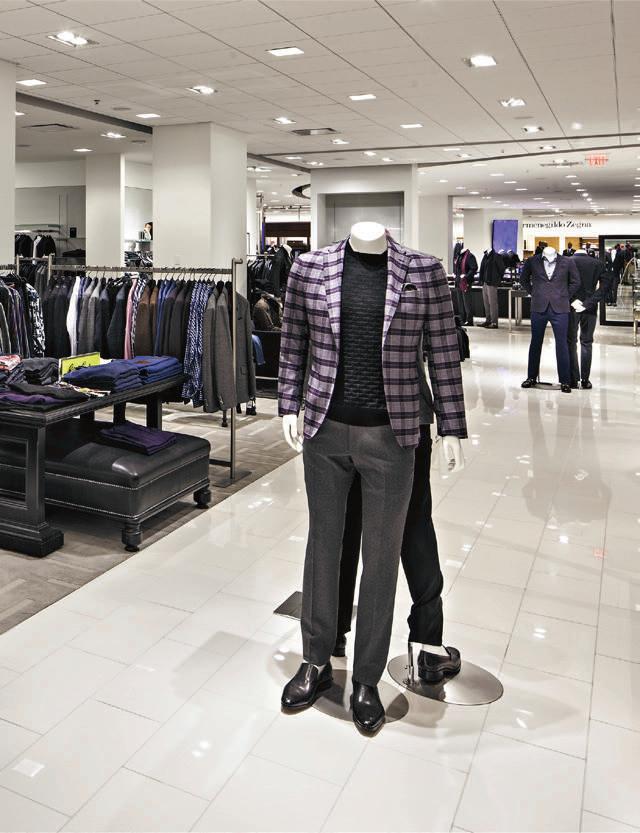
With streetwear less in demand, what’s your strategy for attracting younger guys?
Al: I believe our range of price points is key. When fathers come in with their sons, the dad might say no to the Zegna sport coat but yes to the more affordable Hugo Boss. Being here for 40 years, I’ve watched a lot of those sons grow up. They now own their dad’s business and they’re buying the Zegna!
Another way to get young guys: wedding business. Recently, we started exhibiting at wedding shows with an opening price tux/ shirt/tie package at $350 retail. It’s an all-wool suit including Halls tailoring; you can’t rent for that price anymore! So let’s say there are 10 groomsmen in the wedding party: that’s 10 guys who never knew we existed coming into our store for the first time.
Your biggest mistake and/or lessons learned?
Al: I’ve learned to be prepared for the ups and downs; you’re always going to have them! And the most important way to get through tough times is to cultivate relationships with your vendors. You must learn to listen: to your vendors and to your customers. By listening, you’ll make better business decisions.
Todd: My biggest shortcoming is not figuring out the e-commerce component. The other big one is relying too heavily on some of the luxury brands that we’ve nurtured for years but that are now choosing D2C over independent stores. We’ve got some wonderful brand partners out there, and they’re the ones we’ll continue to invest in. Your future plans, business and personal?
Al: Everyone always asks when I’m going to retire. But truth is I love what I do and being in this business keeps me young in many ways. As long as I’m still on top of my game, I’ll continue to work. Maybe at some point I’ll work part-time, maybe at a gym or a nonprofit. As long as I’m around people, I’ll be happy. But right now, I like where I am. I’ve seen too many people retire and then go dramatically downhill.
Todd: On the record, I’m extremely grateful that Al isn’t planning to retire! My goal is to build the next generation of leaders at Halls. I love nurturing personal growth in our talented employees. So that’s my goal: to ensure that Halls will be around another 100 years, and to get the next generation enthusiastically involved.

“Al Leinen has been a key factor in Halls success story for many years. He has a fantastic taste level, buying everything from classic luxury to modern designer. He’s not only one of the hardest working, most professional buyers in the industry, but also one of the nicest guys you’ll ever meet.” —Marc Spero, Lubiam
“I have known and enjoyed working with Todd for over 20 years. He is the consummate professional and an overall terrific guy! He is always pleasant to work with and full of industry knowledge with exceptional great taste. Halls is lucky to have him and I’m equally lucky to know him.” —Joe Cook, Paisley & Gray
“I’ve known Al for more than 25 years. He’s a great merchant and fashion visionary, with a good feel for what’s coming next, be it a particular fabric, color, or model. He is always thinking about what’s coming next season, and never afraid to take a risk! He’s also a great communicator. It’s a pleasure doing business with such a professional partner.” —Nelson Suriel, Jack Victor
“Todd and Al are two of the most passionate retailers with ‘great eyes’ for fashion and for what sells in Kansas City. They lead one of the finest stores in the country with both skill and humility, and they’ve assembled a terrific selling staff that executes their shared vision every day.” —Michael Holdstein, Peerless
“Todd and Al are two of the finest gentlemen in our industry, known for their fierce passion for fashion. I have always been impressed with their knowledge of the finest brands throughout the world. We are all fortunate to work with such remarkable merchants.”
—Scott Ruerup, Peter Millar
MR
Celebrating a century of change.By Karen Alberg Grossman
ery few people,” confides Rubensteins’ president, David Rubenstein, “know the real reason we’re in business, now for 100 years. Our uncle Morris, in 1924, wanted to marry his girlfriend. Her father, a successful Memphis businessman, would not allow Morris to marry his daughter until he found a decent job. So Morris and my daddy rented an 11x14 space at 102 St. Charles Avenue and opened a store so Morris could marry the woman he loved. It was a tiny store, but they rented adjacent space as it became available, and by 1938, they pretty much occupied the entire corner building. Soon after, they bought the building they’d been renting, renovated, and ultimately leased out the space they weren’t using. This was before the war and business was good,” David explains. “Daddy ran an ad in the local paper announcing the opening of their brand-new store. It was December 8, 1941, the day after Pearl Harbor.”
For as long as they can remember, brothers David and Andre worked in the family business. As David explains, “Our mom died when I was a couple of months old, so Andre and I lived with our father, Elkin, and our single aunts. After school, we’d take the streetcar down to the store, Daddy would meet us at the stop, and we’d spend the afternoon working in the store. At 8 and 10 years old, we’d work in the stockroom. If we did a good job, we got a quarter each; if we swept the floor, we got an extra dime. There was a movie theater next door and Daddy would sometimes let us go there. The store closed at 5:30 during the war and Daddy would come charging into the theater shouting ‘Andre, David, time to go home!’ We never got to see the end of a single Roy Rogers movie!”
How did your father and uncle stay in business during WW11?
They were smart and built strong relationships. At that time, you couldn’t get white shirts because the fabric was needed for bandages, but they were good friends with the folks at Arrow, who offered to produce one more big cutting to see what happened. There were lots of young men getting out of the army at the time, so Morris and Daddy mailed out postcards saying, “Let us know your shirt size and we’ll put aside a white shirt for when you get back home.” That’s how they got their clients’ sons as customers. How have you managed to attract younger guys more recently?
I graduated college in 1962 when there was this big Madison Avenue look that started in the late 1950s. Since young men dislike shopping in their fathers’ store, Morris built a wall along the side of the store with an entrance from the street so young guys could walk up to our second floor Madison Shop without being seen from the main store. The kids loved it because they could charge everything to their fathers’ accounts!
How did Rubenstein’s evolve into the luxury business?
I had great teachers around me. Uncle Morris showed me early on how easy it was to sell expensive Louis Roth clothing from California to the wealthier clients who wanted to show off their success. He’d say that even fishermen in the Bayou would spend big bucks on clothing if we could just find that leader to legitimize the investment. Ralph Lauren confirmed this leader of the pack theory, showing me that finding the leader would bring in other customers aspiring to that upper-crust group.
What were the toughest times for the store over the years?
Surviving through hurricanes. But from tragedy, we learned that we have many fabulous friends in the men’s industry. We get lots of help every time a hurricane hits and we are tremendously grateful. Your survival secrets?
My father always talked about “cash flow.” That works well. It also helps that we’ve maintained a strong relationship with our bank. And fortunately, since we acquired the buildings, we have an income from the real estate, which takes much of the pressure off. When we were young, the store was our only source of family income, so it was a whole different world. Most importantly, we’ve learned to work together across generations, which creates a healthy family dynamic.

What do you see as your competitive edge?
Our competitive edge is location, winning brands, and a great staff. Also, the Forum Group has been an important component of our longevity: they bring to our attention new luxury collections and give realistic advice on solving problems.
Your greatest challenge these days?
Finding and training new employees, both sellers and tailors. But if you put in the time teaching them, they’ll stay very loyal.
What would you change about yourself if you could? I’d like to be a little more patient when someone I’m trying to teach is reluctant to learn.
What’s the best advice you’ve received in your career?
I learned from my father who learned from a friend in Memphis: “If you want your children to go into your business, pay them more money than they’ve ever seen.”
A quarter or two back then seemed like a fortune to Andre and me compared to our weekly allowance.
Also from my father, I learned to change with the times. When I was considering careers, Daddy said that as long as men are not walking around naked, I’d have a future in this business. He told me, “Just remember to change with the times, as we did when styles changed from shirts with separate collars and cuffs to the new Arrow dress shirts.”
There isn’t a brand in the store today that was here when I started. Change is the lifeblood of the business. So many retailers these days are panicking because certain status brands are going direct to consumer at the expense of the independent specialty stores. Don’t panic. Change is good. Customers came in for Armani and Zegna because you were showcasing Armani and Zegna. They’ll continue to come in for whatever brands you showcase next. Your sellers are on commission. Why do you favor this type of compensation when many retailers have moved away from it? Because there’s no limit to how much a talented seller can earn. If a seller is really good, let him make money! It’s the incentive for him to sell luxury product. You’ll get your share because he’ll be selling more, and more expensive, goods. A group incentive makes sense as an extra bonus, but then you’re dependent on
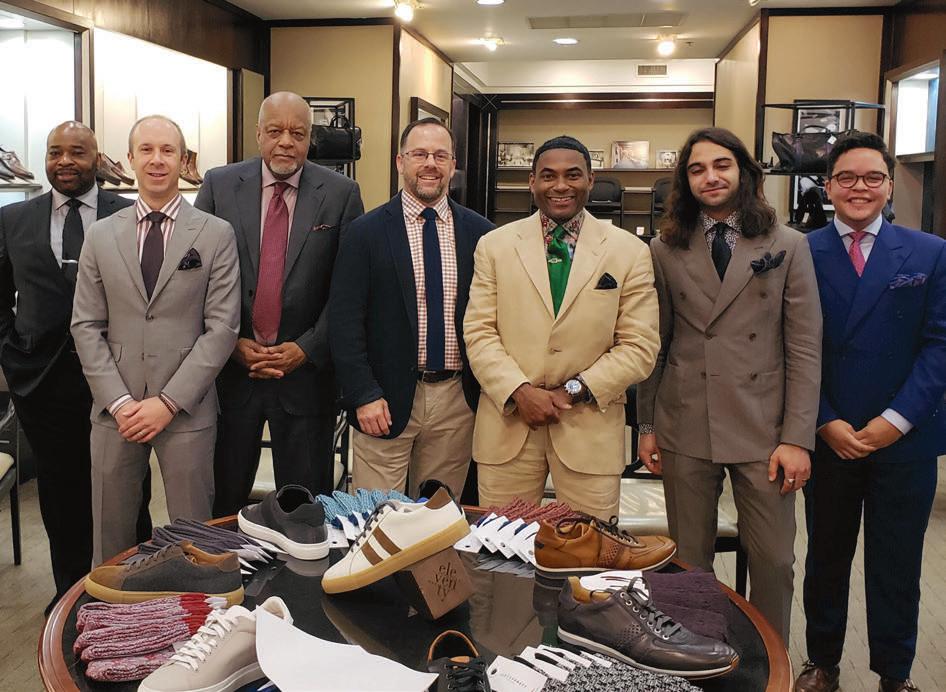
THE LIFEBLOOD OF THE BUSINESS.
others, which doesn’t motivate everyone. No one should have to live off anyone else’s wallet.
How did you end up with a luxury hotel adjacent to your store?
This brand-new hotel was suggested as a partnership by one of our local friends in the boutique hotel business. (Having an experienced partner meant we didn’t have to carry luggage or park guest’s cars!)
We realized it was a great use of the buildings we owned that were not fully utilized, and important to provide a source of future income for the next generation. It’s still too early to tell exactly how much impact the hotel will have on our menswear business; we’re still learning how to attract the hotel guests into the store. What’s hot right now in menswear?
Everything is selling well. We have a great customer base in both our local customers and our visitors. We see an irreversible shift to sport coats over suits (by units) and “casual” pants over dress pants. Shoes are selling well, and not just sneakers. New Orleans is still a party city and people dress up, so our penetration of tailored clothing is considerably higher than most independent stores. How’s Gen 3 doing in the business?
They’re doing great, as are our younger non-family sellers who relate to the new fashion trends. Trust me: we’d be in big trouble if my generation had to deal with all the electronics and digital components needed to run a store today.
Are you worried about current business in an election year and a world at war?
No. I don’t think the election will affect the economy as much as people think: nobody likes either of these candidates, so much of the population has stopped paying attention!
What would you do differently if you could start your career over?
I wish I’d listened to my father when he warned us not to go into the women’s business. We did, and it was the same failure he experienced years before. Other than that, I have no regrets. I feel like the luckiest guy in the world. I love my wife, Niki (who’s been by my side through it all), my children and grandchildren, my work, and my life. I know I’m incredibly fortunate to be in a business where I get to see friends and family every single day!
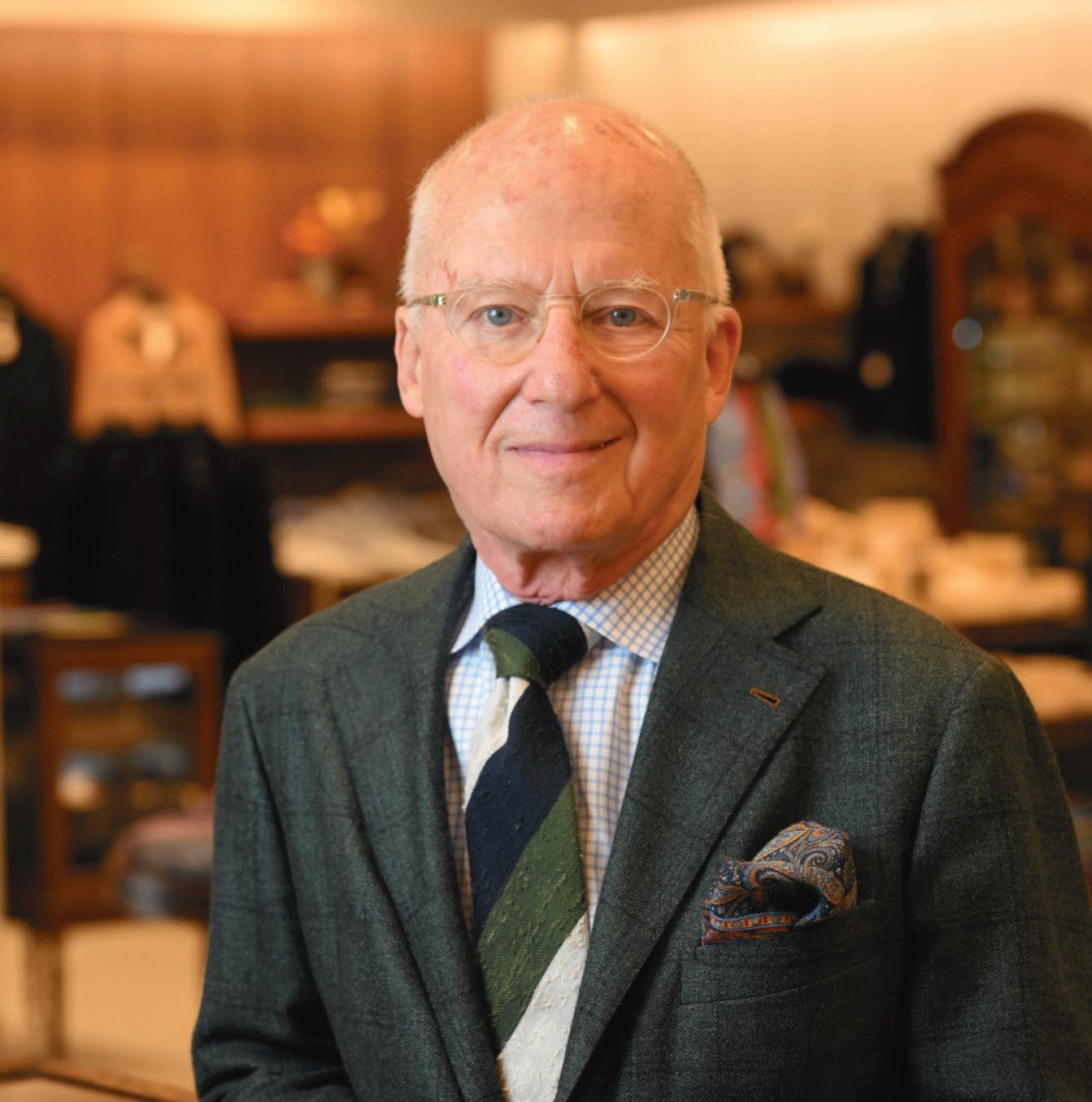
MR AWARDS
HALL OF FAME 2024
David Rubenstein of Rubensteins
We are so proud of you!
Hugs from The Forum Group
Andre’s son Kenny, chief experience officer, and David’s daughter Allison, marketing manager and jack-of-all-trades, answer a few questions.
What’s the best and worst part of working in a family business?
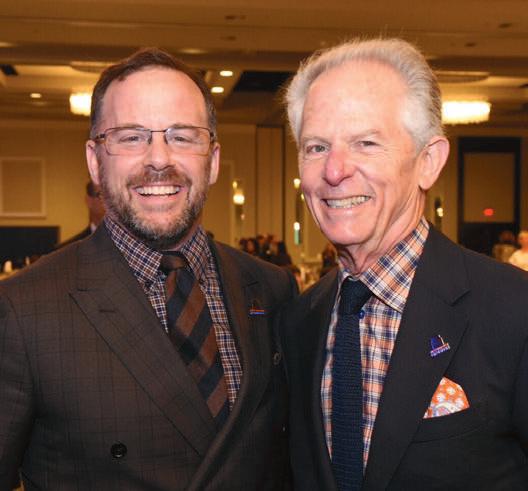
Kenny: The best is family: people who share my pride of ownership, purpose, and struggle. The worst is also family: it’s much easier to deal with partners, bosses, and employees who are not your father, uncle, or brother. It’s tough to separate the family from the business, but sometimes you have to.
Allison: The worst part for me: the hurricanes. During Katrina, so many people lost everything, couldn’t get money from the banks, and were in desperate situations. That’s when I decided I didn’t want a full-time executive position at the store. I wanted to work here part-time doing whatever’s needed but remaining always available to my children. Dad and Andre have devoted their lives to the business because they love it. I love being with my kids. I remember years ago, Lisa Michael from Larrimor’s told me she’ll work harder than anyone at her family’s store as long as she’s the one picking up her daughter from school every day. That comment stayed with me.
The best part of working at Rubensteins is my close relationship with my parents. I’ve worked at the store more than 23 years and we’ve gotten even closer. Every morning, we get coffee together. We talk about grandkids, the store, new restaurants; we have Sunday night dinners together. This time is so special, and I realize how few people have the opportunity to connect with their parents every day.
What have you learned from working with family?
Allison: From my dad, I learned to be kind. I can’t tell you how many people come into the store and share wonderful stories about Daddy: what a thoughtful and generous person he is. This morning when I drove by the fire station, I remembered that every morning on my way to school, we’d stop to drop off a box of donuts for the firemen.
Kenny : From my father, I learned how to be a part of a community, as well as patience and levelheadedness in dealing with employees. My uncle has taught me the value of relationships: with vendors, clients, and employees. He also taught me how to be more direct and ask for what I want, particularly with vendors. And to look for the changes, the updates, the newness in what I see. I no longer walk into a vendor and ask what they’ve got; I now ask what they’re doing differently, what changes they’ve made since I last saw them.
What are the odds of a fourth generation joining the business?
Allison: I’m not sure. As of now, my daughters aren’t even close to knowing what they want to do. My husband is a lawyer and they’re certain they don’t want to be lawyers. I guess that means there’s a chance…
Kenny: I’d love for my kids to join the company. This is a wonderful career where every day is different, and you meet people from all over the world. Currently, my kids are out in the world establishing themselves in the workforce and generating their own credentials. I look forward to a day when I might work with them in the store, or else observe them from a remote Caribbean island…
“I’d like to extend my heartfelt wishes to David, Niki, Kenny, Andre and Allison. This remarkable family has navigated countless challenges with grace and resilience. Their unwavering dedication and commitment to excellence have been cornerstones of the New Orleans community for many years. Despite the challenges that often accompany working together as a family, they’ve consistently delivered the finest service and quality apparel to the area.”
—Robert Stock, designer
“David Rubenstein is that rare merchant always open to discovering new product and blending Southern culture with an infusion of international elegance. David and his family have created a destination shopping experience; I offer my deepest congratulations on their success this past century and a toast to the next one.” —Massimo Bizzocchi, Kiton
“David Rubenstein is a prince of a man, a firstclass gentleman. I consider him Southern Royalty.”
—Ron Wurtzburger, Peerless
“David’s achievements stem from his love of our industry, a deep understanding of his customers, a curious and creative mind, and his commitment to New Orleans and the family business. I also count David’s warm and engaging style and personal charisma as key factors in his long and successful career. What a deserving choice for the MR Hall of Fame Award!” —Alan Victor, Jack Victor
“I have known David for a long time, thanks to the longstanding loyal relationship between Rubensteins and Canali. He is a meticulous, precise and analytical merchant with a deep knowledge of his market and clientele. Dedication, passion, and business acumen made it possible for the business to reach this century milestone. His genuine interest in many subjects always make appointments and lunches very interesting and engaging.”
—Giorgio Canali
“David Rubenstein has always been an amazing mentor to me. He’s a great friend, the unofficial mayor of New Orleans, and the most upbeat, positive person I know.”
—Howard Vogt, Rodes in Louisville
THE DALLAS MEN’S SHOW JULY 27 - 29, 2024
Featuring 700+ of the most sought-after brands across multiple categories of apparel, accessories, and footwear – golf, outdoor, sportswear, classic, contemporary & more!
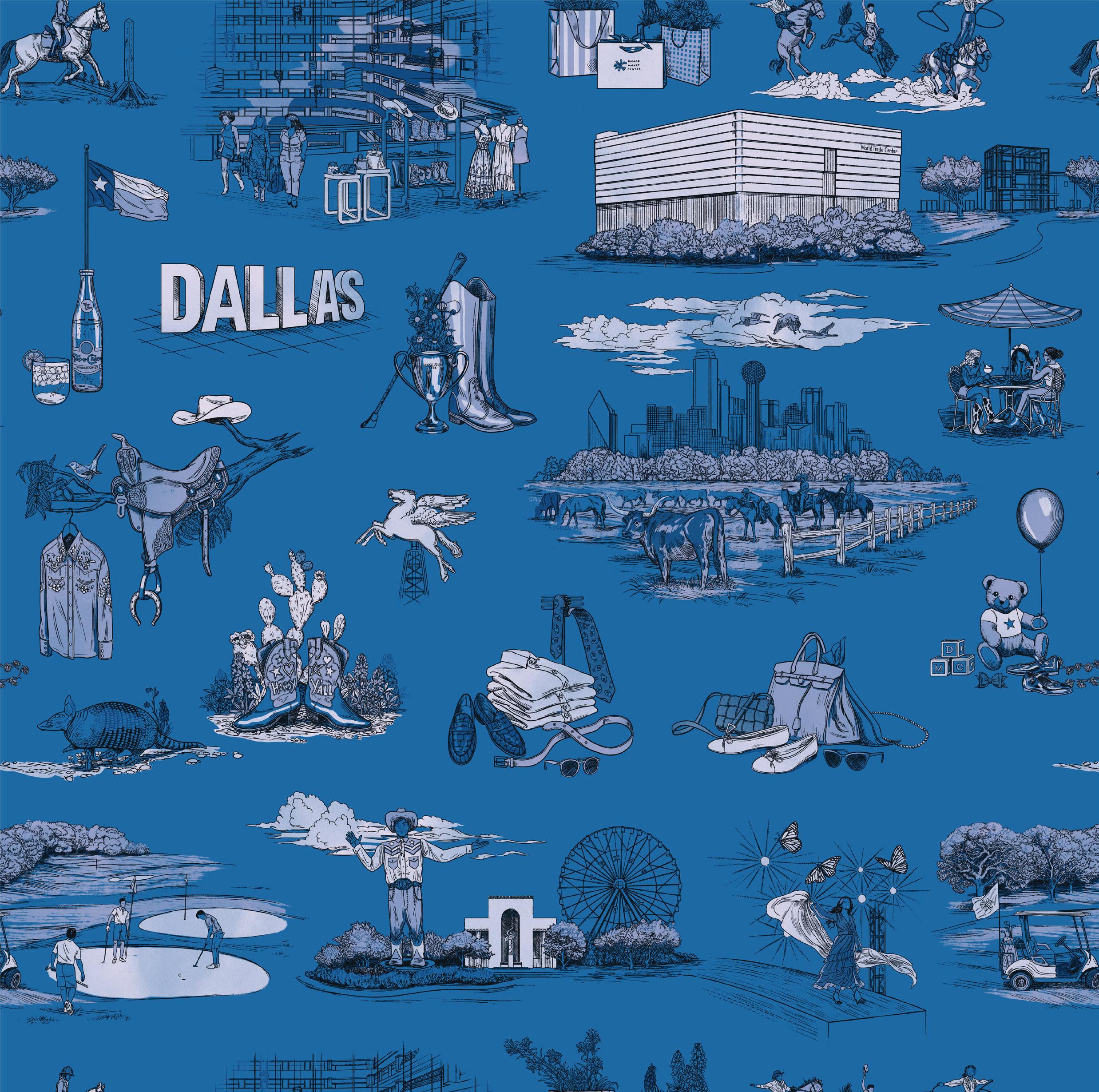
PGA GOLF EXHIBITIONS RETURNS TO THE MEN’S SHOW THIS SUMMER

PLAN AHEAD: THE REIMAGINED DALLAS MEN’S SHOW | JANUARY 25-27, 2025 PRE-REGISTER NOW
rowing up in Cuba, we were very poor,” George Feldenkreis begins the tale of his amazing life. Born in 1935 to Ukrainian immigrants Elisa and Herman Feldenkreis, George went to work at age 15 for a Zionist organization. “I was a typist, in charge of tracking contributions, alphabetically by donor and by street. If I made a mistake, I’d have to re-do the entire list, looking up street numbers all over again. Instead, I chose to memorize the list; this was easier for me than looking it up all over again. To this day, I still remember the names and addresses of the donors.”
George also remembers his boss at the time: a German Holocaust survivor who was a perfectionist and tough to work for. “It was, in a way, a positive experience,” he recalls. “I learned from him that when you approach a task, the only way to do it is the right way: don’t even think about shortcuts! I also learned that if you have money, the best thing you can do with it is give it away to those in need. You can’t take money with you, but you can use it to improve lives. It’s always bothered me that there are people with plenty of money who don’t give back at all.”
George’s connection to Israel dates back before Israeli statehood. “I remember the exact day in 1945 when my mother learned from reading The Forward, a Yiddish newspaper in Havana, that her entire family was murdered in the Holocaust. I can still hear her sobbing: her five brothers and all their young children perished in the camps! Her tears left a lasting impression on my brain of what happens to Jews when they don’t defend themselves.”
George never forgot his mother’s pain. Although he attended secular schools, he became involved in Zionist organizations as a teenager. “I was a leader in some of those groups,” he recalls. “I learned a lot about Israel, and for the past 40 years, I’ve dedicated a good portion of my life to supporting Jewish causes and preserving Jewish values.”
Before fleeing Cuba, George had a government job as comptroller at a big construction company; his father and brother were in the import business. “There were no textile exports from Europe during WWII (they needed the cloth for bandages) so my brother would travel to Japan and Europe, importing everything from auto parts to small radios to refrigerators… Since I was unable to finish my last year of law school (Batista had shut down the university), I set up a home office and, in 1957, joined my family in the import business, repping six major companies, including Panasonic and Toshiba. My brother wanted me to move with him to Puerto Rico, where he had several good customers. I told him that even if I had to work as a typist, I’m moving to the United States, not Puerto Rico. ‘Americans won’t buy from people with accents,’ my brother advised me. ‘It won’t be a problem,’ I assured him. ‘I’m not the salesman; I’m the inside guy. I’m not worried about my accent: if I can give them a good price, they’ll buy from me.’”
By December ’59, with the ascent of Fidel Castro, government takeovers of private property, and the demise of individual freedoms, George knew it was time to leave Cuba. “I knew that soon, we’d be unable to make a living,” he explains. “My brother left in May of 1960; I stayed another year until I found out the police were looking for me. I finally left everything behind and moved to Miami in 1961. I was 26 years old and married; my wife stayed in Cuba but fled with our son, Oscar, on his first birthday. My daughter, Fanny, was born at Mt. Sinai Hospital in Miami, USA!”
The family import business eventually evolved into apparel. “We found a few Japanese manufacturers who made kids’ shirts, blouses, and pants for back-to-school. We bought 25,000 dozen of each and I asked if they also made guayaberas. They gave me a blank stare, so I sketched a guayabera on a piece of paper. ‘Oh, you mean Mexican wedding shirts! Of course, we make them!’ So we bought guayaberas, and business flourished.”
In 1988, the company shifted from children’s wear to men’s, buying the iconic Perry Ellis license in 1999 and turning Supreme International into Perry Ellis International, a multi-brand public company and successful fashion conglomerate. Today, under private ownership and under the direction of George and Oscar, the company has 25+ brands, about 3,000 employees, and annual retail sales estimated around $3 billion. With sizable investments in online D2C, licensing, and stores, the company is growing
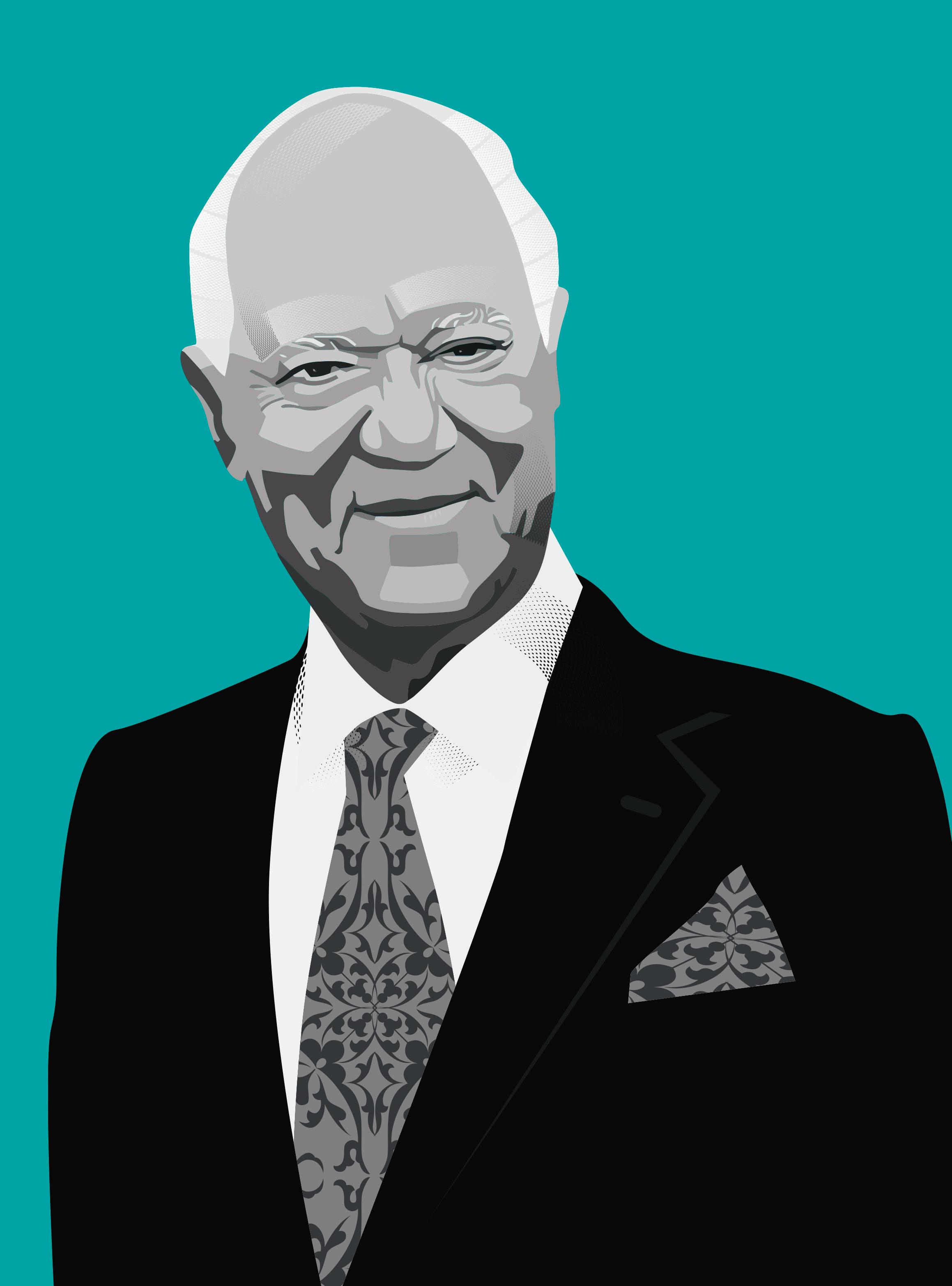
both in the States and globally.
I ask George what personal characteristics most account for his business acumen. “All my life I’ve been curious,” he explains. “I believe in learning something new every day, which is what allows me to think ahead. When people were still taking notes with pens and pencils, we already had IBM computers. With so much talk these days about A.I., I was thinking two years ago about how to incorporate artificial intelligence into our company. We started doing digital printing on textiles long before anyone else was doing it. While most American companies were using pigment dyes on pique knits, we were using reactive printing on interlock, resulting in a much softer hand.”
George talks about the current state of the apparel business. “After losses during the pandemic, 2021 and ’22 were strong years, so of course everyone overbought for 2023, including us. So fourth quarter ’22 through 2023 were difficult. Inventory can be your best friend or your worst enemy. If you buy just to fill the warehouse, it’s a big mistake. You’ve got to first ensure you’ve got the orders.”
On the state of men’s fashion, George admits he gets frustrated seeing well-dressed women with carelessly dressed men. “Men who dress up are a minority,” he observes. “These days, even on Saturday nights, guys go to nice restaurants in shorts and T-shirts, especially in Miami where it’s hot. But certain clothing businesses are picking up. I see movement in the off-price segment: young guys are buying affordable suits and sport coats. Sports-related apparel is clearly a growing segment.”
Much admired for his extensive charitable contributions, (largely to education, health care, and human services), George is equally known for his work ethic. He shares an example: “Yesterday was a beautiful Sunday; my wife was going out with a friend, and I was planning to take care of some paperwork. When she gets home from her outing, I’m still at my paperwork. ‘Put it away,’ she scolds me. ‘What’s the difference if you finish today or tomorrow?’ ‘A big difference,’ I responded. ‘Tomorrow is not today…’”
Of all his accomplishments, George is most proud of his family: his wife Mariita, son Oscar, daughter Fanny, eight grandchildren

I’M NOT WORRIED ABOUT MY ACCENT: IF I CAN GIVE THEM A GOOD PRICE, THEY’LL BUY FROM ME…
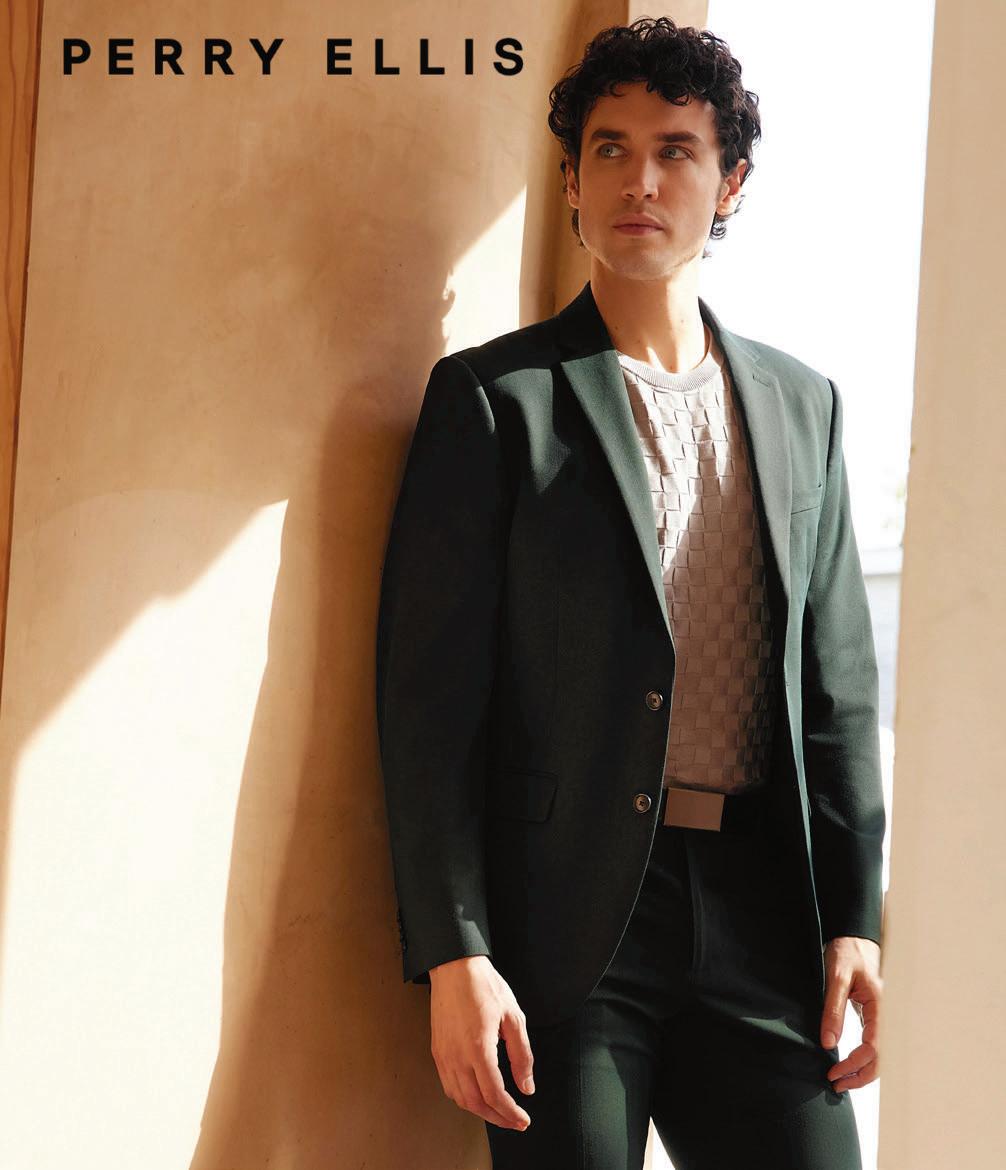
(“But three are still single,” he worries. “Those might be the smart ones,” I respond.) and 14 great-grandchildren. “I’m very proud that I’ve influenced my children through my work. They see that giving back is part of my DNA, but it’s not just giving back. It’s also being actively involved—in the Jewish community and in the community at large—to ensure that Jewish people are respected, that women are respected, that human beings are respected. I’ve served on the boards of the Jewish Federation, the University of Miami, the Simon Wiesenthal Center, UJA, and many others. To get an organization to do what you believe needs to be done, you must get involved. I’m proud that both Oscar and Fanny are active in numerous organizations that serve the people of Miami and citizens of the world. But sadly, I see my generation passing without the next generation stepping up to the plate. I’m counting on my grandchildren and great-grandchildren to be part of the change. That would be my legacy, and my greatest joy.”
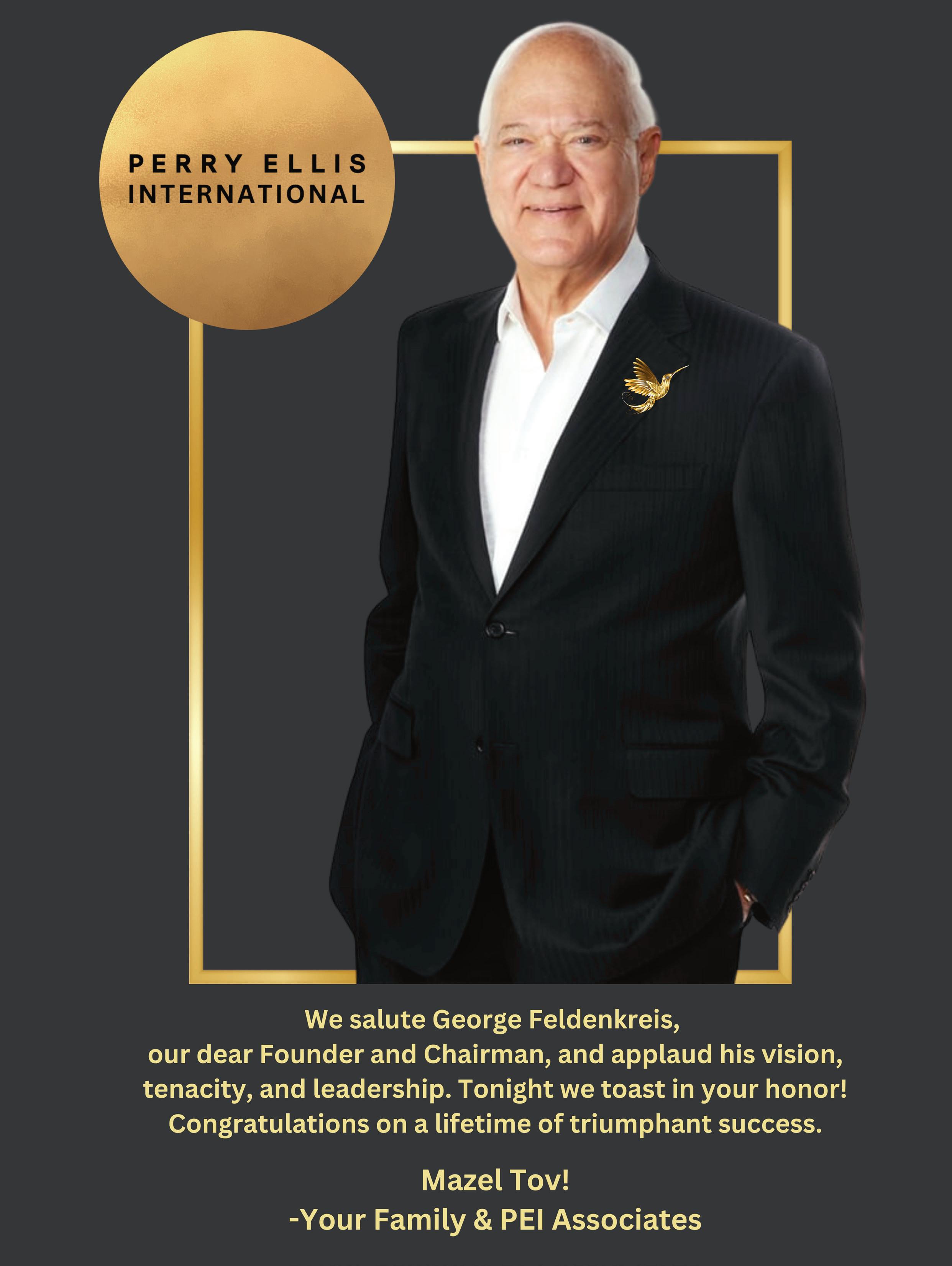
What have you learned from working with your dad? If I had to list all the things I’ve learned from him, it would take 900 pages! But in a nutshell: I’ve learned to be humble, to give back, to listen. I’ve learned integrity. I’ve learned to read, because knowledge is king. I’ve learned to keep learning.
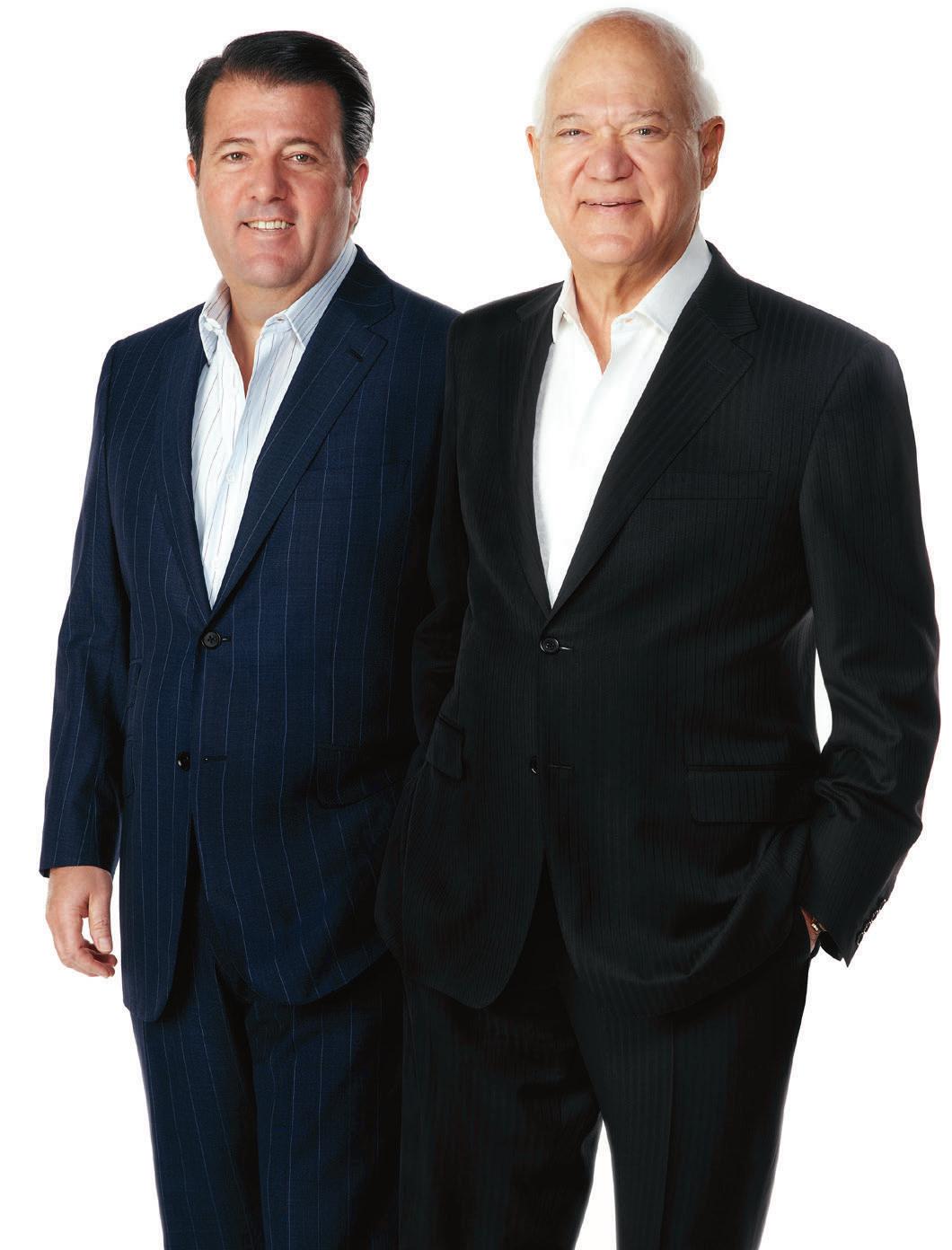
GEORGE_OSCAR_COMBO.tif
What might people be surprised to learn about your relationship with your dad? While George always treated me like a friend, he made sure I wasn’t given anything without working hard for it. I once asked him how he could expect me to live on the salary he was paying me; I couldn’t even rent an apartment with that small amount! He told me that I have choices: I could look for another job, learn new skills, and maybe make more money for an apartment, or I could learn the business from him and live at home for a while.
How is your management style different from his? Because my dad has a lot more years on me, he remains calm over big decisions while I get stressed. I tend to decide quickly by gut feeling and he reigns me in with a reality check. But he’s always allowed me to make mistakes in hopes that I’ll learn from them. If it’s a really big decision, however, he’s not so lenient. When you come from nothing and create a business from scratch, it’s a different mentality. Which is why so many businesses fail when the founder sells or retires.
Best advice your dad has given you? Never be arrogant. Hard work brings rewards, but you must work hard with passion. Don’t buy too many warehouses so you’re not tempted to carry too much inventory.
How’s business these days? The men’s business continues to do well, as do all-gender sports, including golf, tennis, pickleball, and swim. Perry Ellis has become a wear-to-work brand; our new creative director has a great taste level and is making a difference. Online is a fact of life today and continues to grow, but we’re also experiencing double-digit growth in brick and mortar. We have about 80 stores in the States and about 100 internationally through our licensees.
Private vs. public: which is better? Having experienced both, I have to say I’m happier being a private company, but we’d never be where we are today had we not gone public.
To what extent are your children involved in the business? One of my daughters, Erica, has been working with me for 15 years. I also have a cousin and nephew in the business. The others have chosen different paths, including parenting. What are your goals moving forward? To continue to look for opportunities via acquisitions and/or licensing. To continue to work with passion and without arrogance. To enjoy my wonderful family and all the good things in my life, including my best friend and hero, George Feldenkreis.
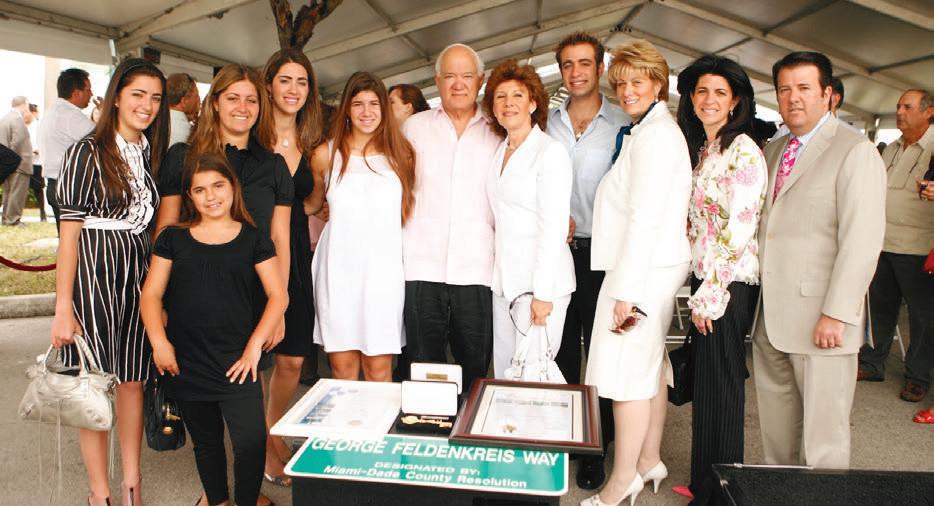
“George is an amazing entrepreneur who climbed the ladder his way. He’s known to be tough but fair, which is why he’s widely respected in the industry. His generosity to so many deserving organizations is legendary. What’s more, he and Oscar have the best father-son relationship I’ve seen, filled with mutual respect.” —Ron Wurtzburger, Peerless International
“George Feldenkreis embodies the perfect blend of entrepreneur and philanthropist. While he is well known for his incredible business acumen, George’s journey is not just about building wealth but about sharing it generously with those in need. Though known as a tough negotiator and business builder, George shines in his consistent commitment to supporting causes close to his heart. His philanthropic endeavors span a wide spectrum, from enriching our industry to championing education, fostering community development, and extending support to organizations dedicated to Judaism and the State of Israel. George is a shining example that true success lies not only in personal achievements but also in the positive impact one leaves on the world through acts of kindness and giving.” —Allan Ellinger, MMG
“George and I met many years ago, when I sold our Salant and Perry Ellis businesses to Supreme International. George is a strong-willed, personable leader for whom I have high regard. A very smart businessman, he has forged an eternal mark on our industry.”
—Mike Setola, Tharanco Group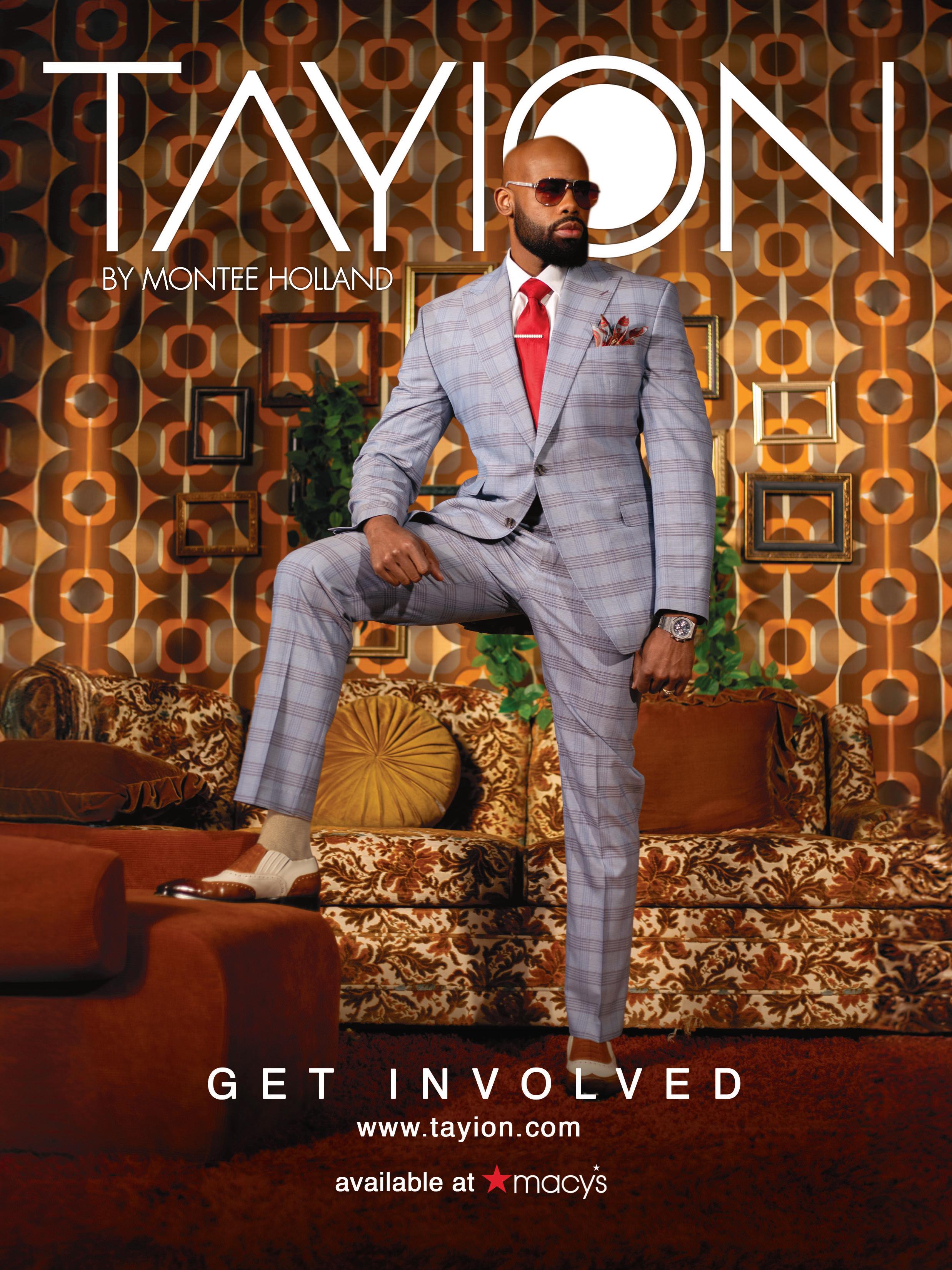 PHOTOGRAPHY BY JEFFREY ROSE
STYLING BY MICHAEL MACKO
PHOTOGRAPHY BY JEFFREY ROSE
STYLING BY MICHAEL MACKO
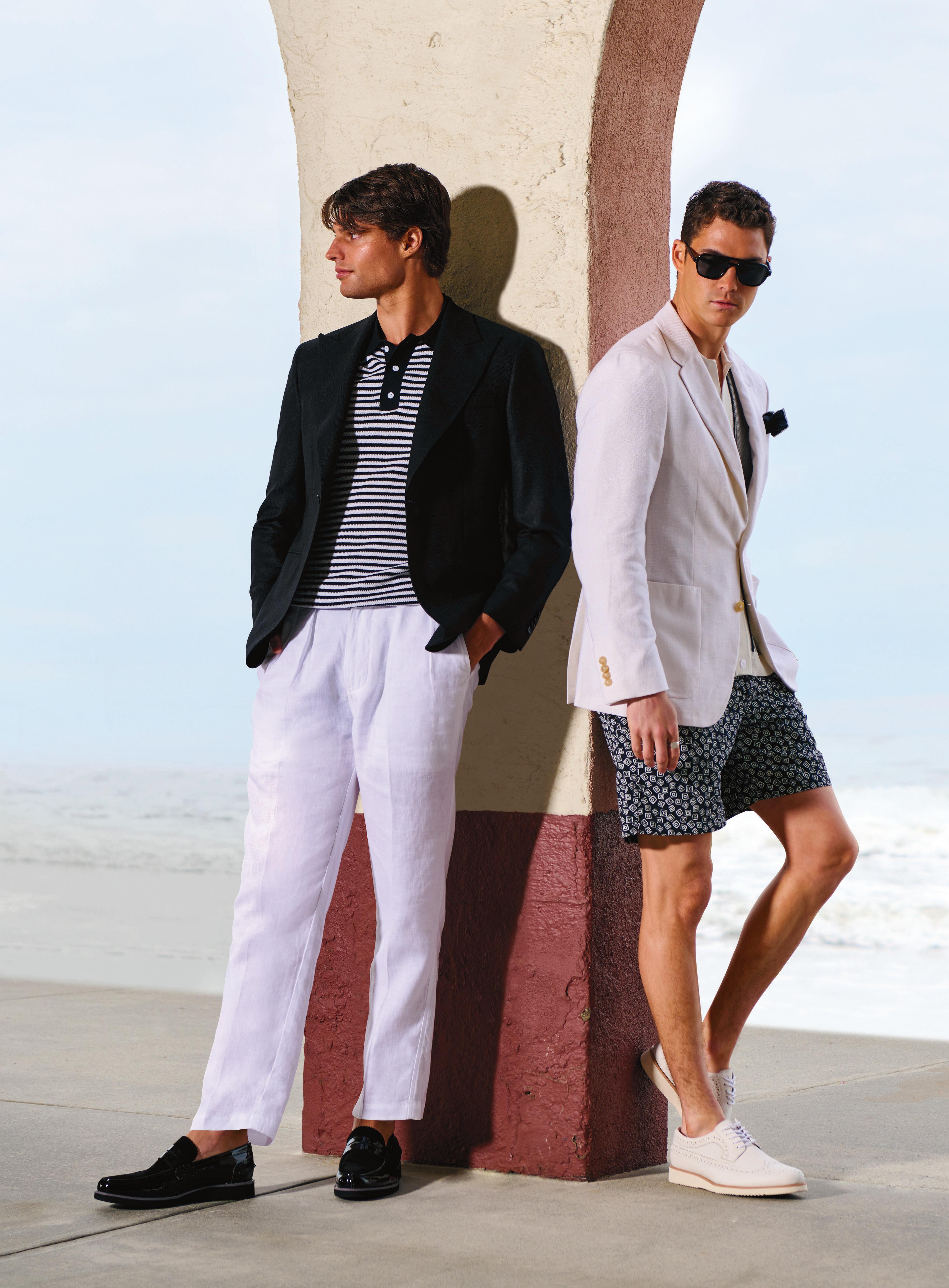
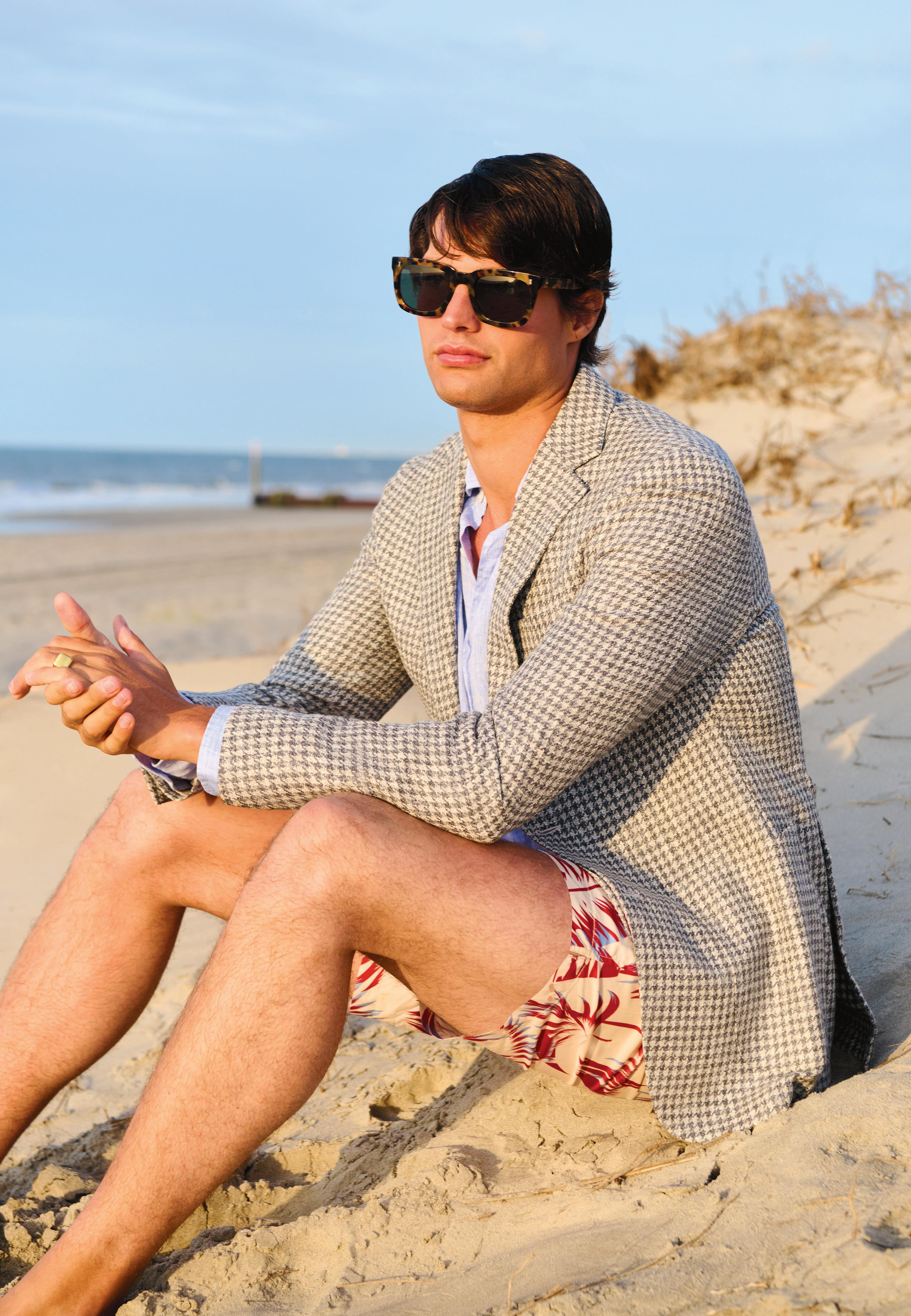
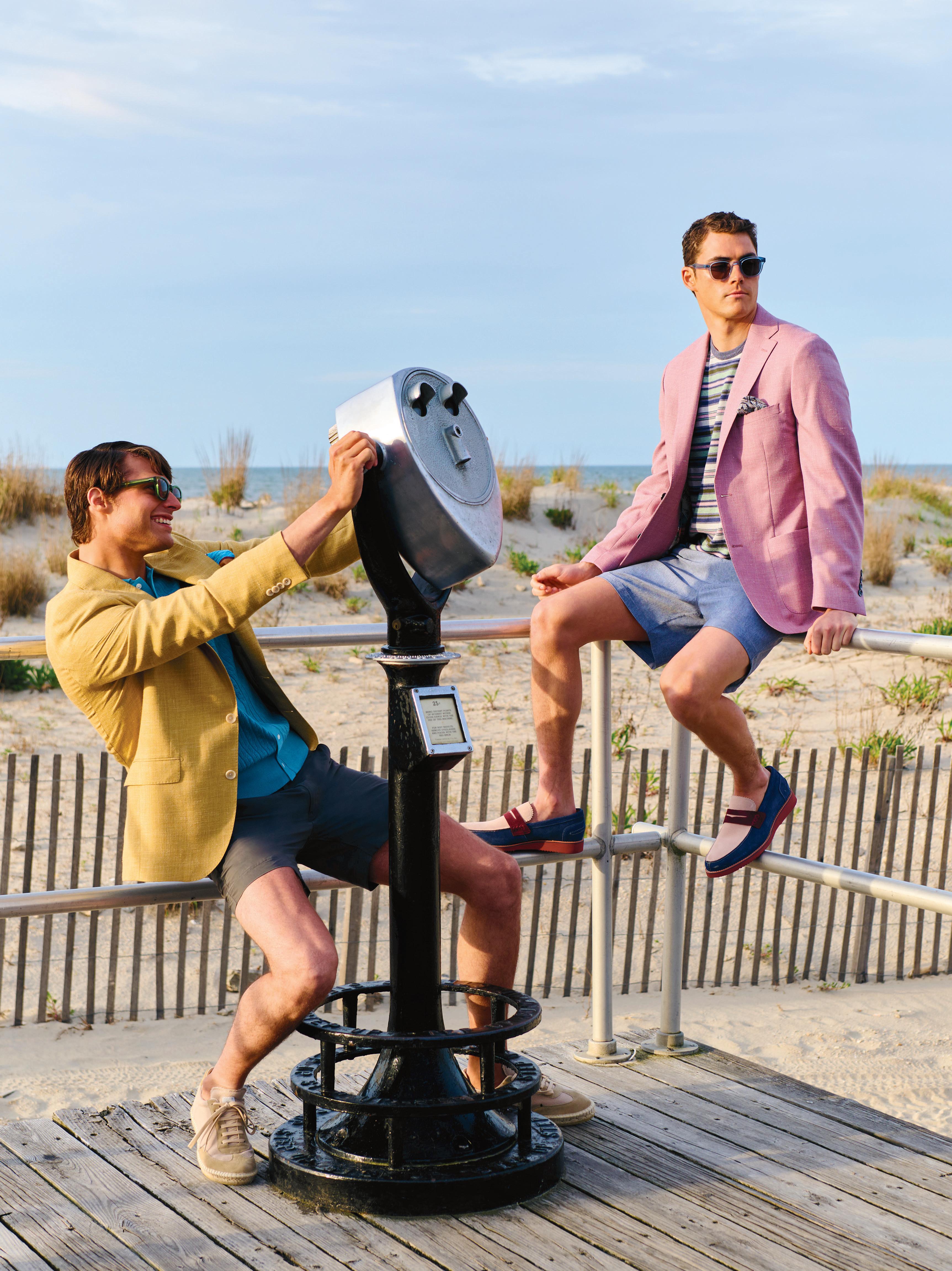 Left, on Cole: Jack Victor sport coat, Brooks Brothers knit polo and pocket square, Billy Reid shorts, Cubitts sunglasses, and Eleventy shoes. Right, on Spencer: Tallia sport coat, Robert Talbott knit shirt, Fair Harbor bathing suit, Jack Victor pocket square, Cubitts sunglasses, and Marc Nolan shoes.
Left, on Cole: Jack Victor sport coat, Brooks Brothers knit polo and pocket square, Billy Reid shorts, Cubitts sunglasses, and Eleventy shoes. Right, on Spencer: Tallia sport coat, Robert Talbott knit shirt, Fair Harbor bathing suit, Jack Victor pocket square, Cubitts sunglasses, and Marc Nolan shoes.
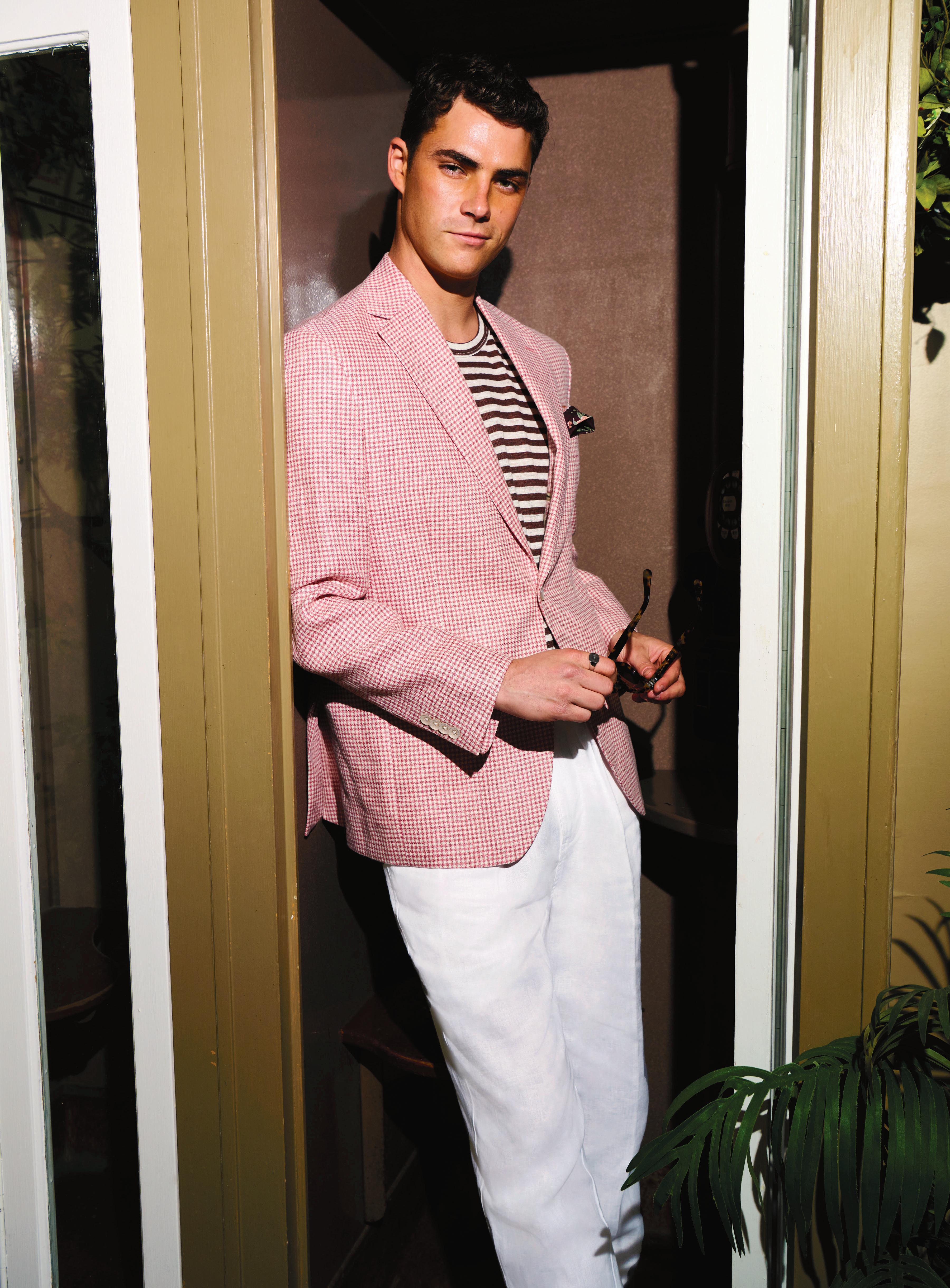
 Left, on Cole: Billy Reid suit, J. McLaughlin shirt, Brooks Brothers pocket square, Brunello Cucinelli belt and bag, Jared signet ring, DIFF Eyewear eyeglasses, and Marc Nolan shoes.
Right, on Spencer: Isaia sport coat and pants, Eton shirt, Brooks Brothers pocket square, Jared ring, Morgenthal Fredericks sunglasses, and Marc Nolan shoes.
Left, on Cole: Billy Reid suit, J. McLaughlin shirt, Brooks Brothers pocket square, Brunello Cucinelli belt and bag, Jared signet ring, DIFF Eyewear eyeglasses, and Marc Nolan shoes.
Right, on Spencer: Isaia sport coat and pants, Eton shirt, Brooks Brothers pocket square, Jared ring, Morgenthal Fredericks sunglasses, and Marc Nolan shoes.
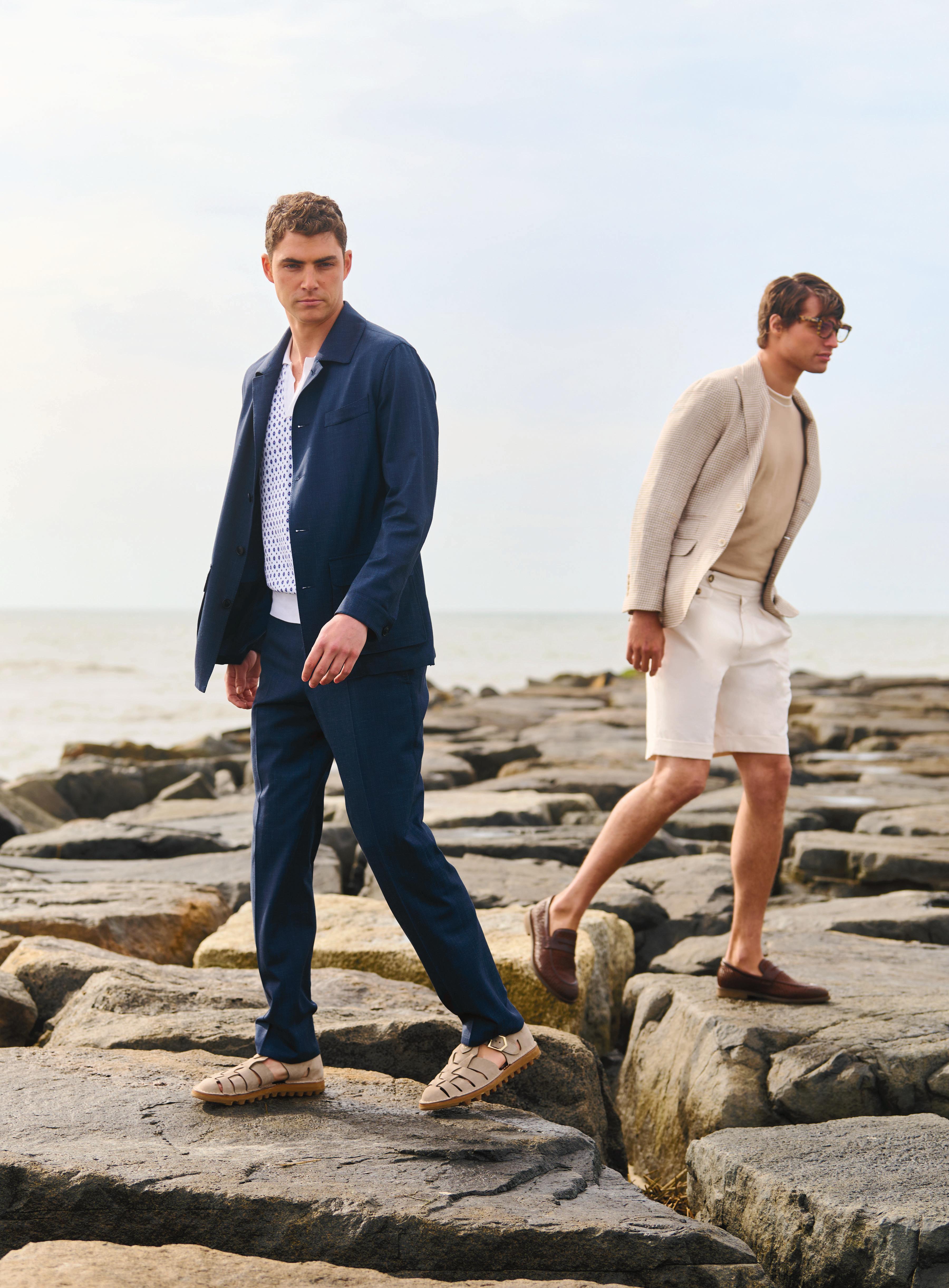
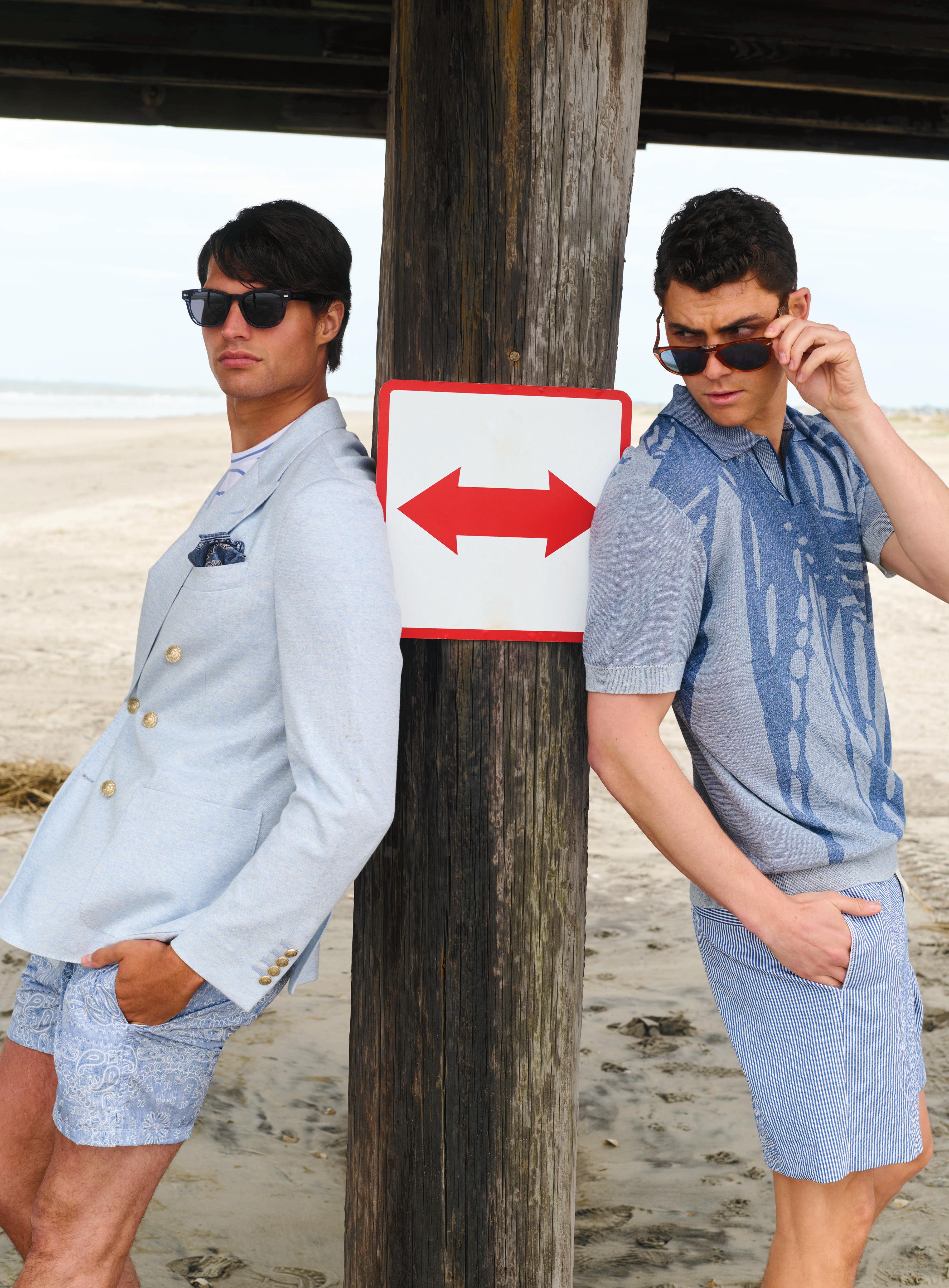 Left, on Cole: Eleventy sport coat, knit shirt, bathing suit, and pocket square, and Morgenthal Fredericks sunglasses. Right, on Spencer: Bugatchi knit polo, Orlebar Brown bathing suit, and Persol, sunglasses.
Left, on Cole: Eleventy sport coat, knit shirt, bathing suit, and pocket square, and Morgenthal Fredericks sunglasses. Right, on Spencer: Bugatchi knit polo, Orlebar Brown bathing suit, and Persol, sunglasses.
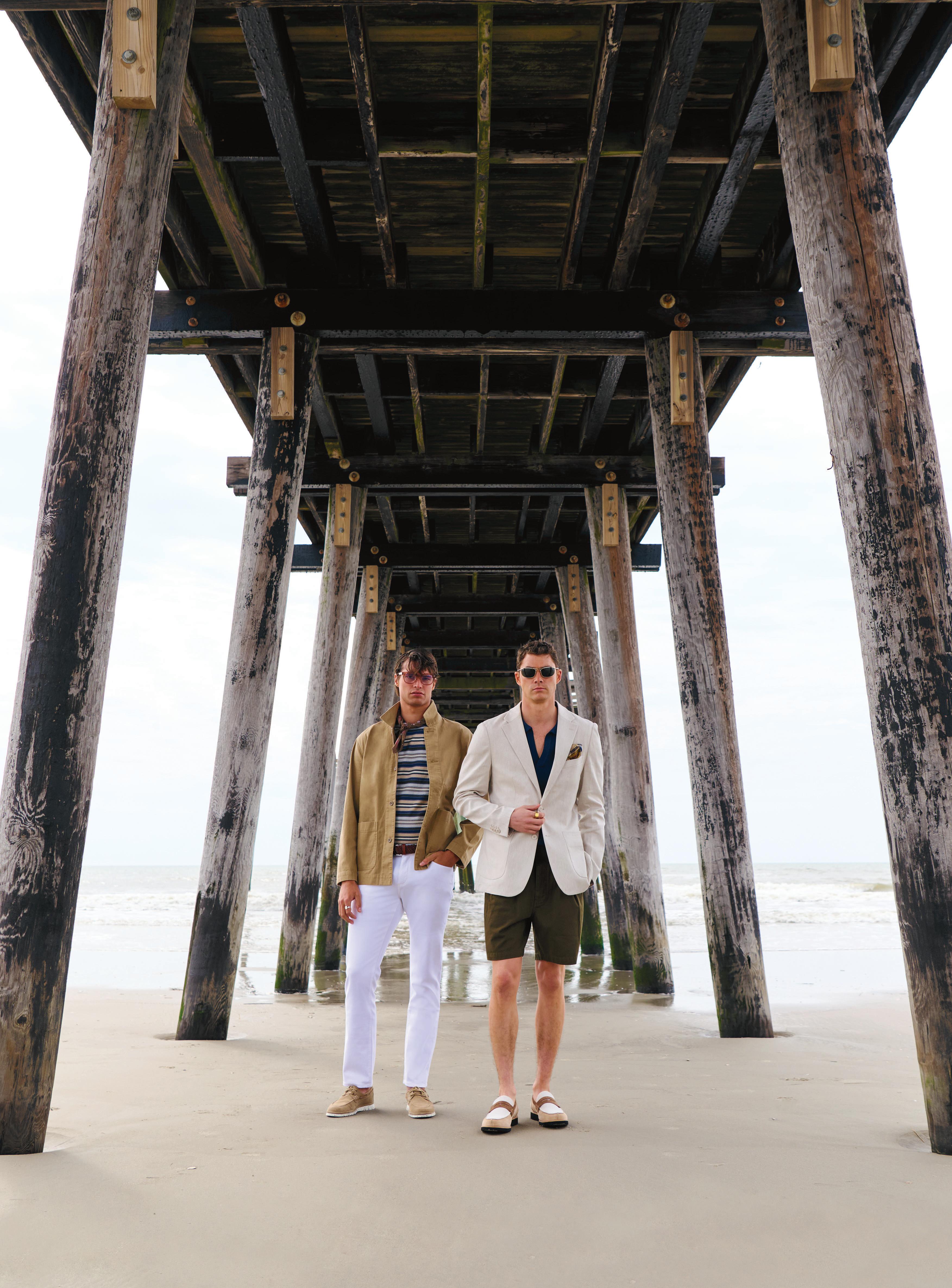
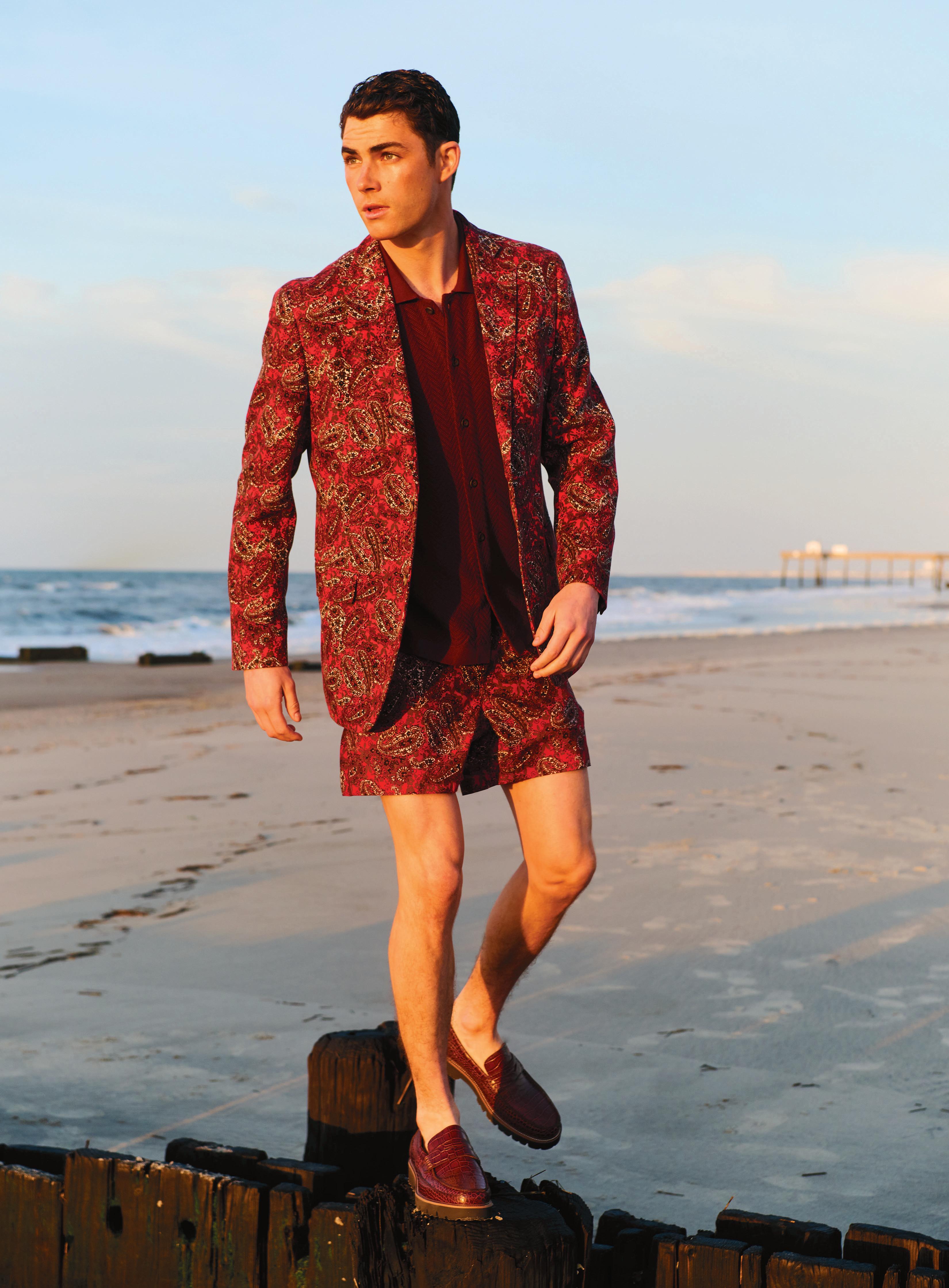 On Spencer: Brooks Brothers sport coat and bathing suit, Taylor Stitch knit polo, and Marc Nolan shoes.
On Spencer: Brooks Brothers sport coat and bathing suit, Taylor Stitch knit polo, and Marc Nolan shoes.
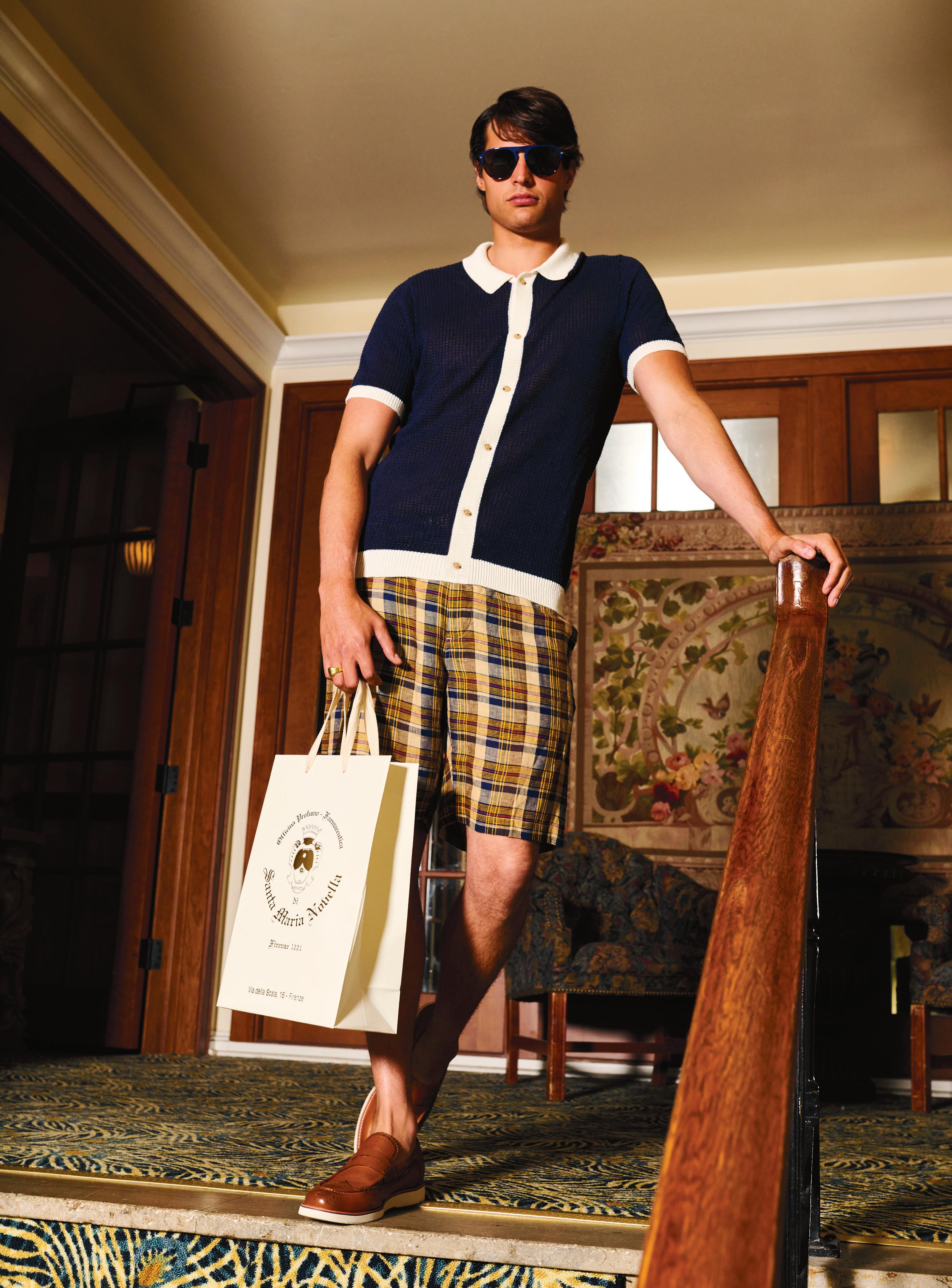
New York Model Management, Cole Tallman/Soul Artist Management; photography assistant: Patrick Driscoll; styling assistant: Lauren Corcoran.
MR Magazine would like to thank Peter Voudouris and the staff of The Flanders Hotel in Ocean City, New Jersey for their hospitality while hosting us during this shoot. Please visit them if you have the opportunity.
On Cole: Onia knit polo, J. McLaughlin shorts, Jared signet ring, Persol sunglasses, and Marc Nolan shoes. Photography by Jeffrey Rose; styling by Michael Macko; grooming by Wesley O’Meara/Honey Artists; models: Spencer Nauman/
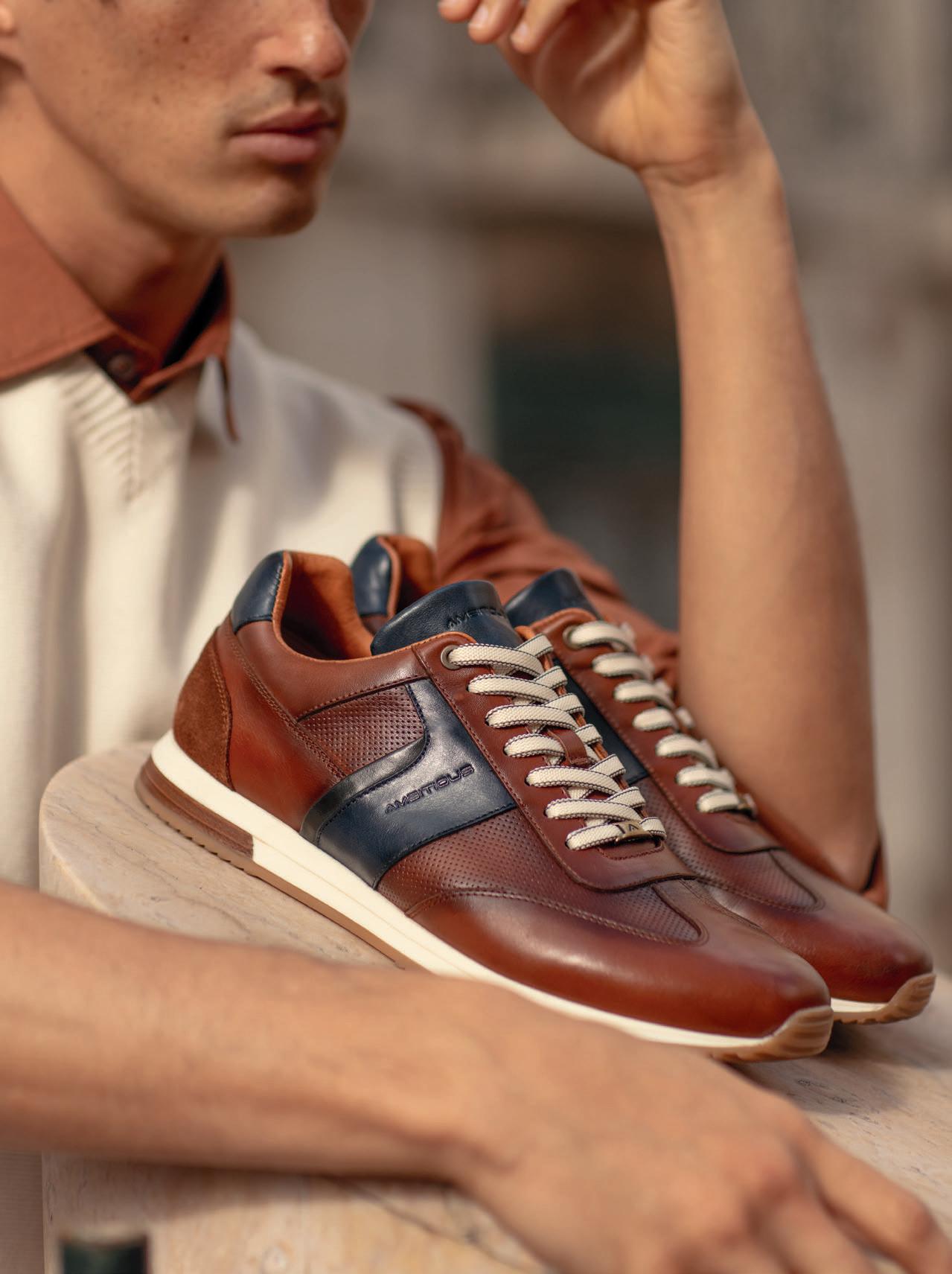
EMAIL DEAN@BOSANDCO.COM
ELLEN PRICE
CONTACT 1 781 599 8173
EMAIL EJPRICE222@AOL.COM
NEW YORK’S BEST MENSWEAR SHOW
PARK CENTRAL HOTEL, NEW YORK
870, 7TH AVE. NEW YORK, NY 10019
JULY 14-16, 2024
ATLANTA SHOE MARKET
COBB GALLERIA CENTRE
BOOTH #1337 -1343 AND #1436 -1442
AUGUST 10-12, 2024
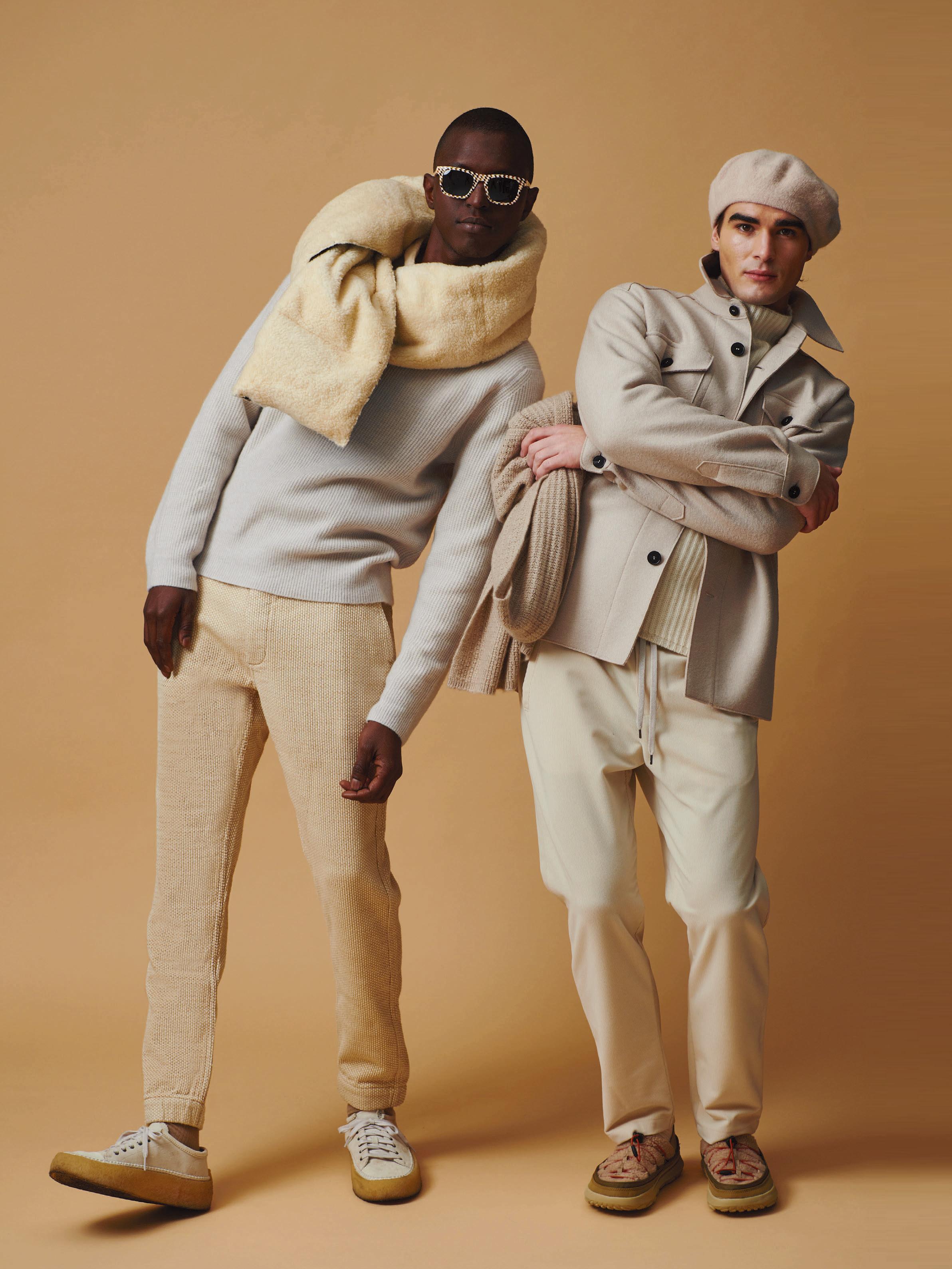


“You’ll never need an extra button” is a promise the execs at Hiltl often assure their customers. Confident that their top-quality buttons will never break or get loose, this is just one of many guarantees easy for the Hiltl team to deliver upon.
In fact, the resounding message of this exceptional brand is and has always been quality. Founded in 1955 by Fritz and Hedwig Hiltl, the company is known for creating the best pants in the world at affordable prices (suggested retails from $195-$325). They never aimed to be the biggest pant maker in the world, only the finest.
And almost 70 years later, quality remains Hiltl’s calling card. You can see it in their production process that involves sourcing the finest fabrics out of Italy, then combining hand cutting and sewing with advanced technology. You can see it in the experience of their workers, many who have been with Hiltl for 30+ years. This expertise is balanced by a contingent of young employees bringing to the design team a fresh, modern perspective.
Other Hiltl assets: a design team that each season travels to Milan, Paris, London and NYC for inspiration; an updated classic fit (natural waistline, slightly tapered leg) designed for the U.S. market; a focus on tailored fits and quality materials in both business and casual styles; a fabric mix featuring natural fibers for an ultra-soft hand and maximum breathability; an in-stock program with 3- to 4-day delivery!
But don’t take our word for it; listen to the merchants who sell it. Says Ashton Greene of H. Stockton in Atlanta, “Hiltl represents timeless trousers that are at once familiar yet refreshingly updated. Khakis that a man wants to wear, and that his wife doesn’t hate. Our customers enjoy the superior fabric quality, the excellent construction, and a signature fit that touches on modern but remains classic. We do remarkably well with their Supima sateen poplin-weight cottons in bright punchy colors; our workhorse is their Essential Cotton in the U.S. fitthe Dayne. We also feature their Dude 5-pockets in washed canvas, and their perennial denims, which have garnered a cult-like following.”
Retailers can check out Hiltl’s new Spring Summer ‘25 collection in NYC (35 W. 36th St), Chicago, LA, Dallas, and Charlotte. For an appointment: USA: Paul Poole | 917-535-1603 | prpoole@mac.com USA: Erwin Wieser | 917-854-7646 | E.Wieser@hiltl.de Canada: Sean Linton | 905-467-1485 | slinton1014@gmail.com


While many retailers like to brag about their market finds, sometimes a collection comes along that’s too fabulous to share. Olliver Grey, an upscale clothing brand launched in 2015 by Balfour Clothing in Toronto, is the brainchild of Balfour’s CEO John Greco and creative director Umberto Dall’Agnese. Seeing a void in the market for finely crafted Italian sport coats that don’t cost thousands of dollars, these two well-respected clothing execs developed a sport coat line featuring luxury fabrics, striking patterns, top-quality tailoring, and suggested retails starting at $850. Optimizing their longstanding relationships with fabric mills and production facilities in Italy has allowed them to maintain costs while delivering quality
clothing that puts a fashionable spin on the classics. Most importantly, it’s clothing that fits American men!
This season at the Dallas Men’s Show, retailers can meet the Olliver Grey team and preview the Spring/Summer ’25 Collection featuring lightweight sport coats, suit separates, and a luxury denim collection, all crafted in Italy. For stores that can handle specified minimums, store branded product is also an option
Find Olliver Grey at Booth #121422 from July 26 to July 29, 2024, situated with fellow Canadian brands and other Italian-made tailored goods.
To apply to become a retail partner, visit ollivergrey.com
“WE ARE THE BRAND THAT RETAIL PARTNERS LIKE TO KEEP THEIR LITTLE SECRET”
—JOHN GRECO
Olshan extends heartfelt congratulations to our dear client and friend, George Feldenkreis, on his well-deserved Lifetime Achievement Award at the MR Awards Dinner. We are proud to celebrate this significant milestone with George and also extend our warmest congratulations to all the distinguished honorees.
bespoke2112.com

IN HIS SEMINAL NOVEL Remembrance of Things Past, French author Marcel Proust famously dunks a madeleine into a cup of tea, and the taste immediately transports him back to his idyllic childhood. This literary reference is often cited as an example of how much our senses, not just our brains, help us store and recall memories.
For me, the olfactory sense has always been the strongest. One whiff of the iconic pot pourri from the Officina Profumo Farmaceutica di Santa Maria Novella immediately takes me to the cobblestone streets of Florence and walking the buildings of the Fortezza da Basso at Pitti Uomo. It also reminds me of traveling since I perpetually keep a sachet of it in each of my Rimowa suitcases. Once, when taking one in to replace a wheel, the sales clerk remarked that it was the best-smelling suitcase he’d ever handled.
No visit to Florence is complete without a trip to the shop, where time stops, and you can imagine the Medici family sending servants to collect an unguent or scent, or Lucrezia Borgia, notoriously shopping for belladonna, cantarella, and other poisons. Only when you are checking out or looking to see whether a particular item is in stock do you realize that they have seamlessly blended technology so sophisticated as to be worthy of the lair of a James Bond villain.
The heady scent of the pot pourri, which is made up of bergamot, bitter orange, laurel, lavender, thyme, cloves, rosemary, patchouli, cedarwood, and balsam from Peru, has been produced in the Santa Maria Novella workshop for over three centuries and is as satisfying a trip to the hills of Tuscany as you can get without setting foot on an airplane.
